Lot 17
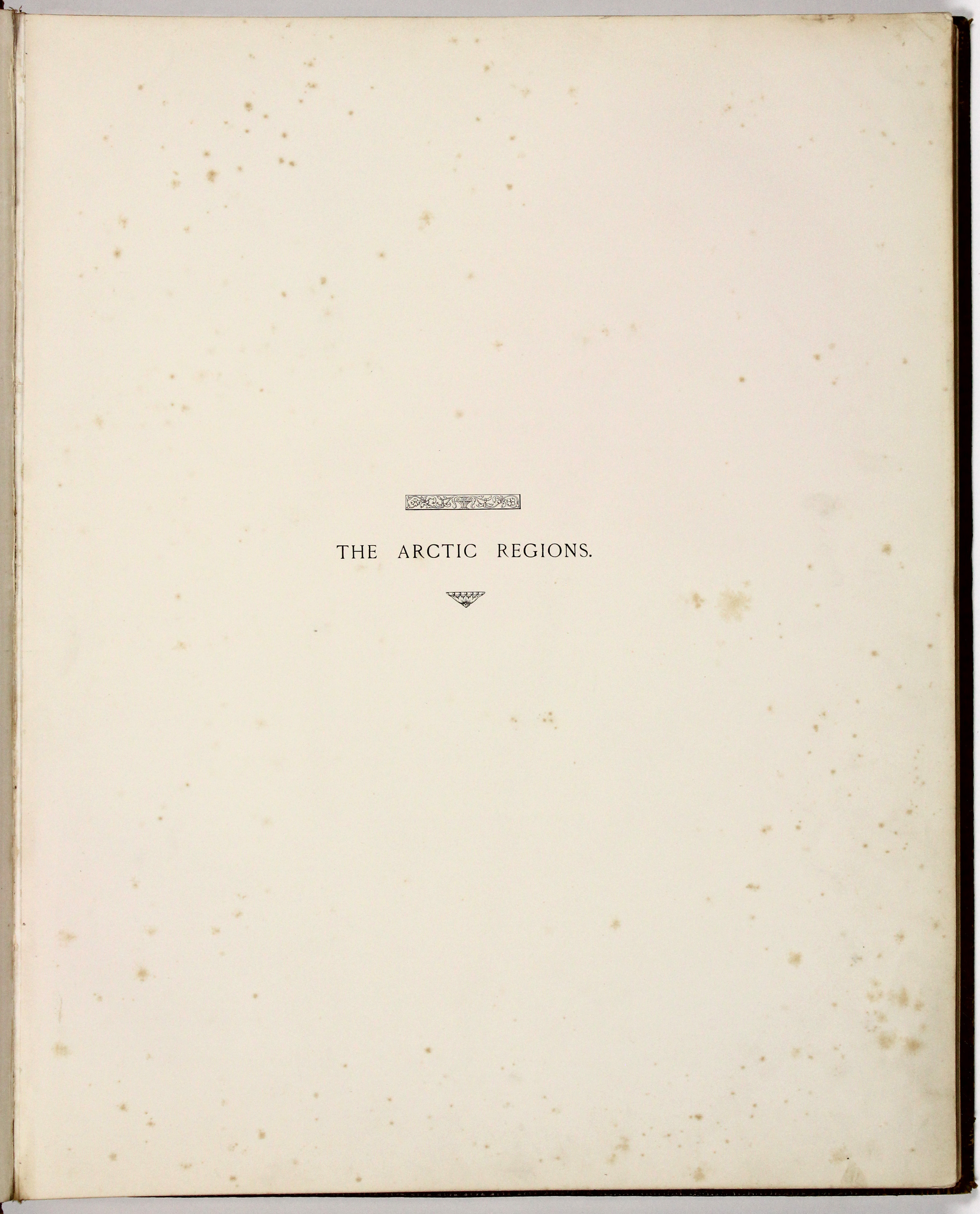
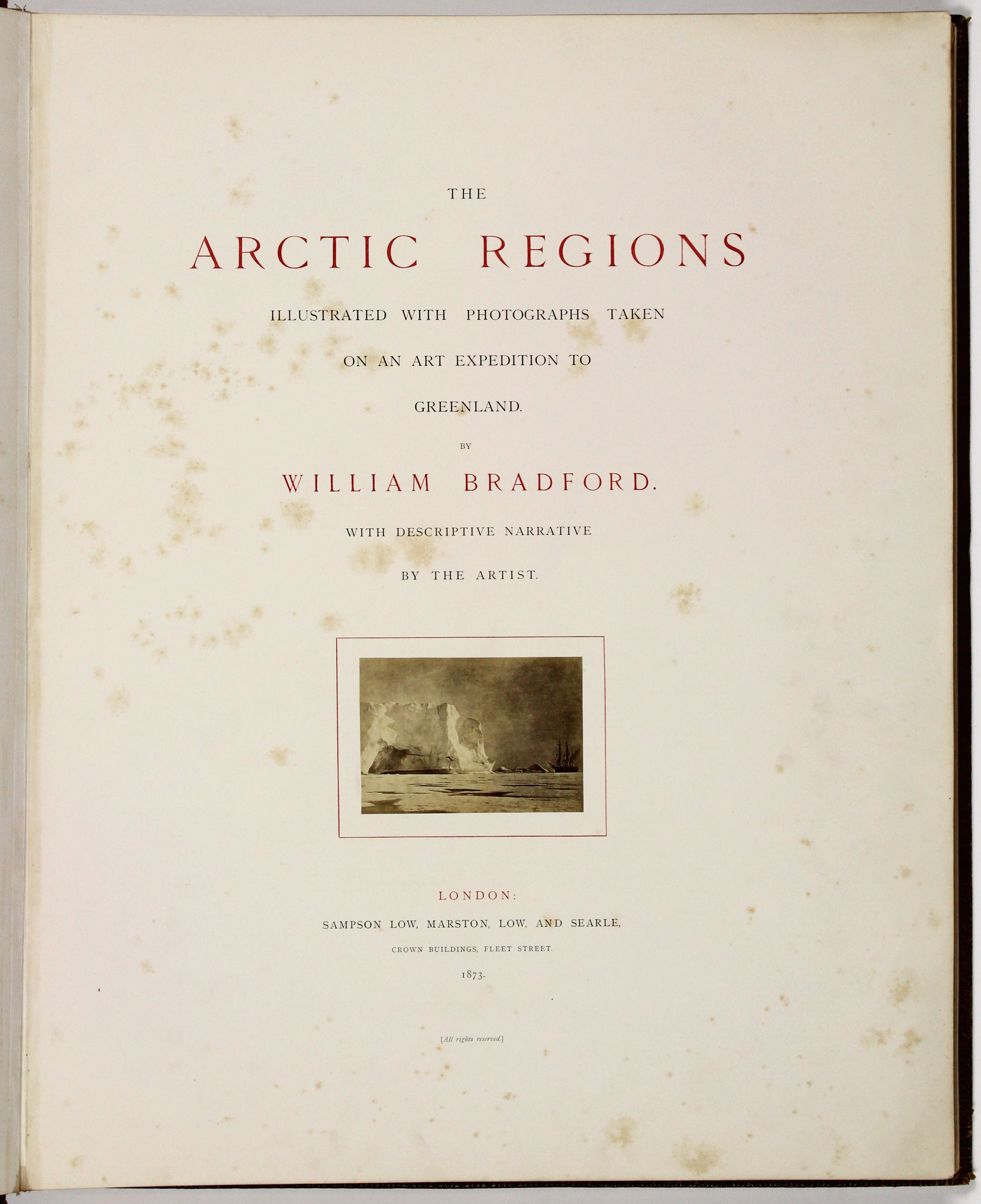
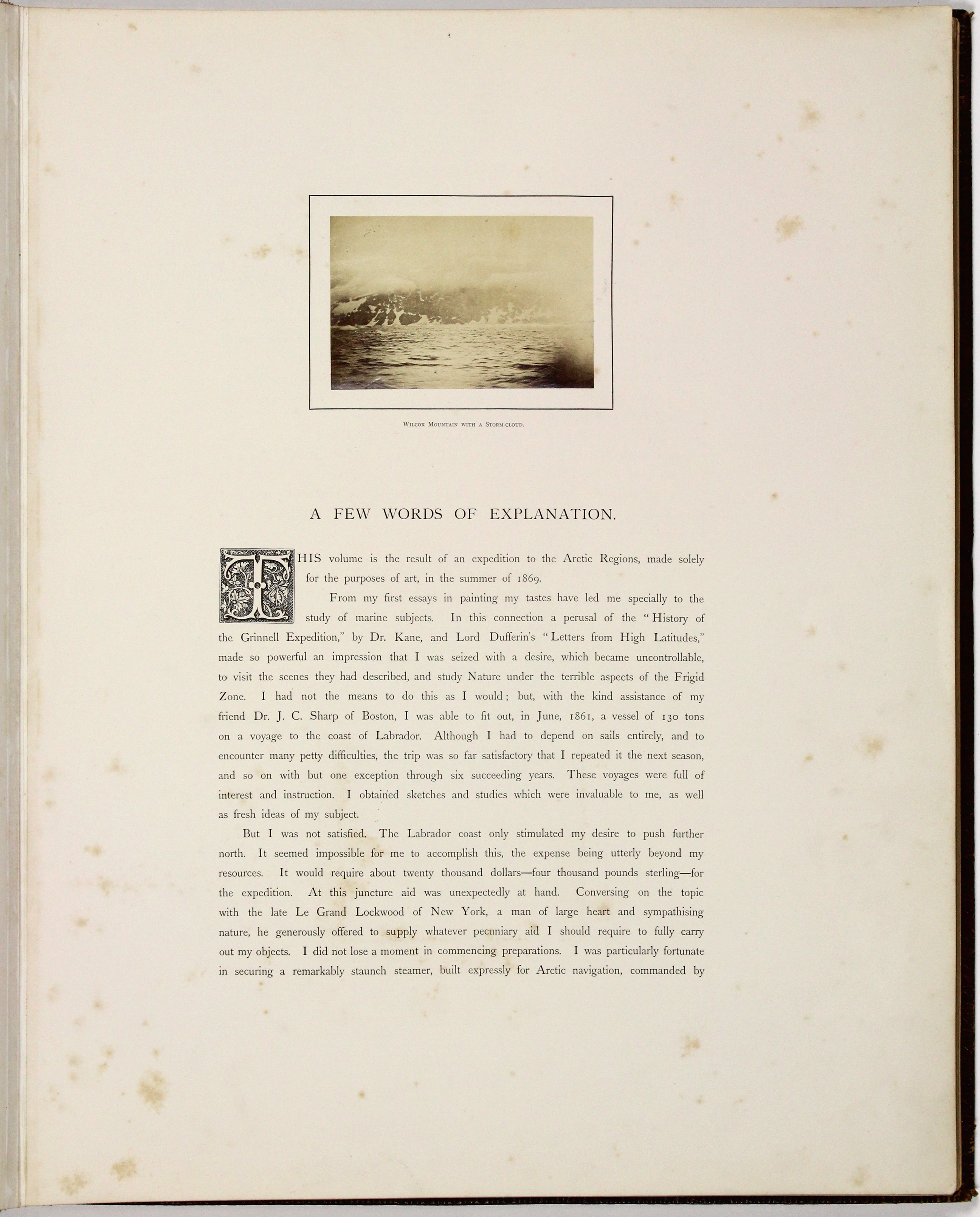
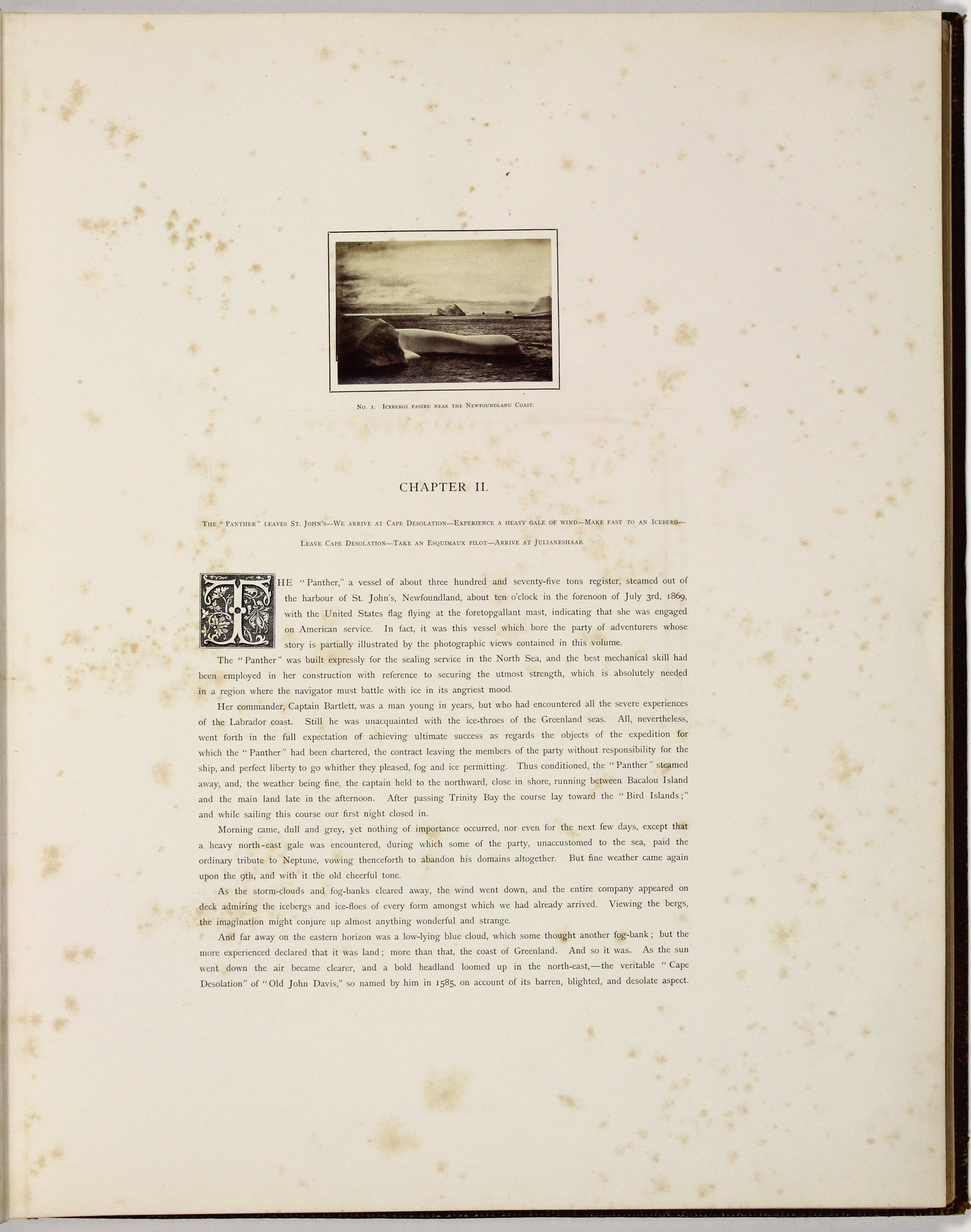
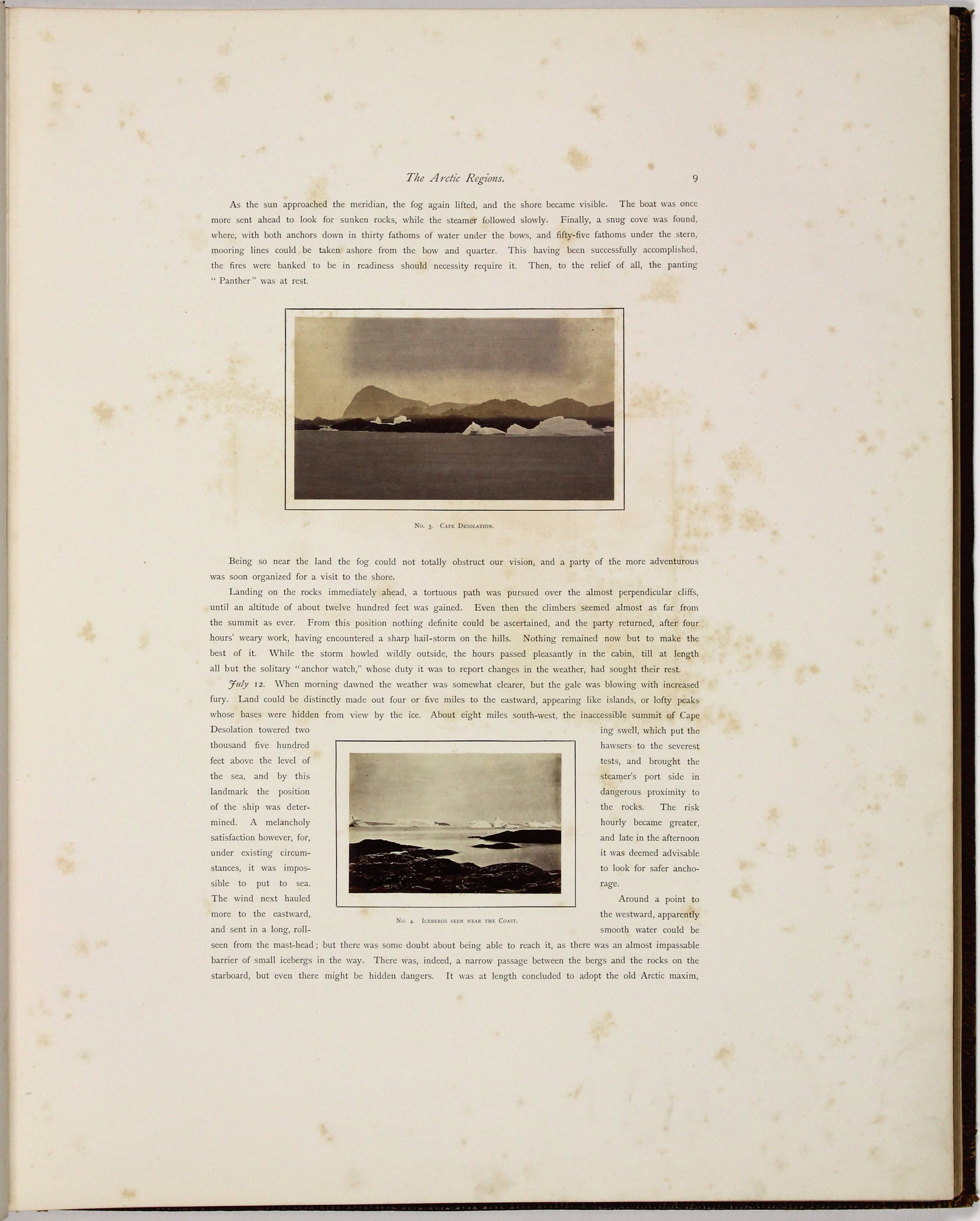
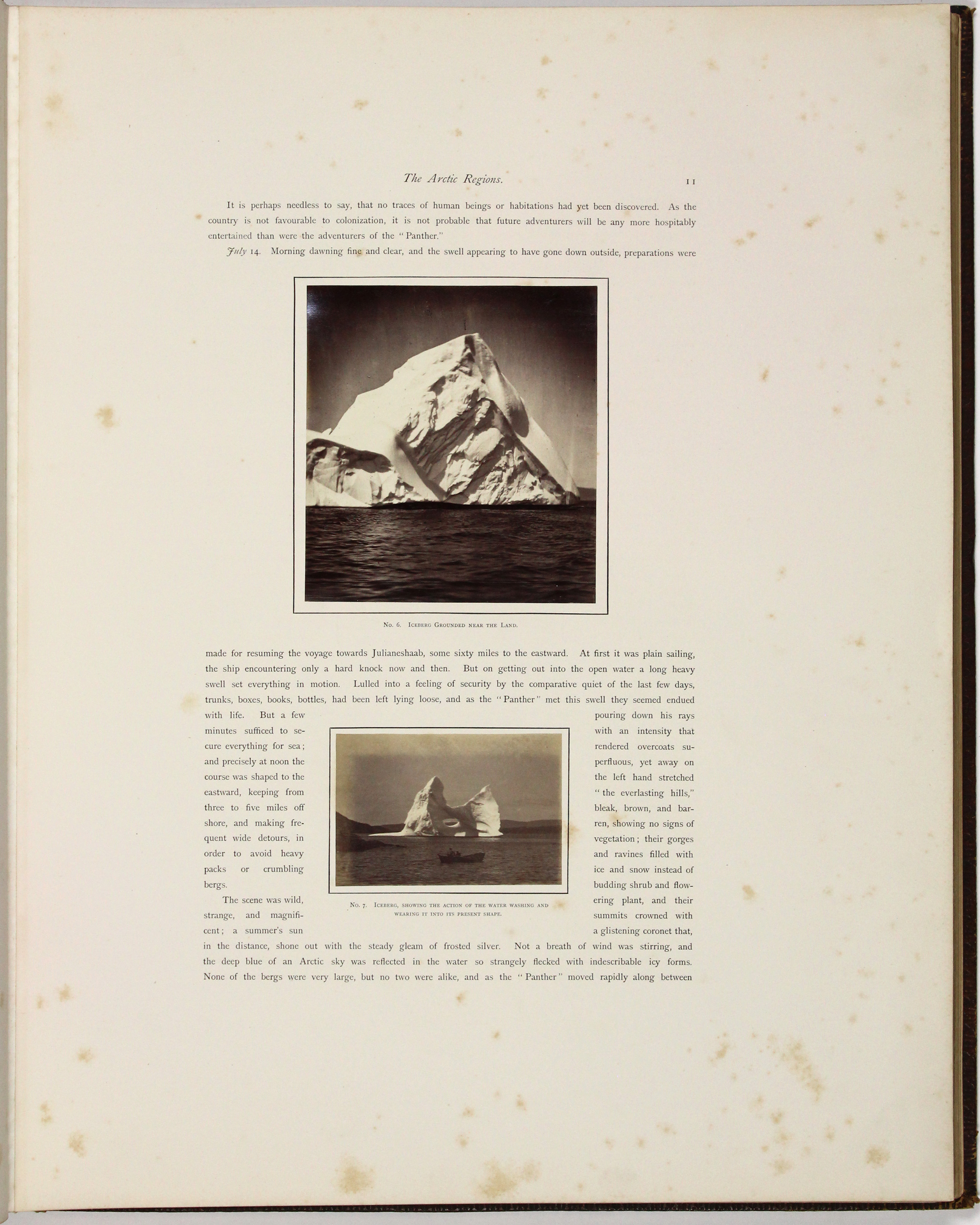
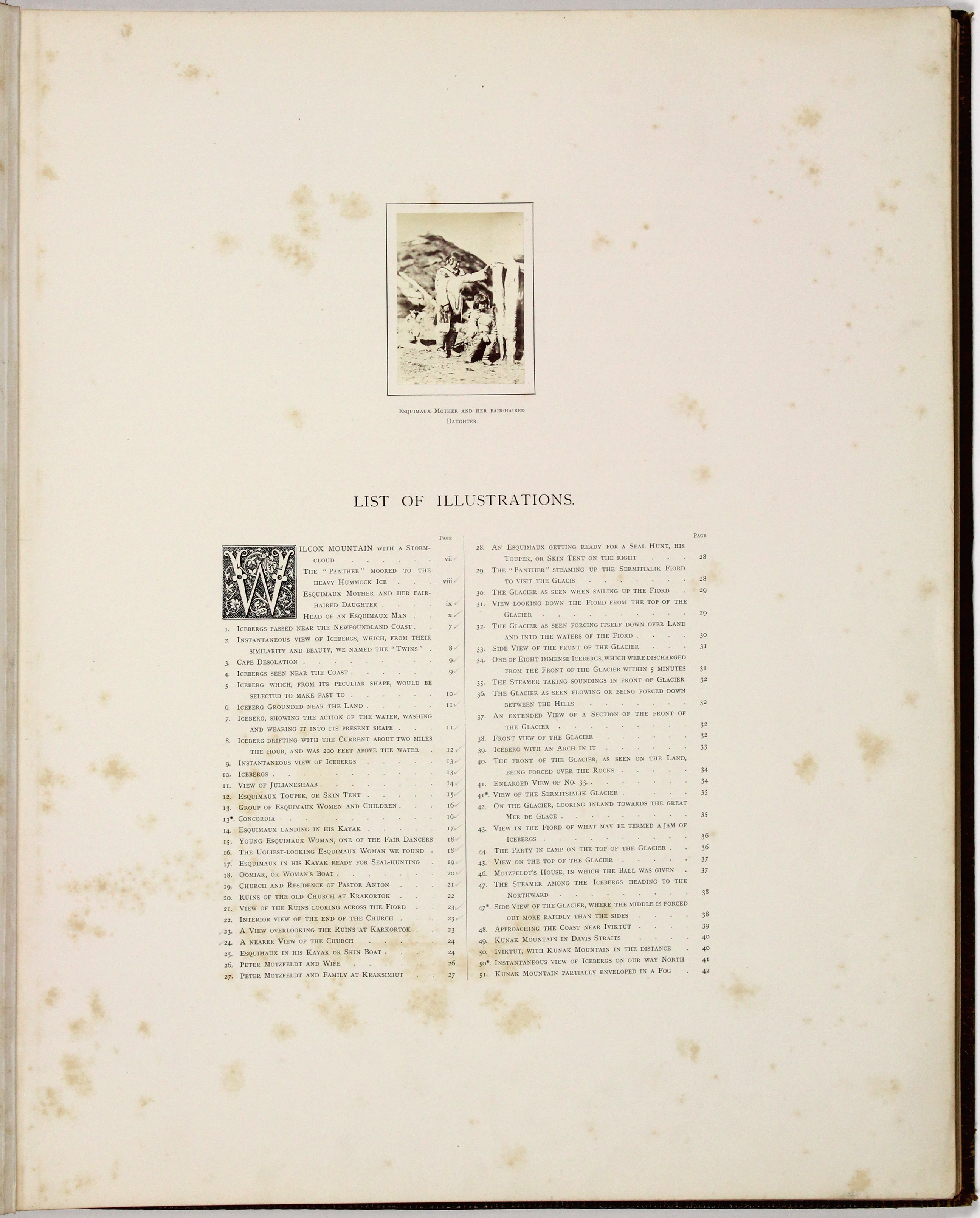
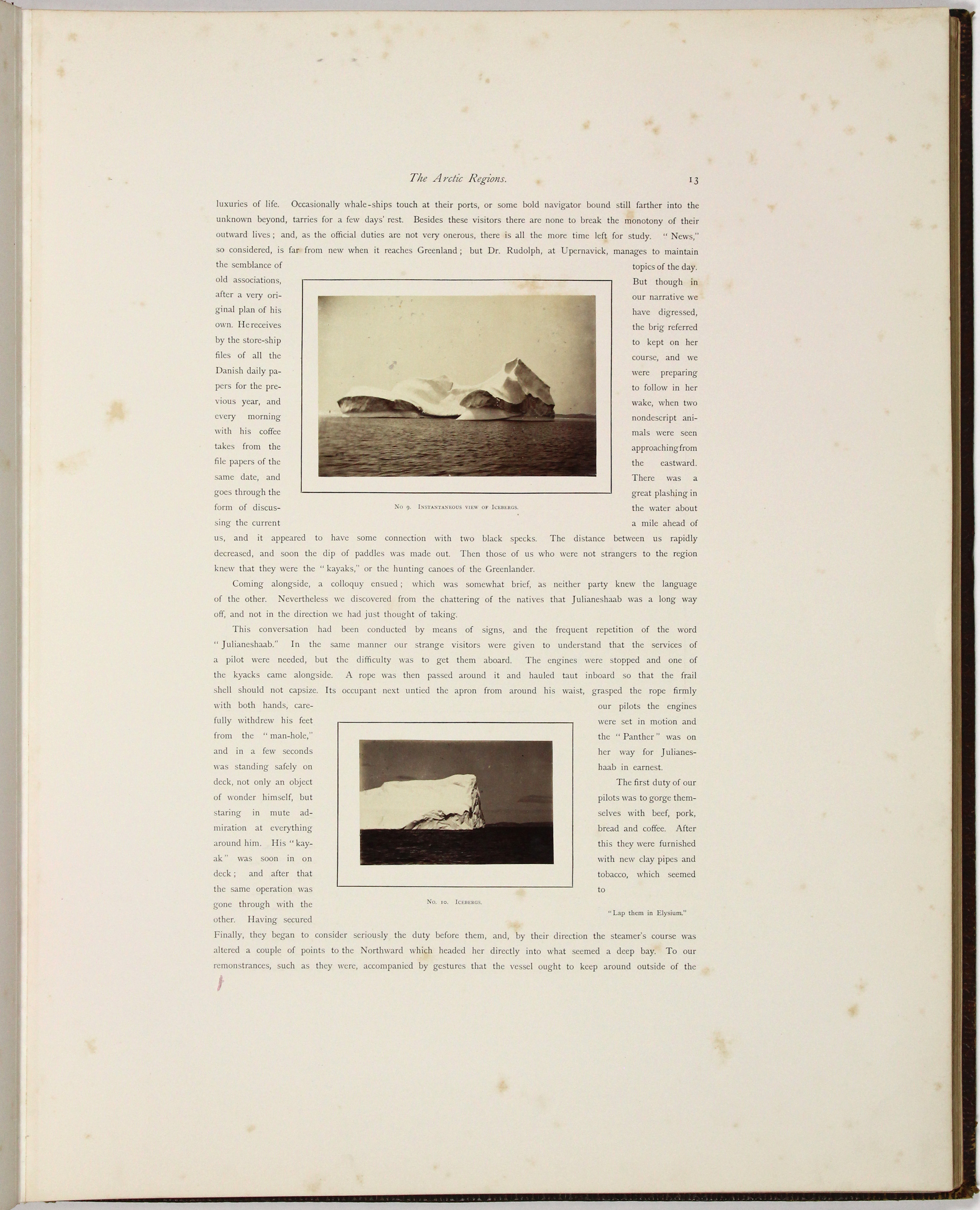
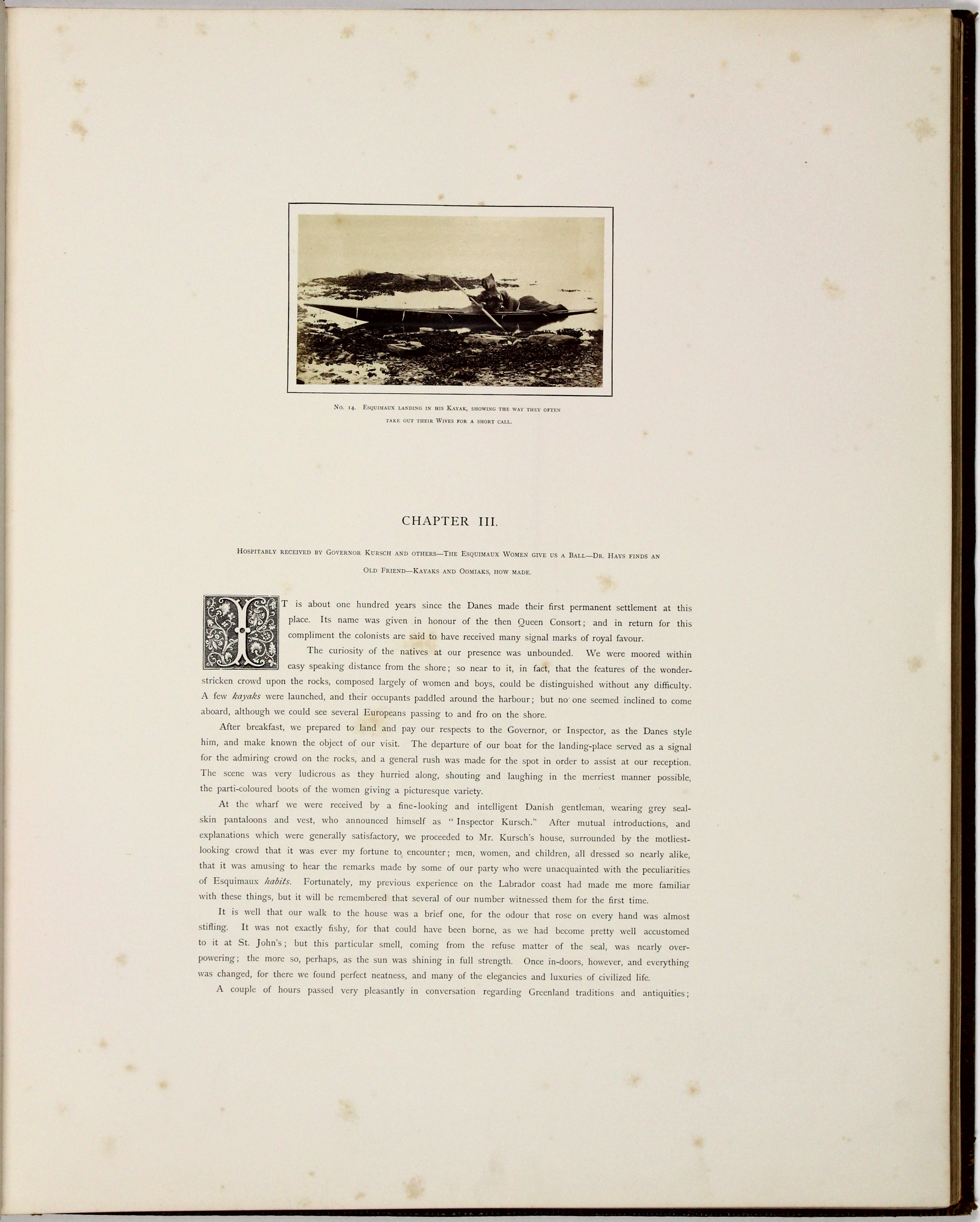
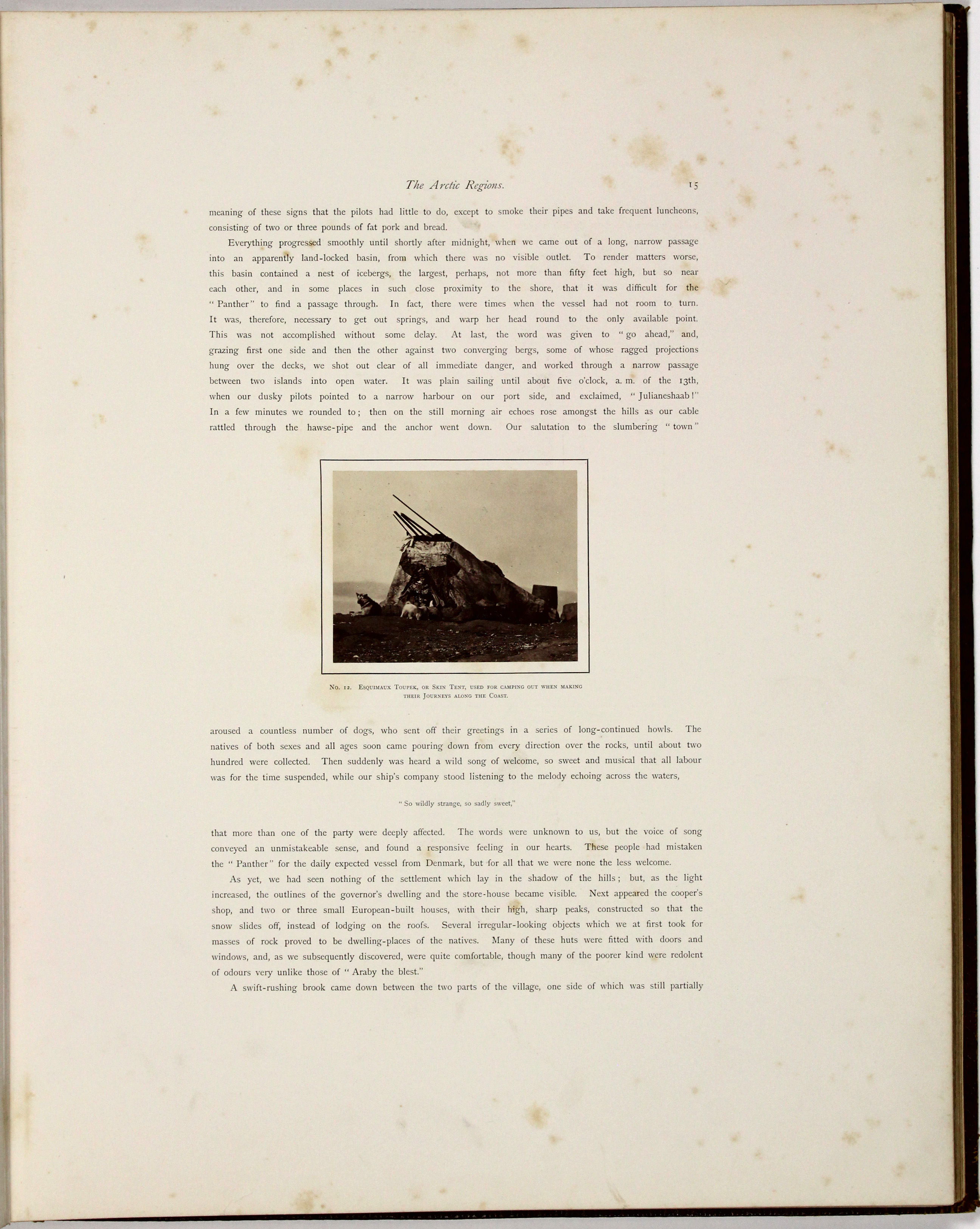
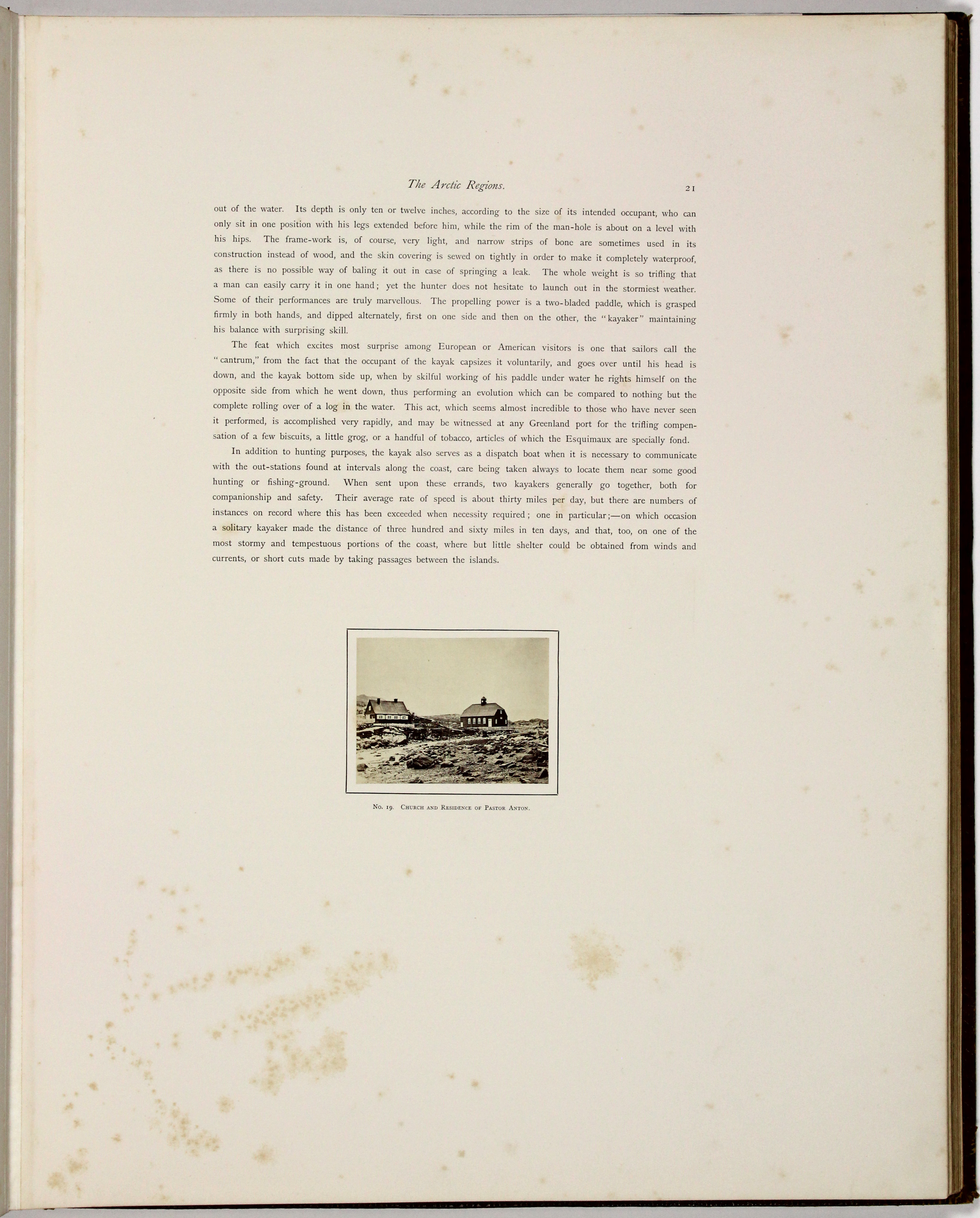
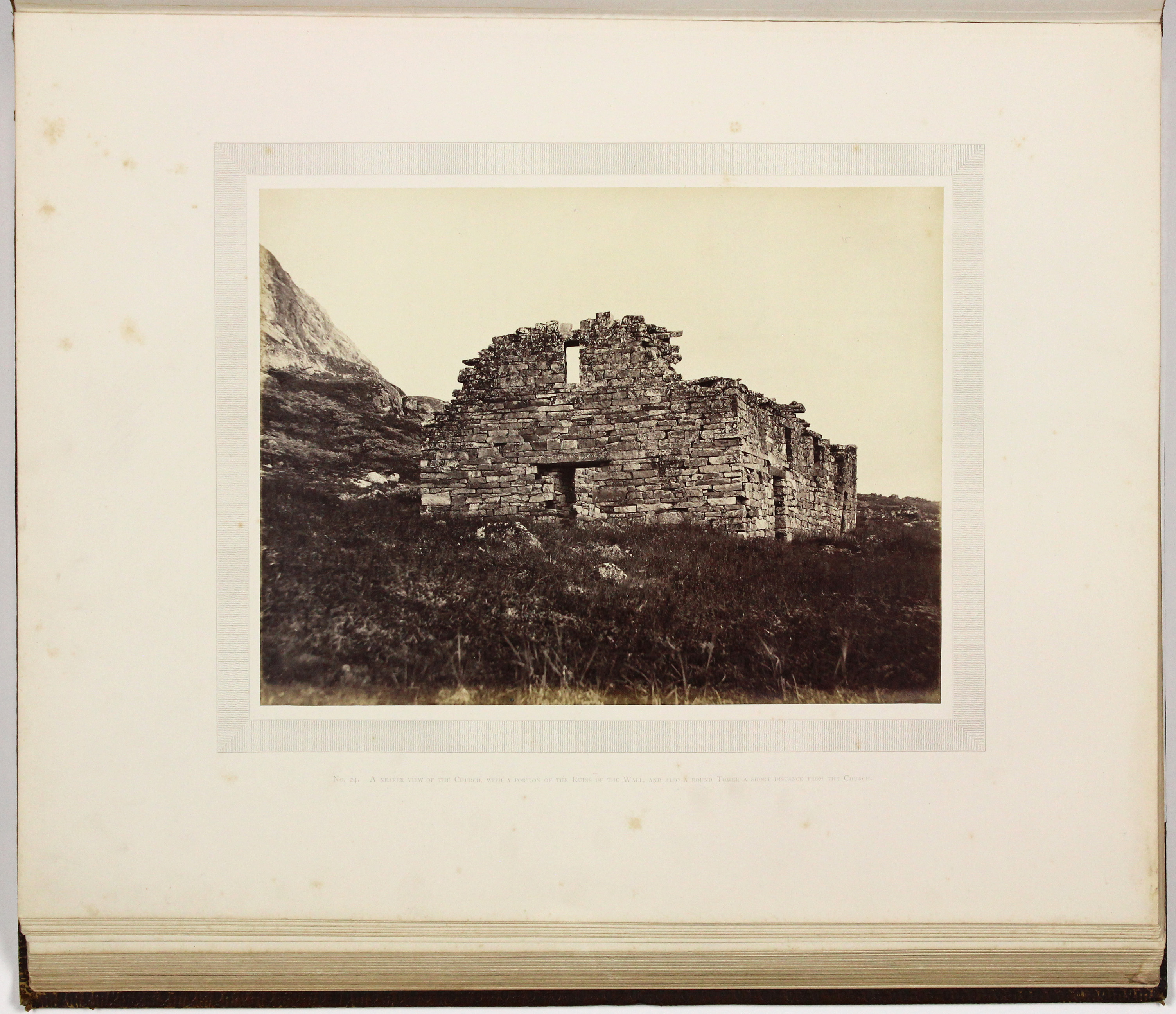
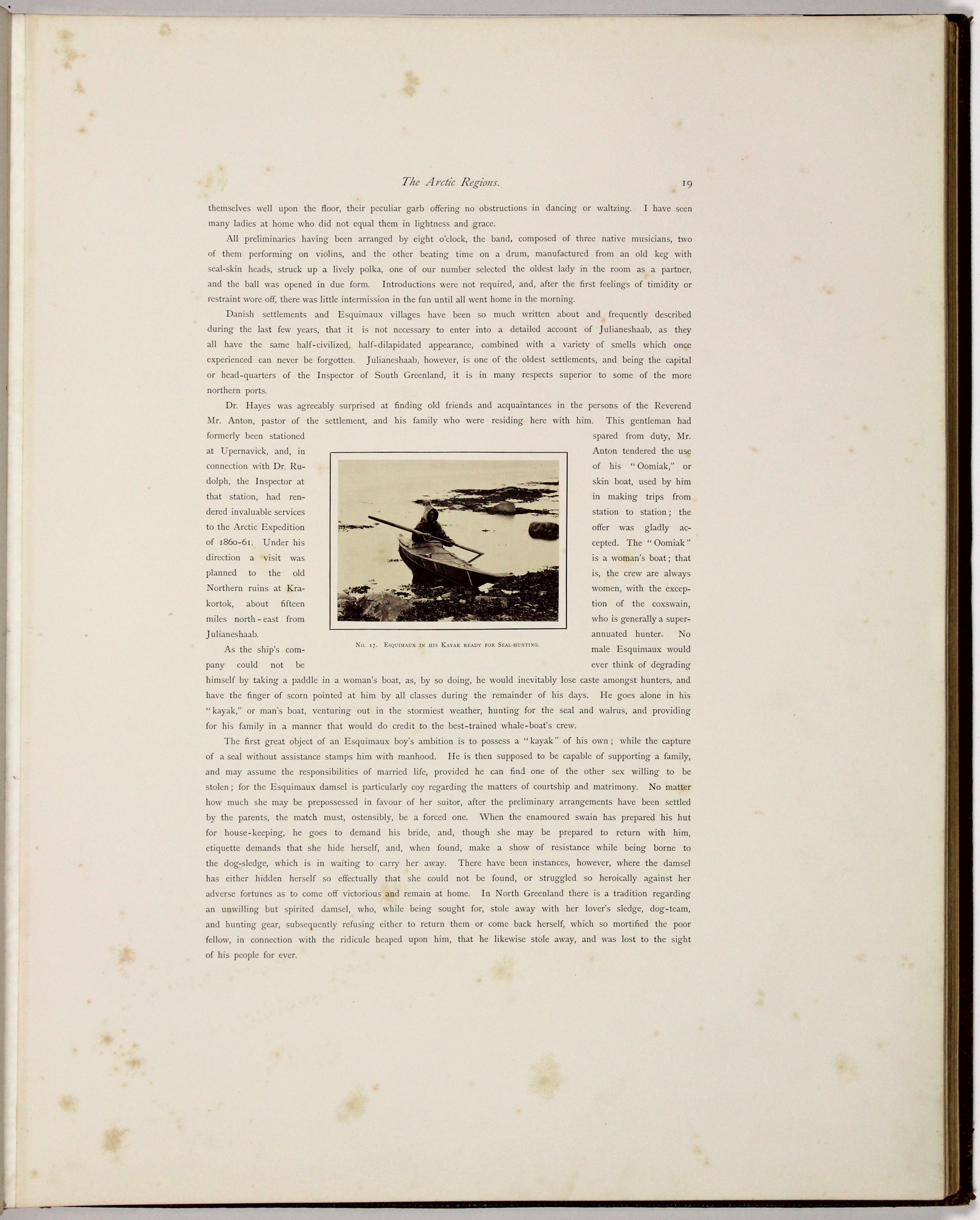
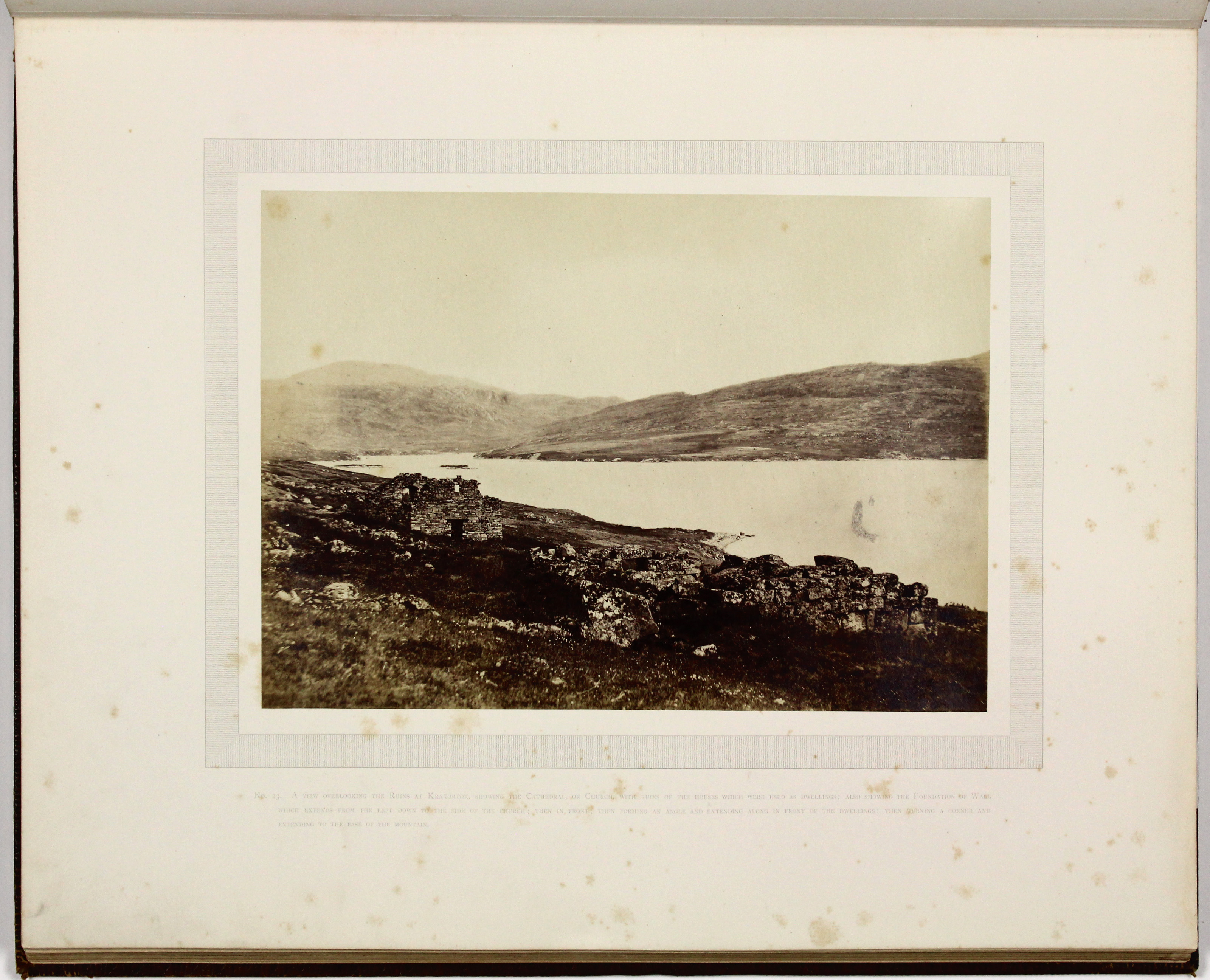
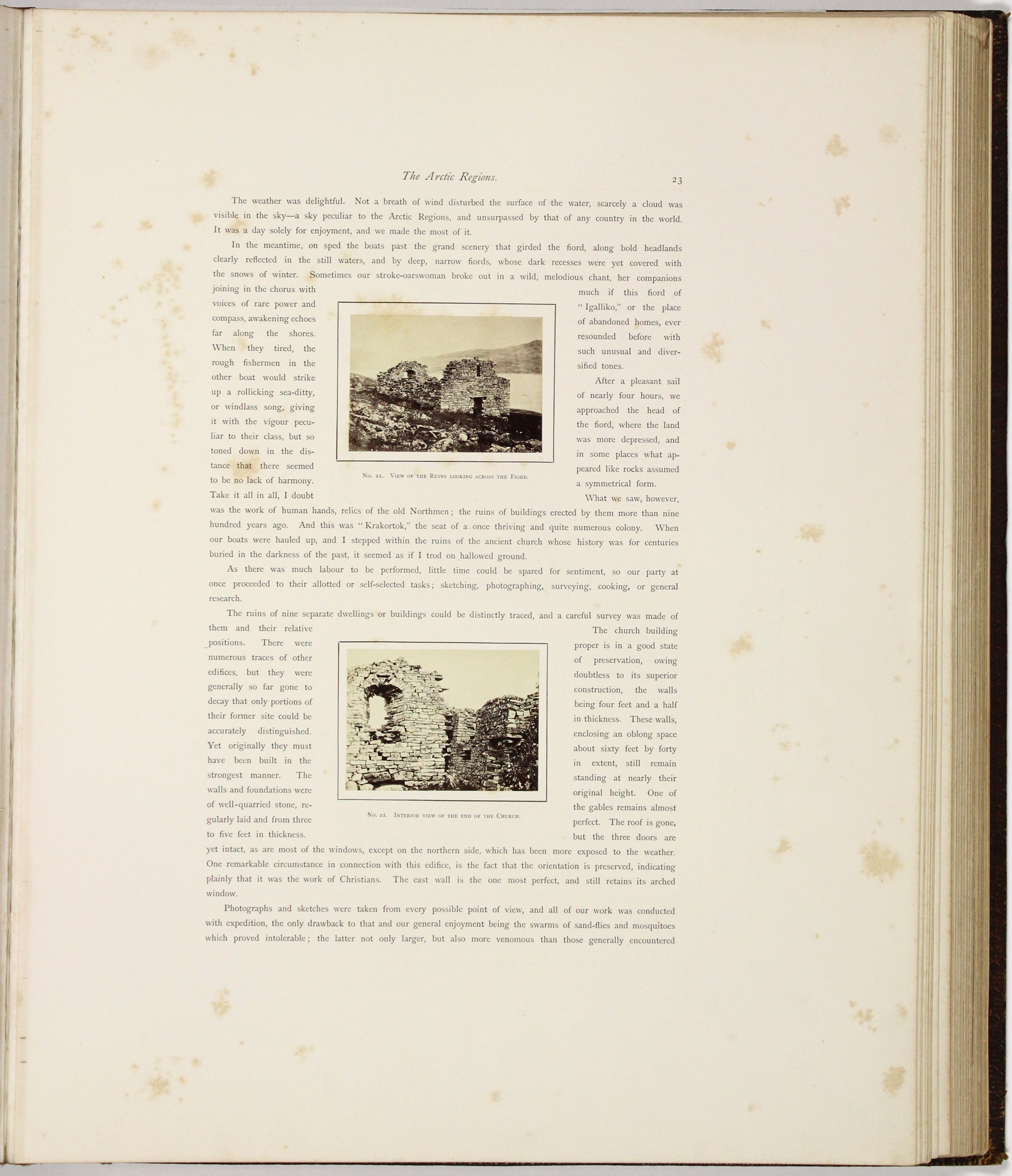
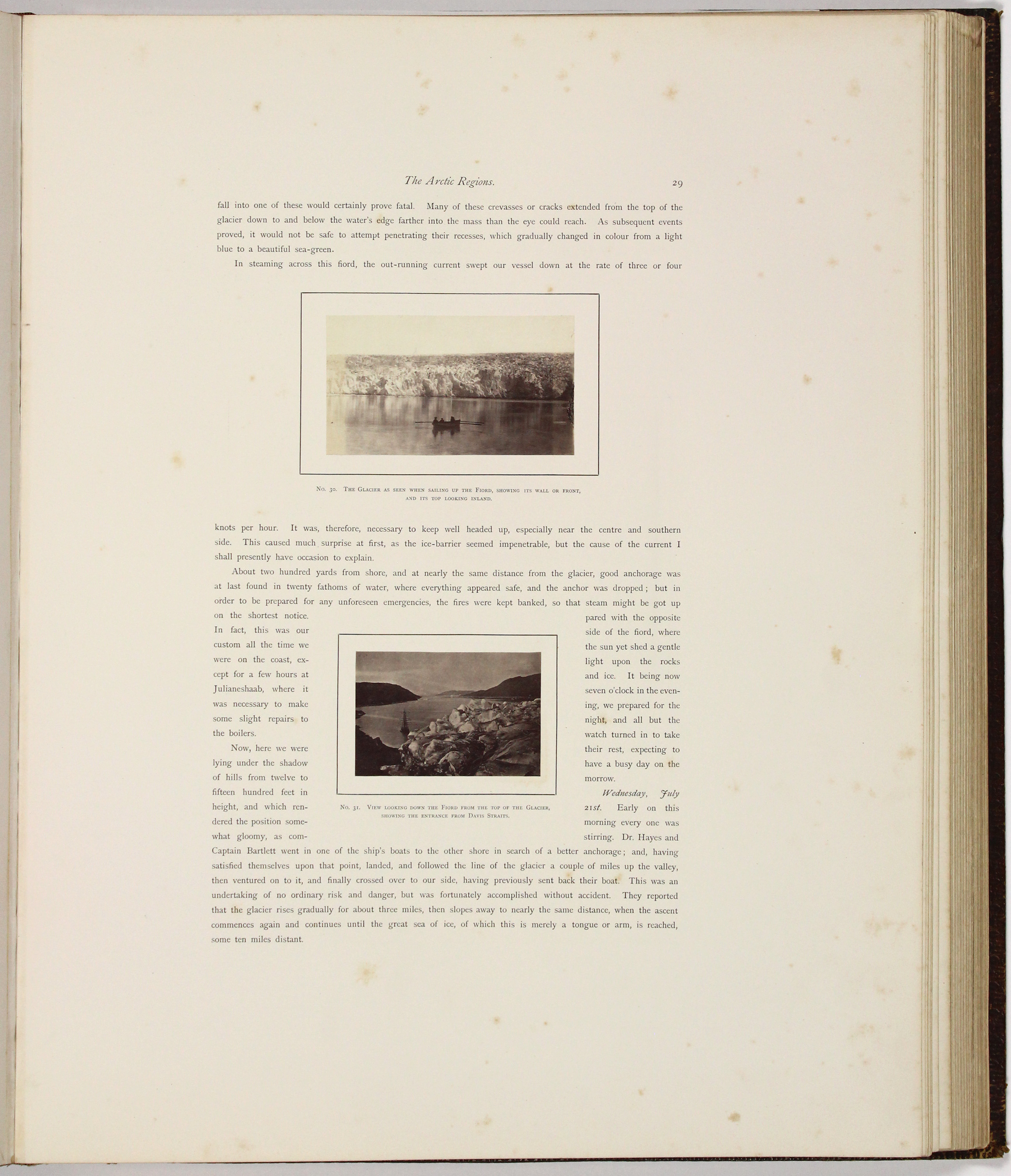
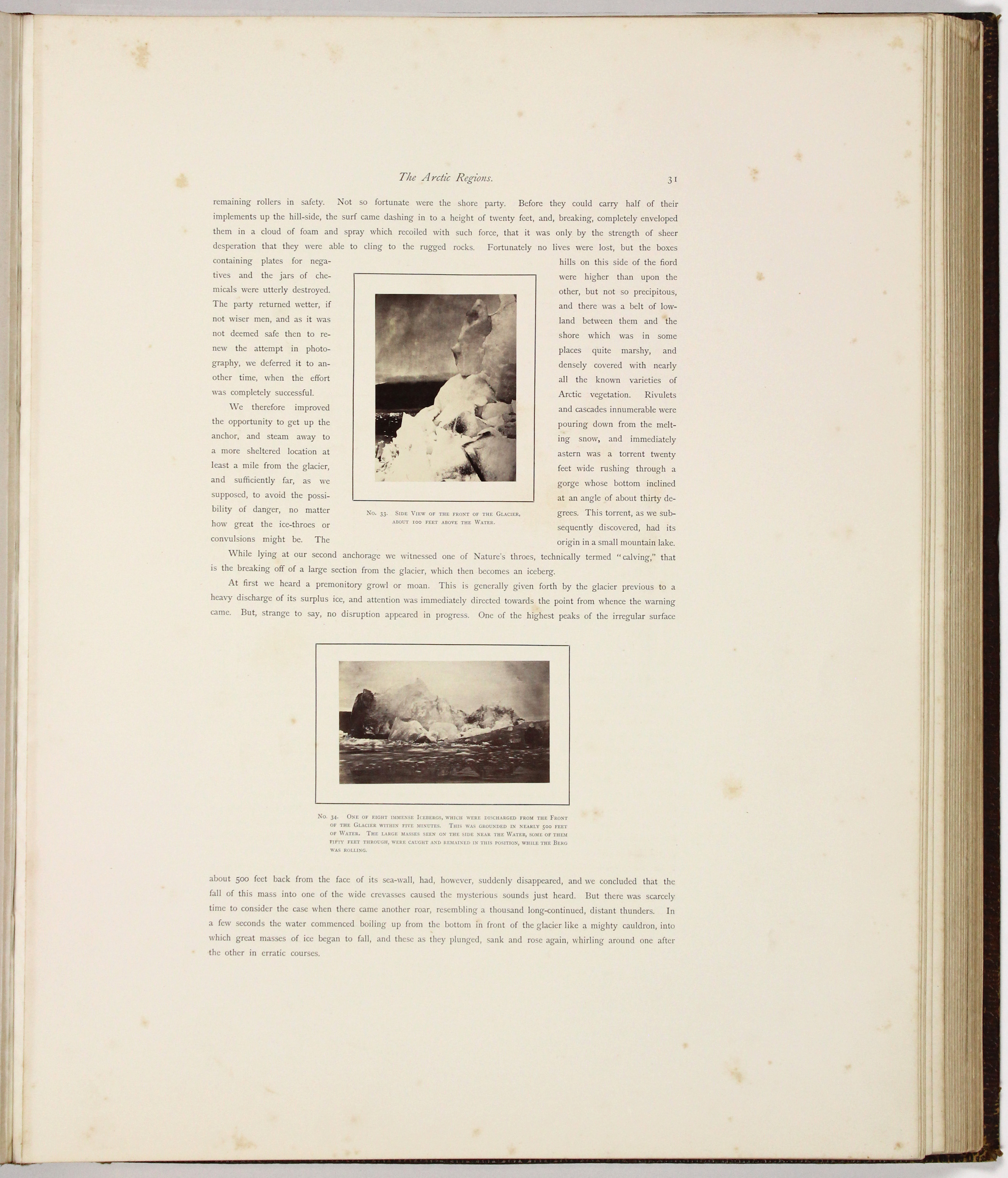
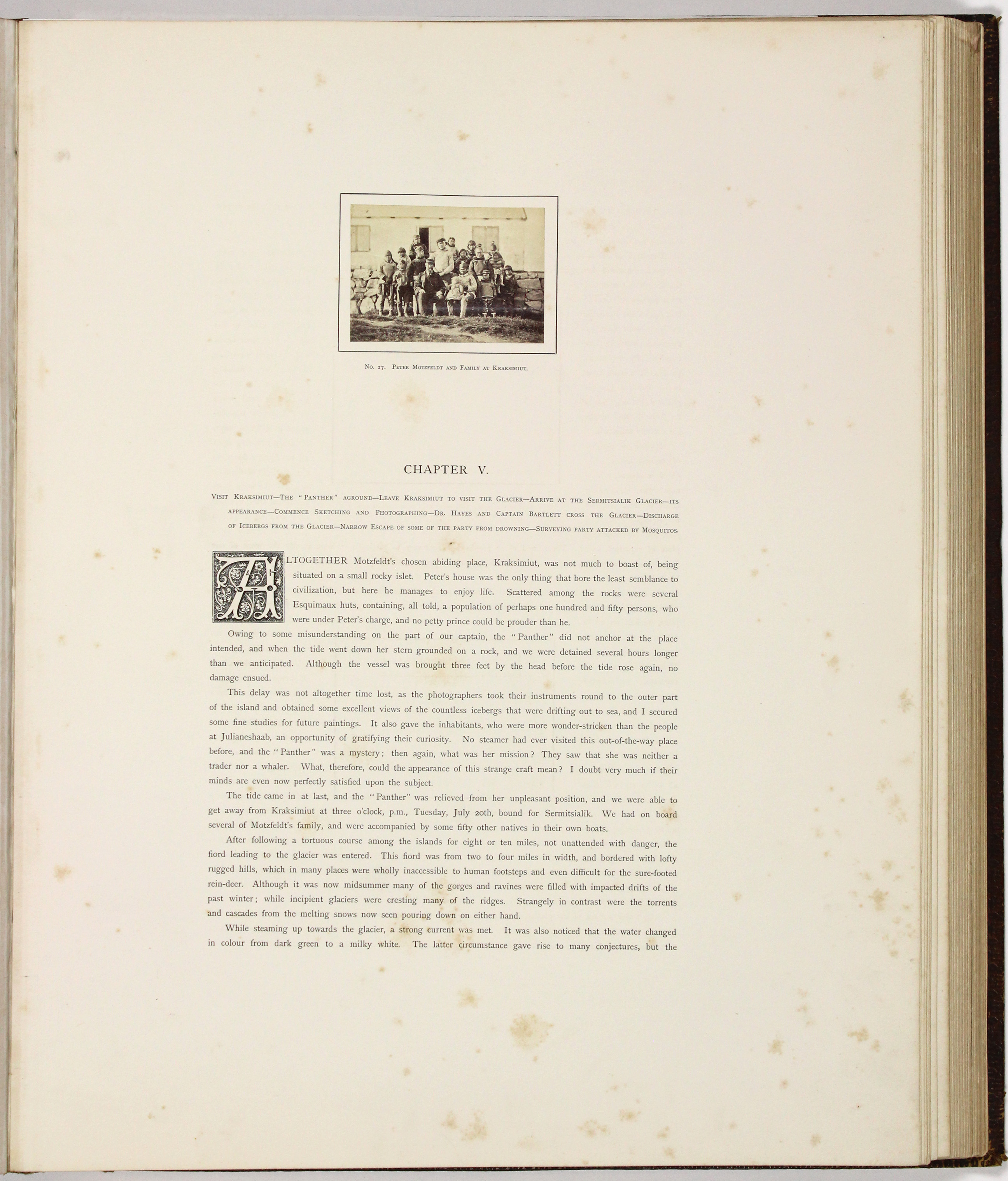
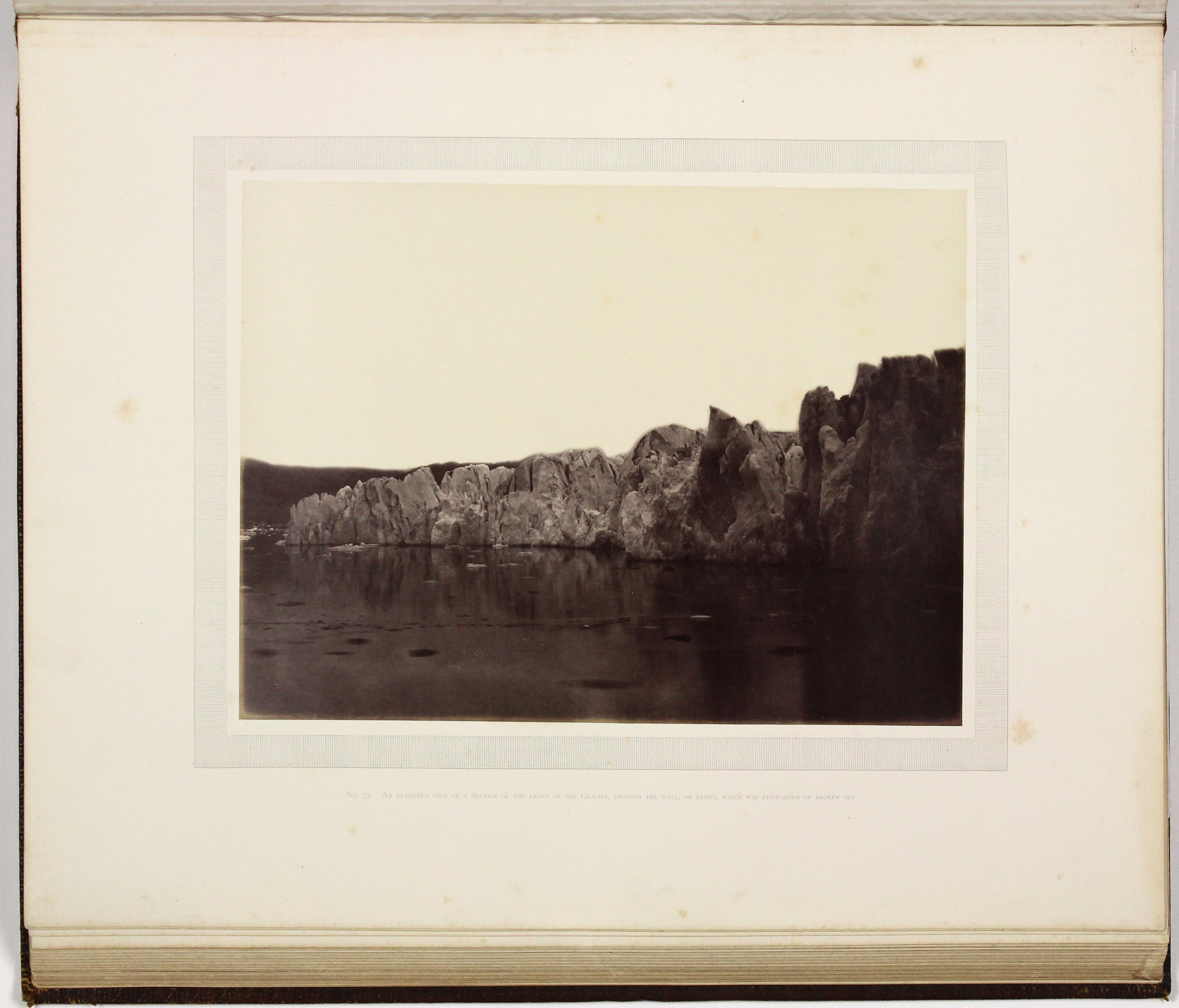
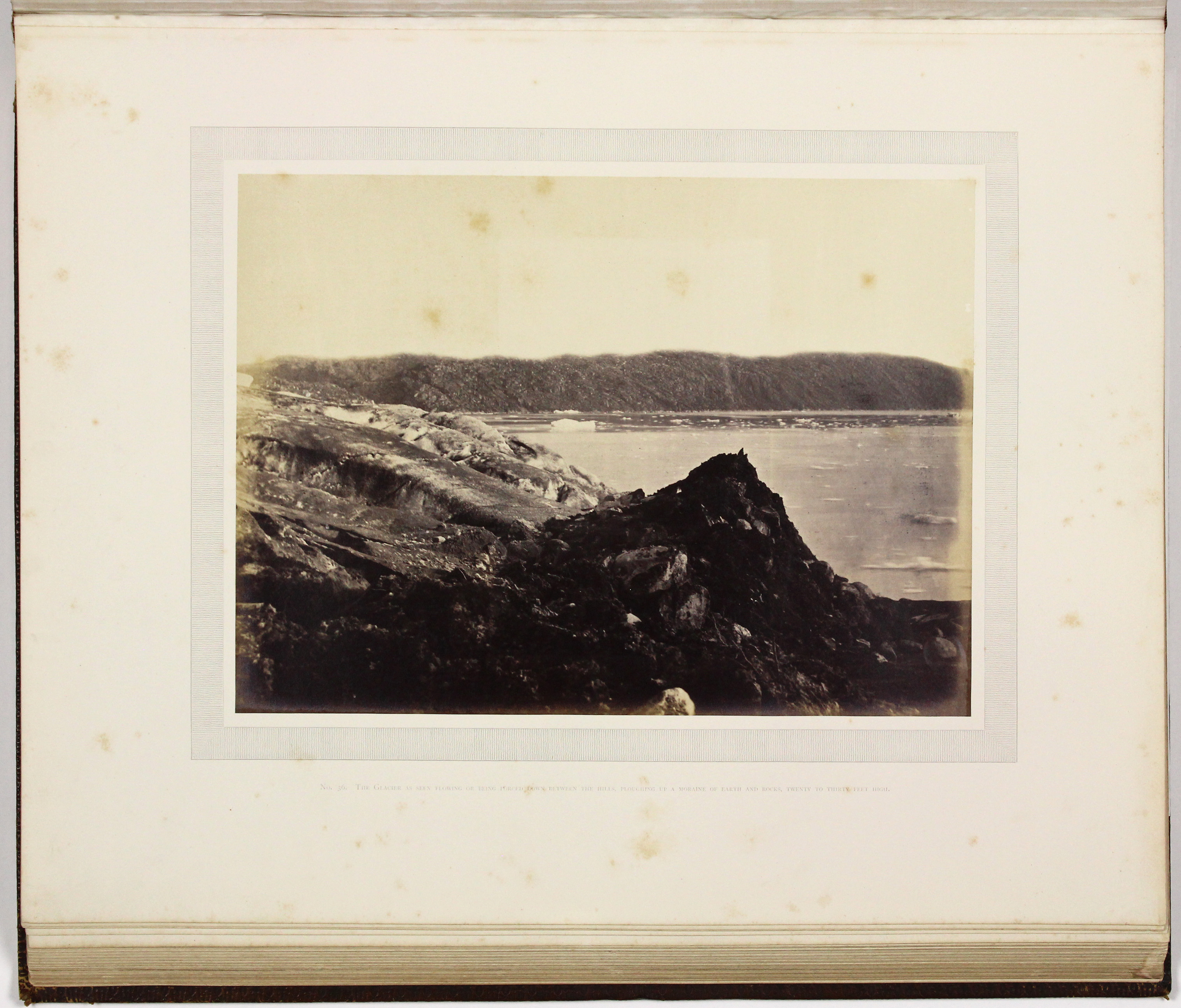
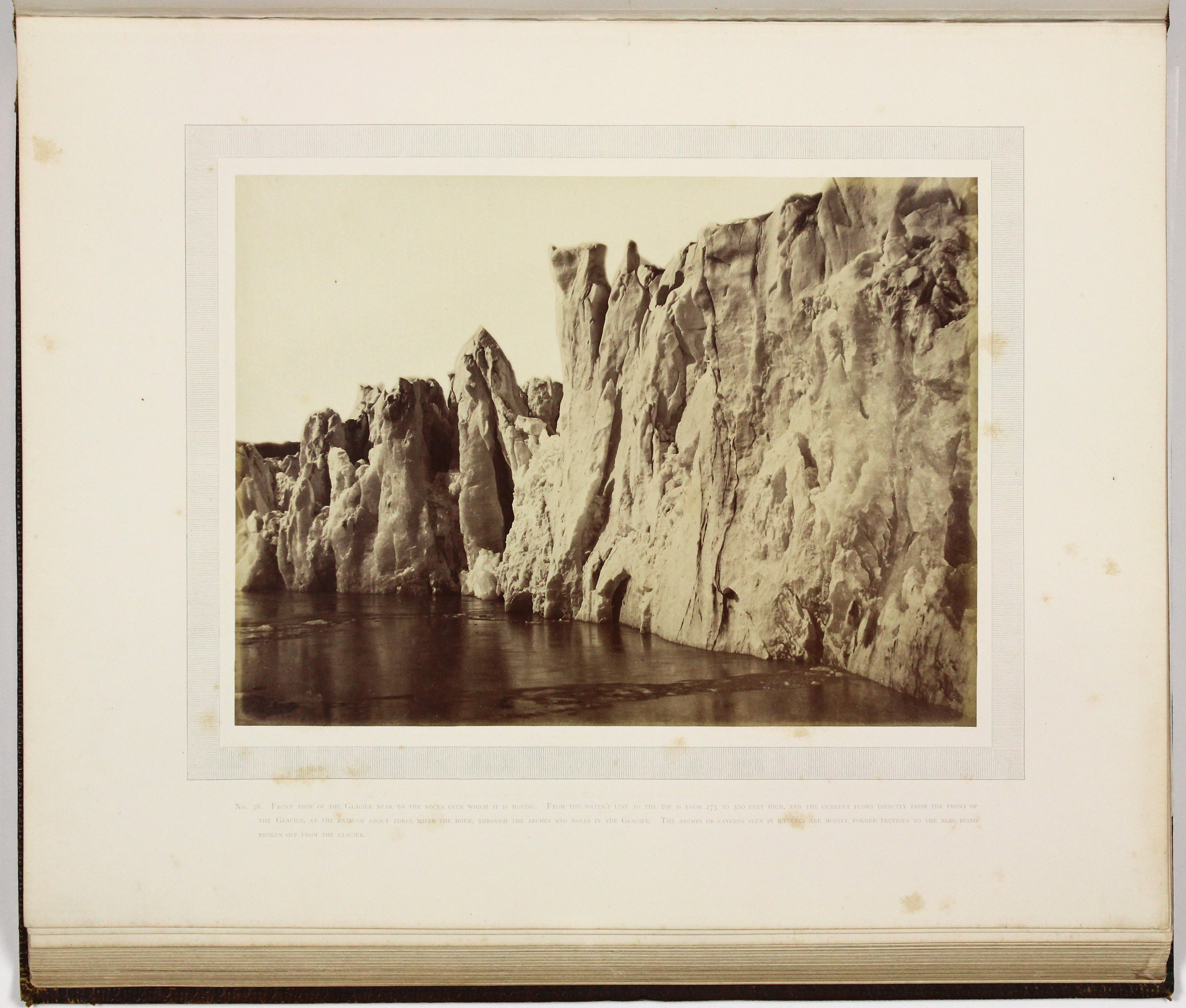
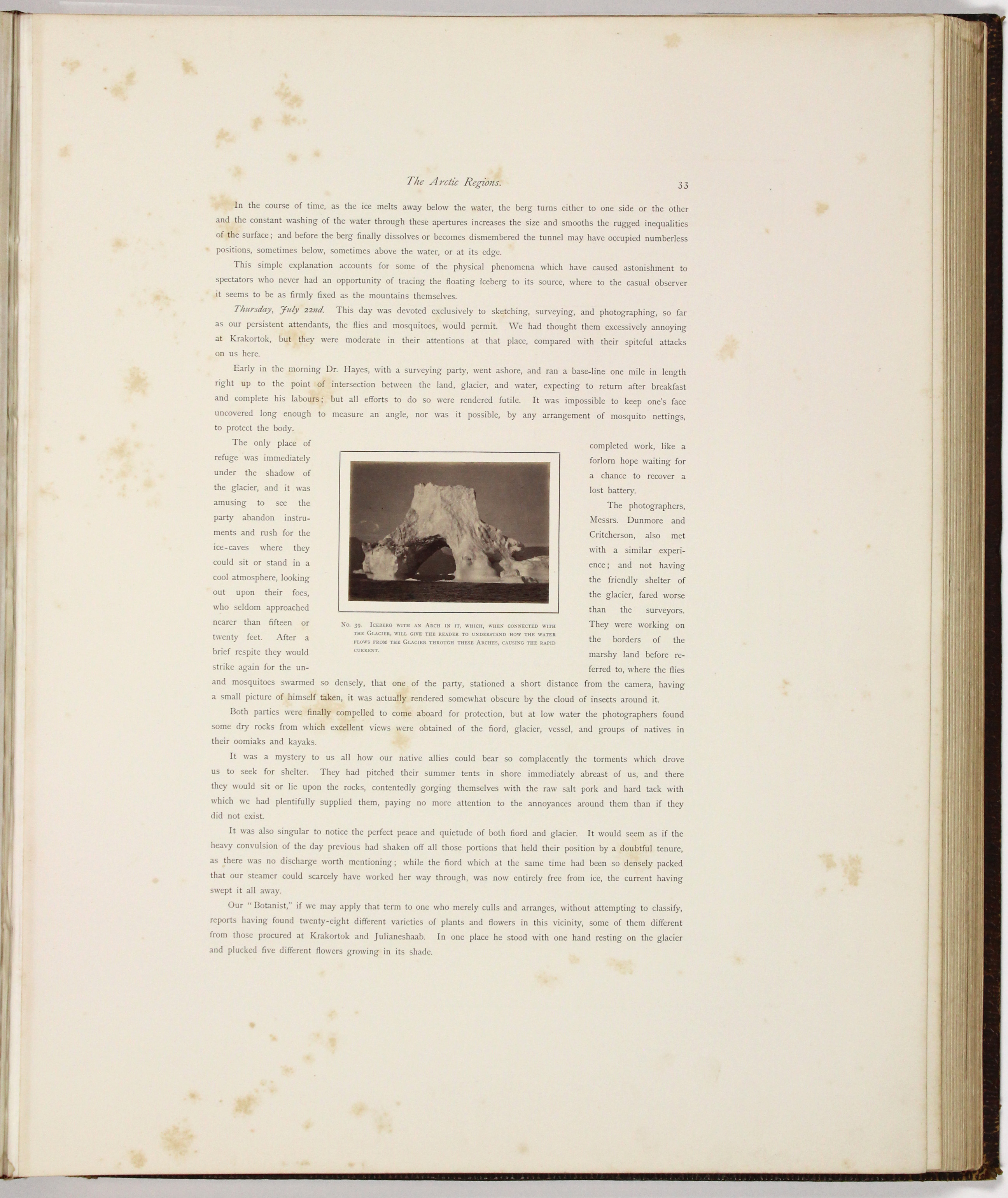
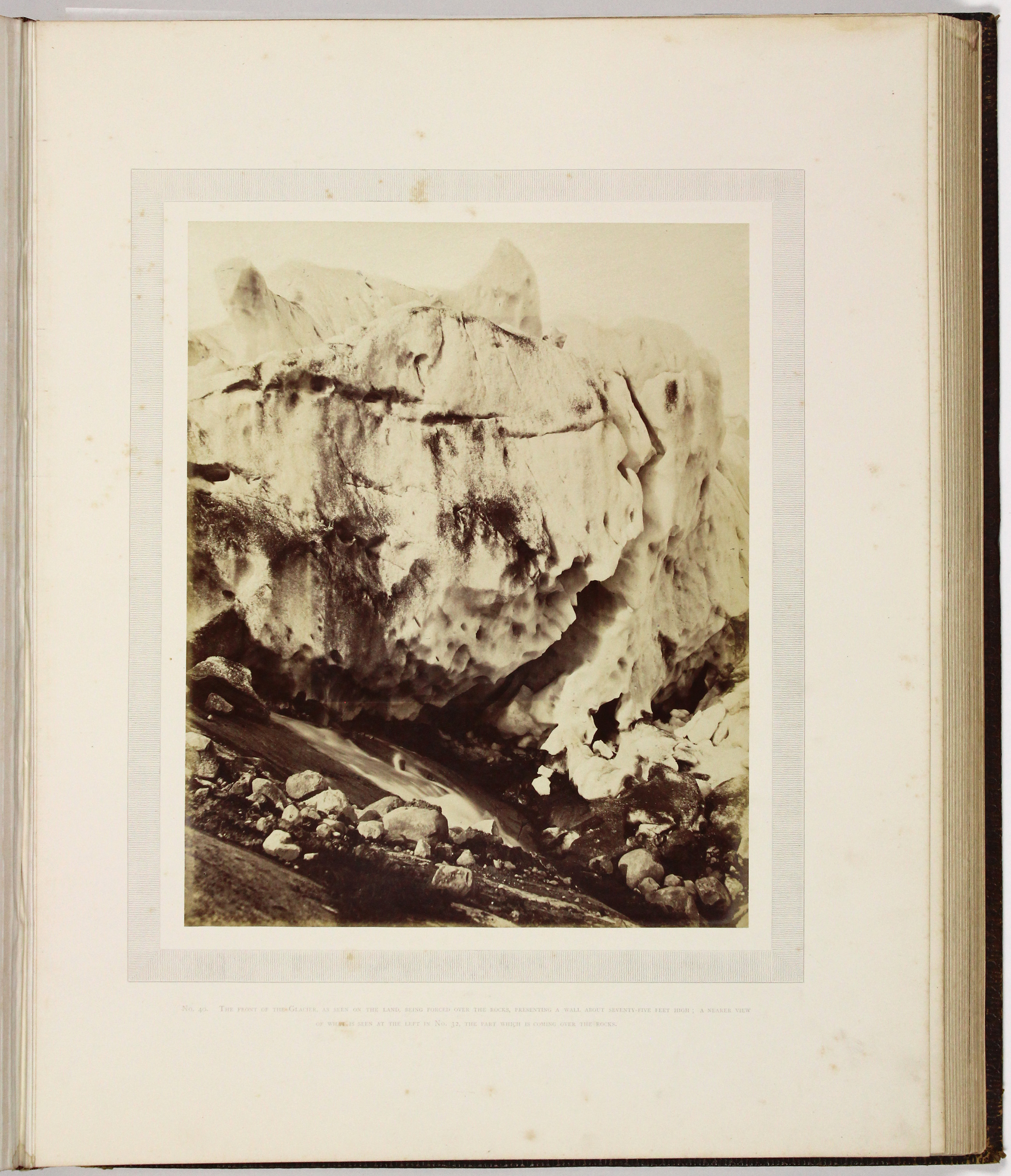
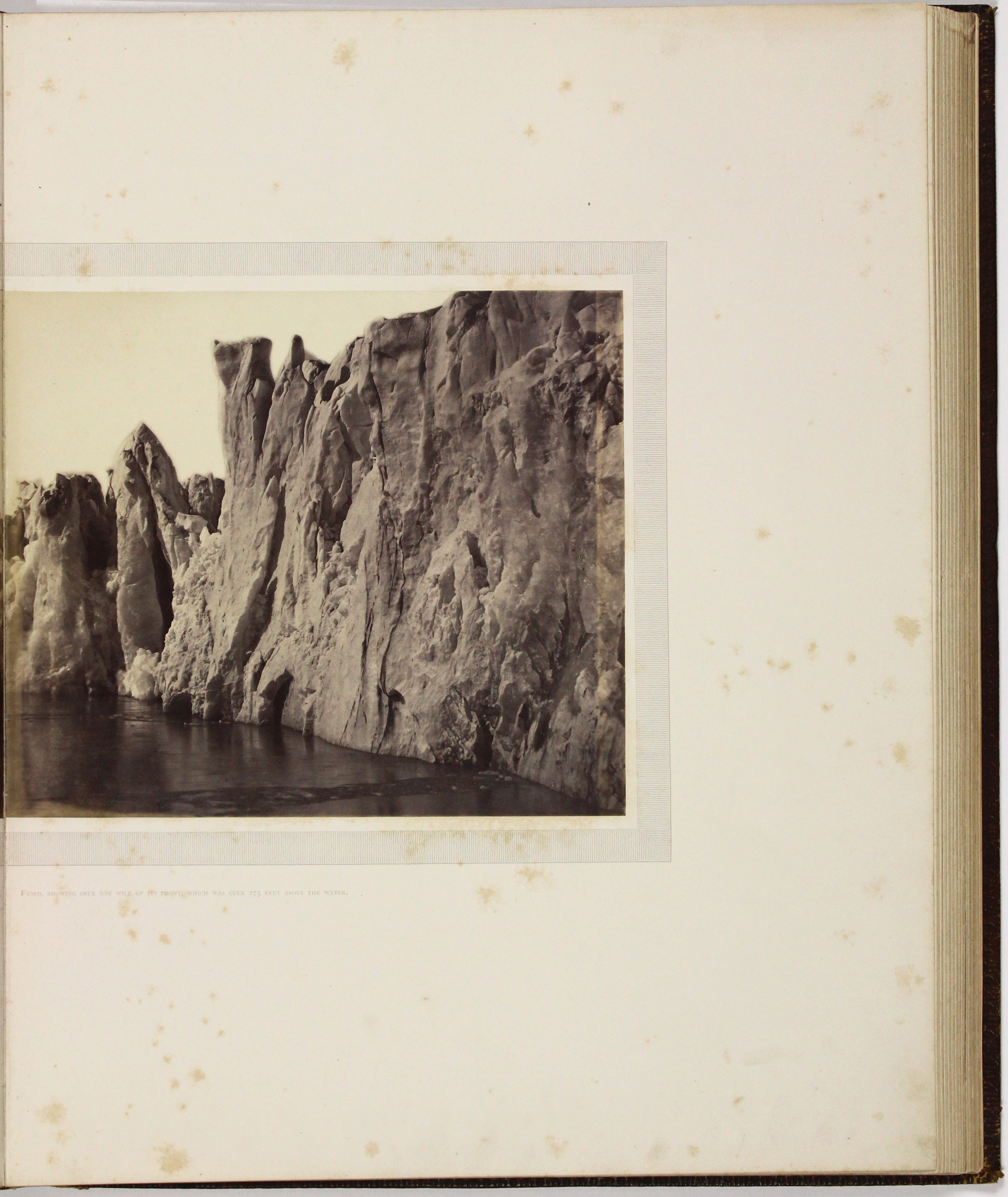
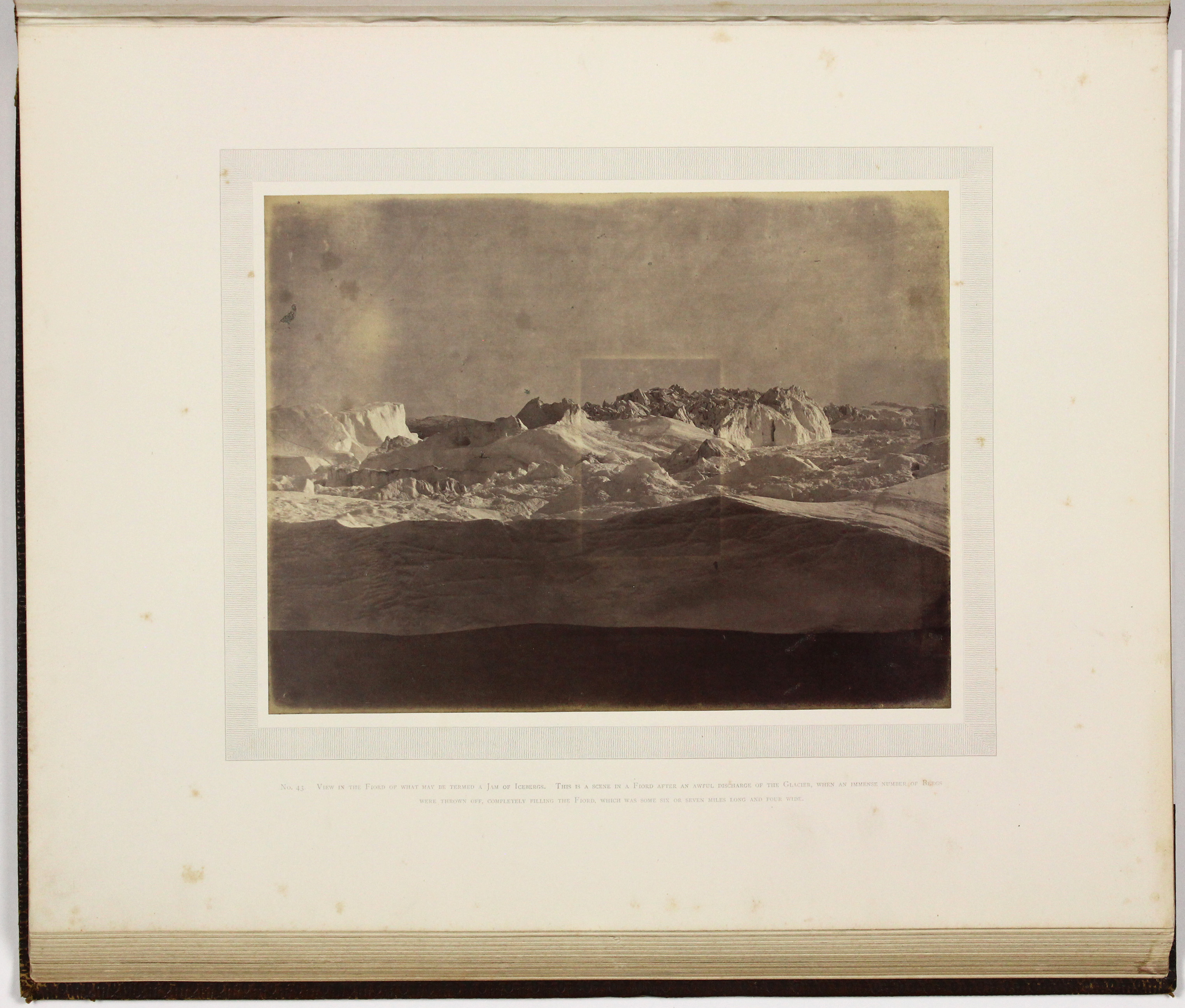
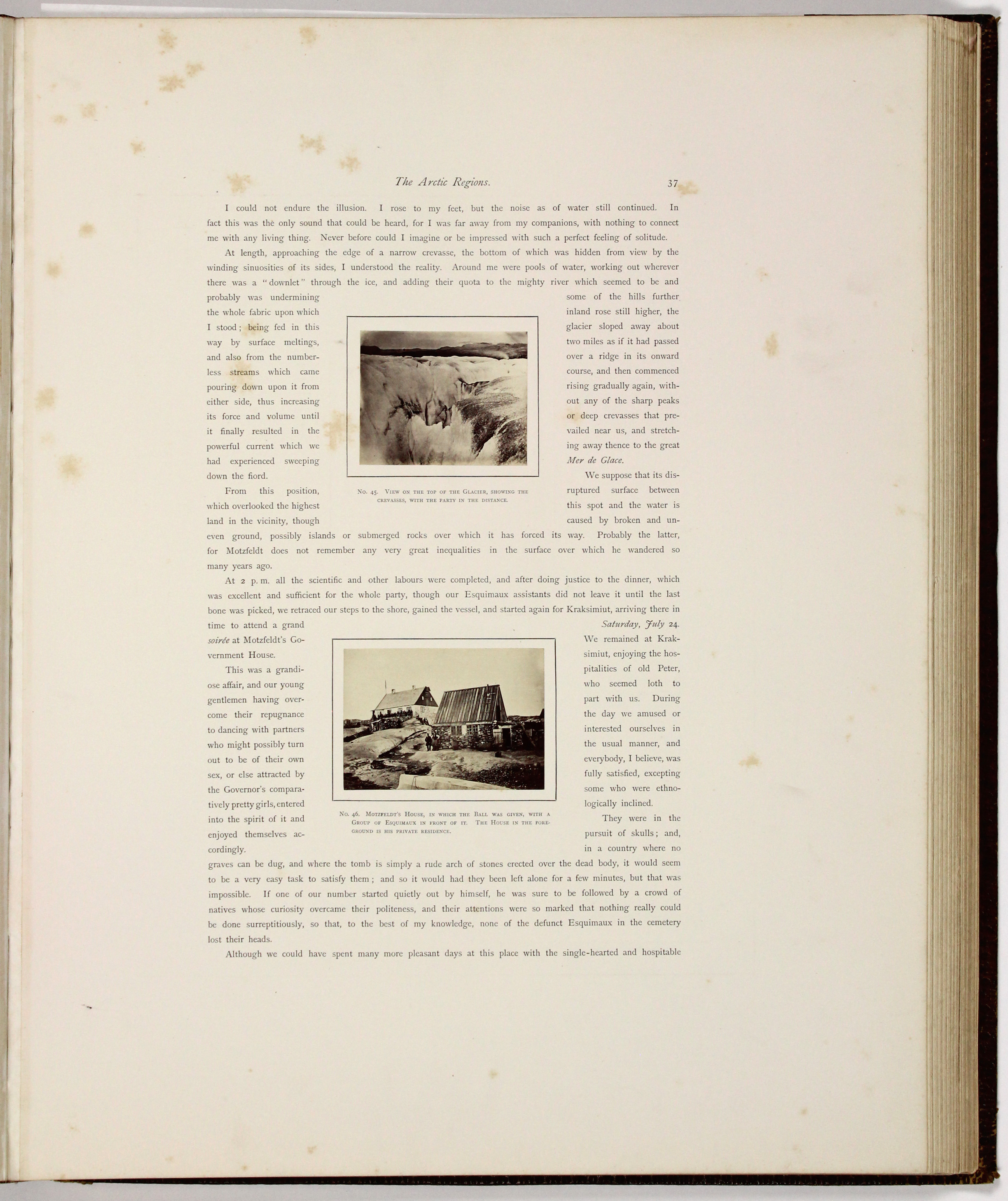
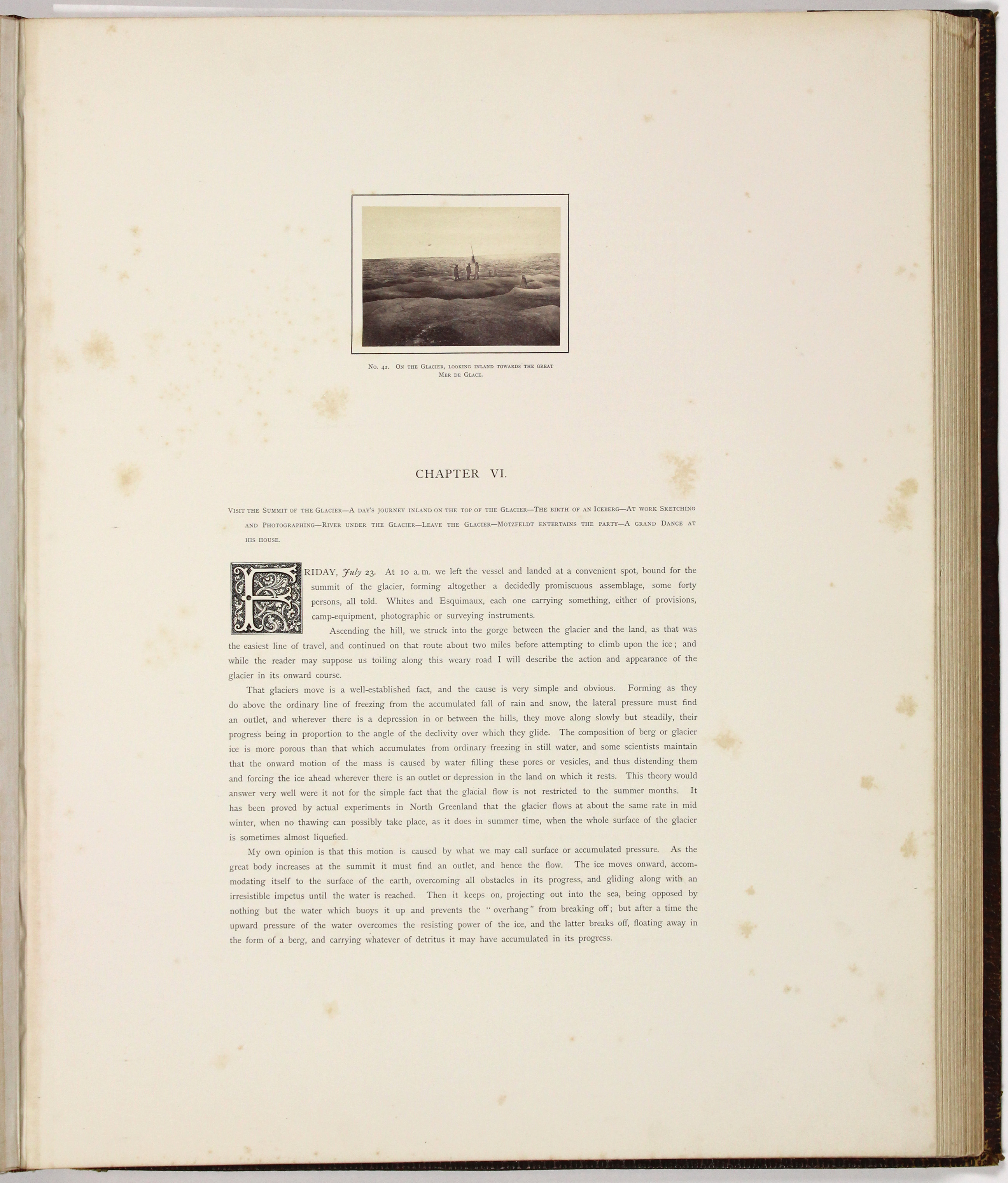
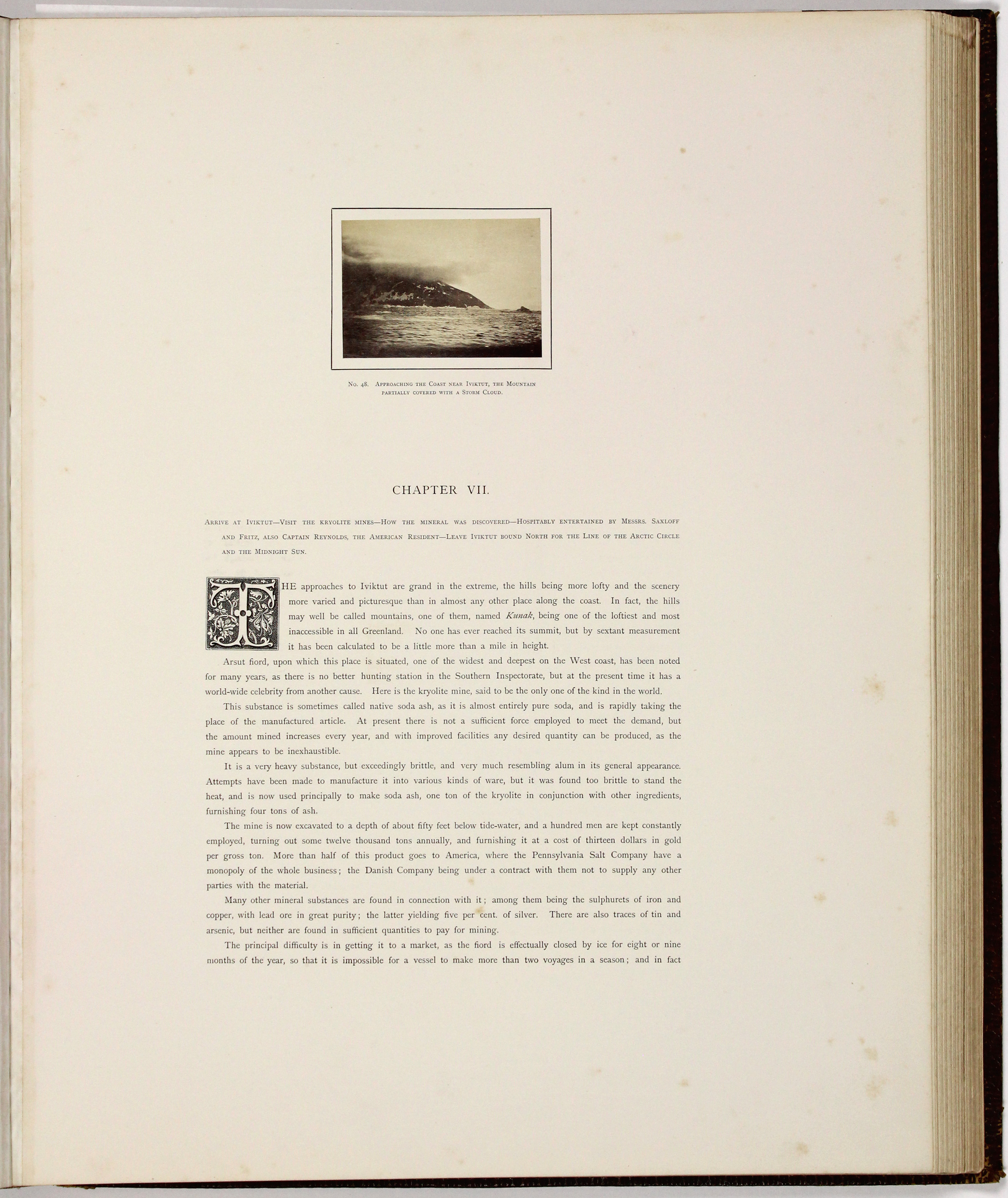
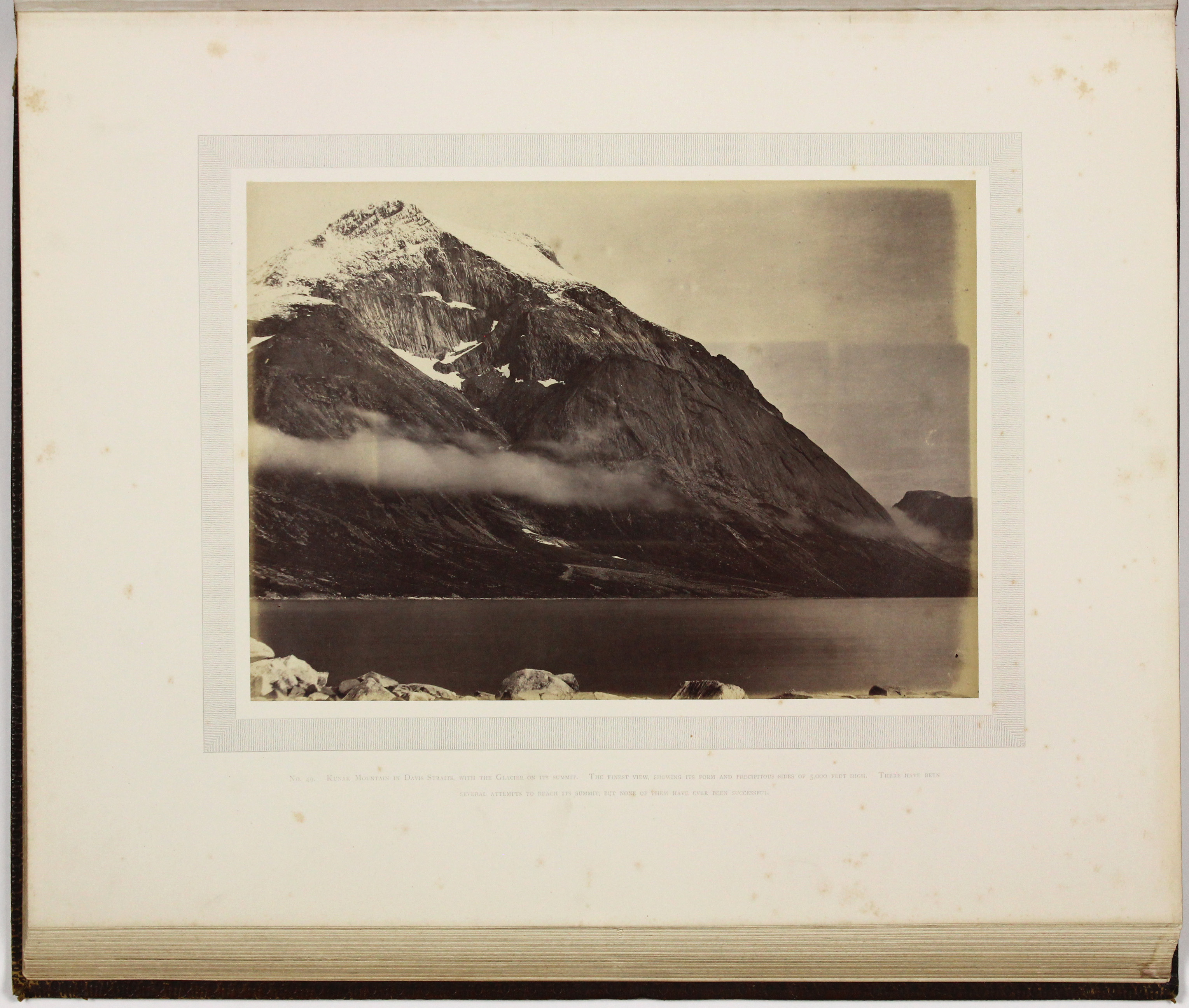
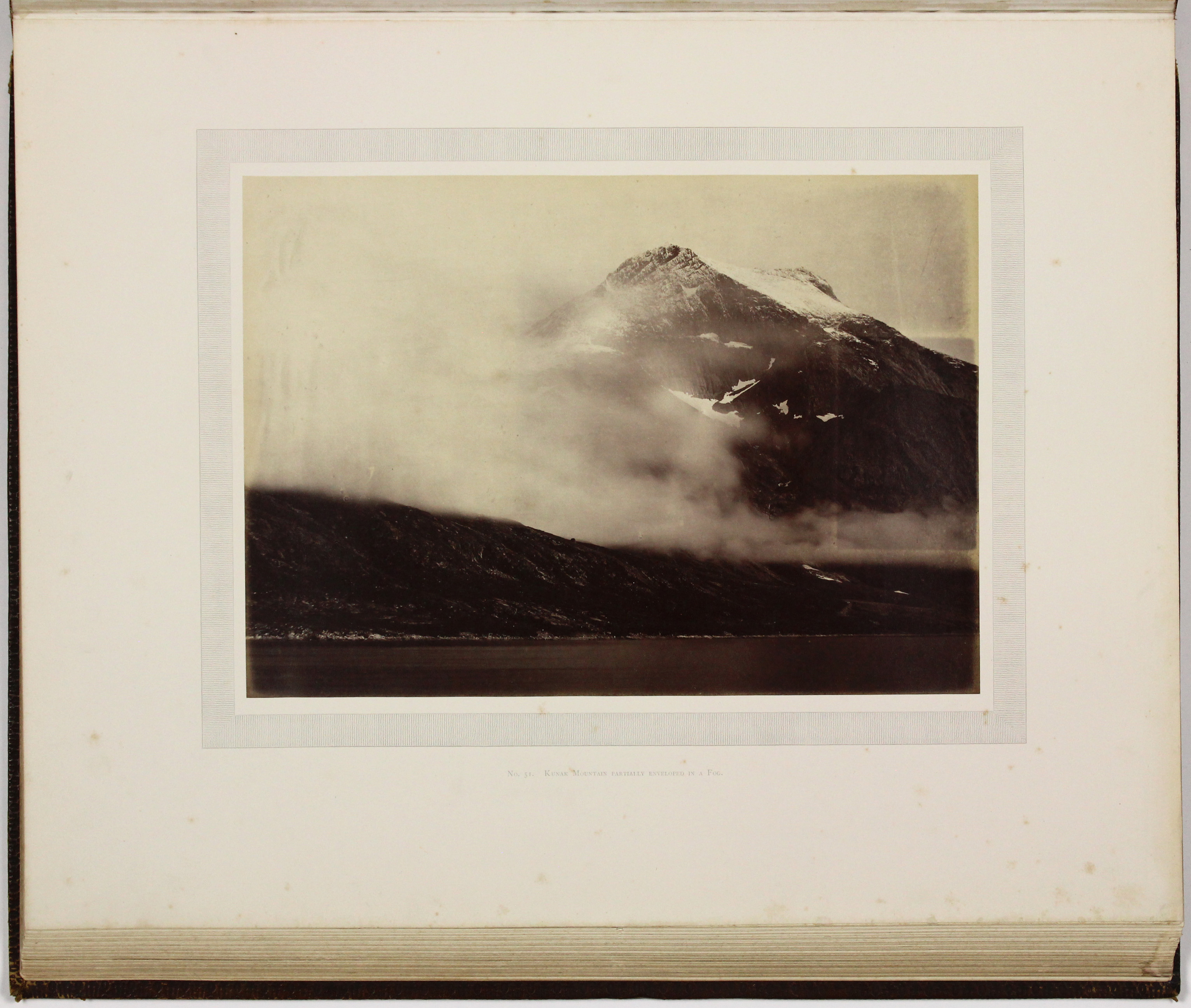
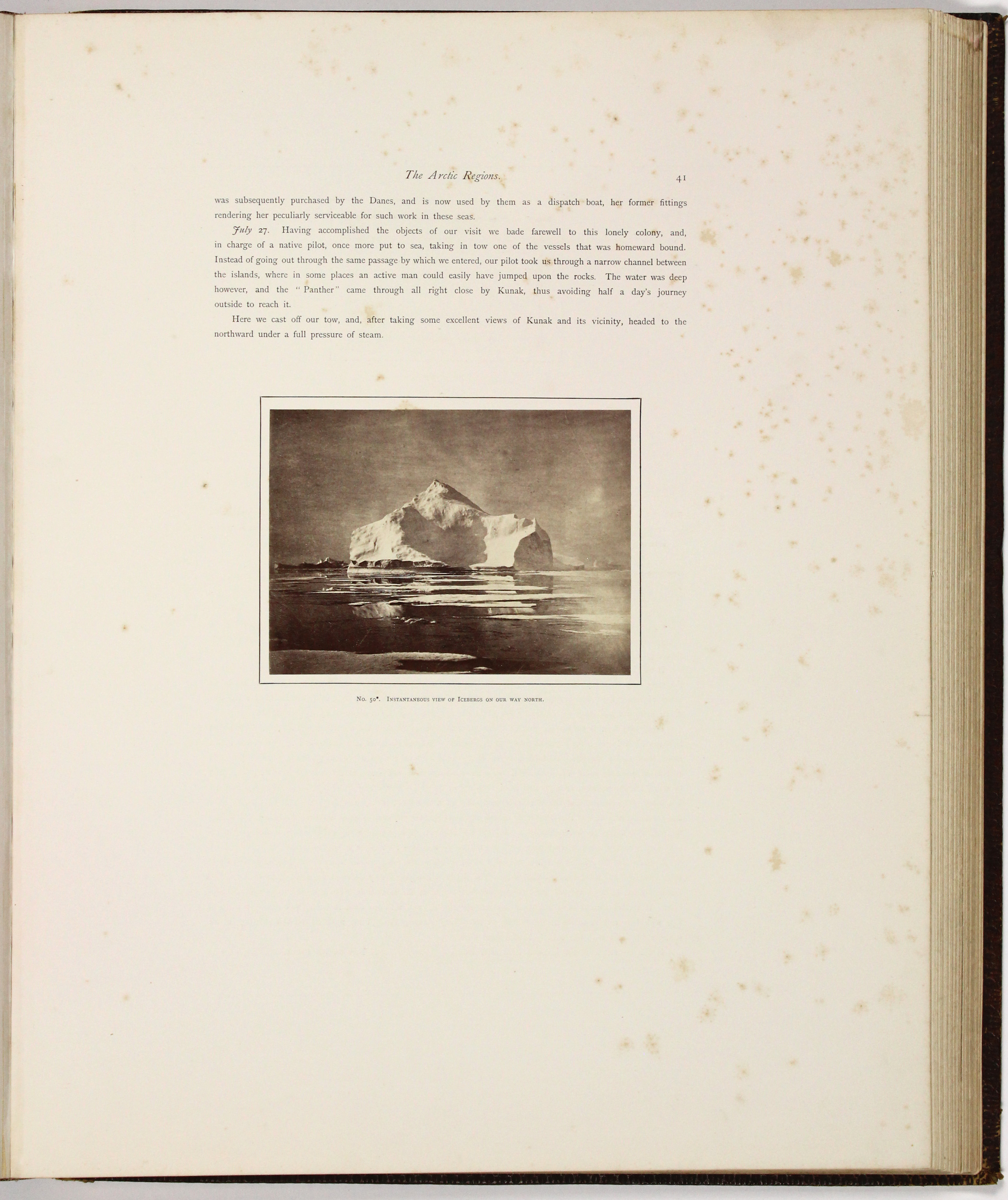
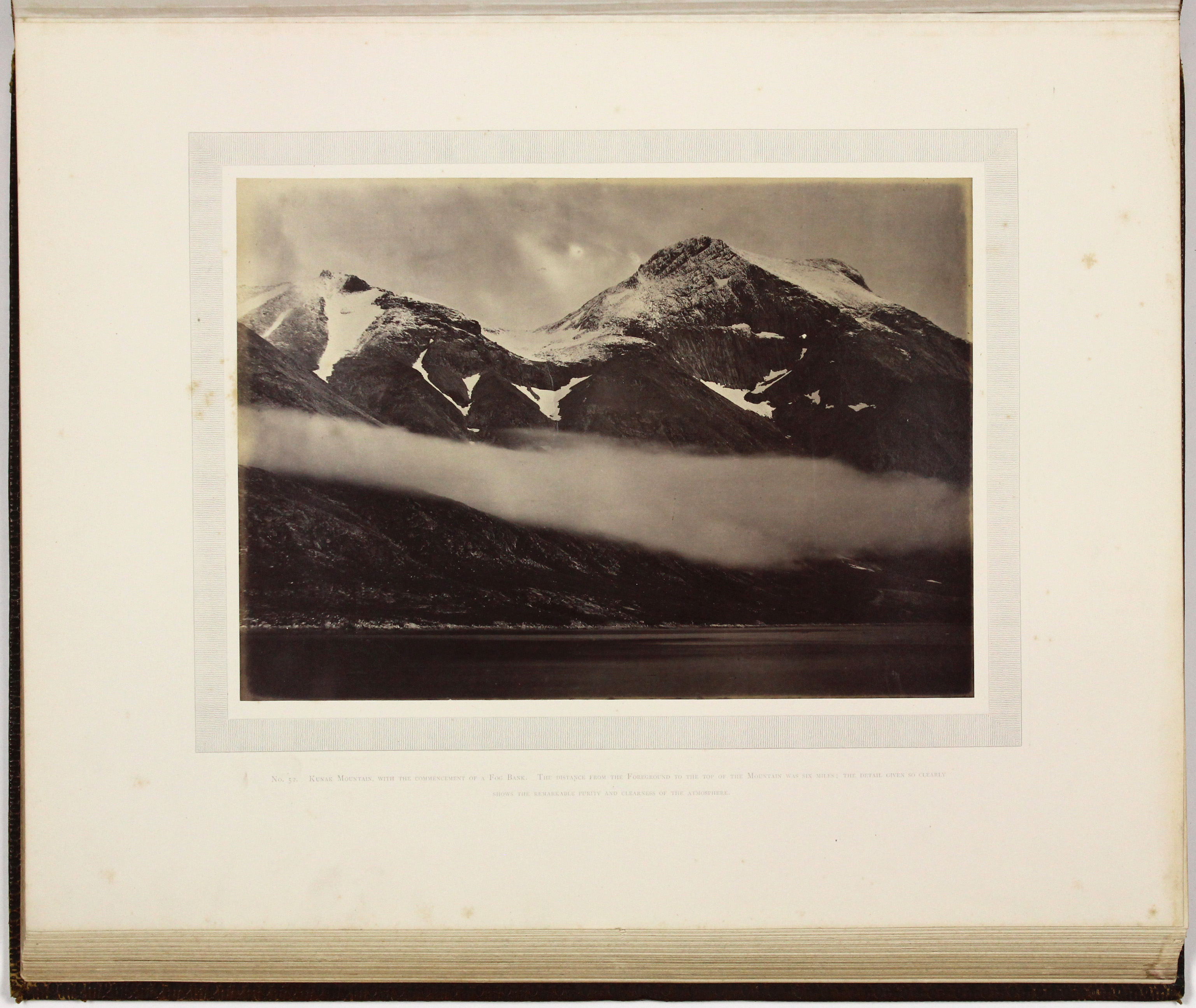
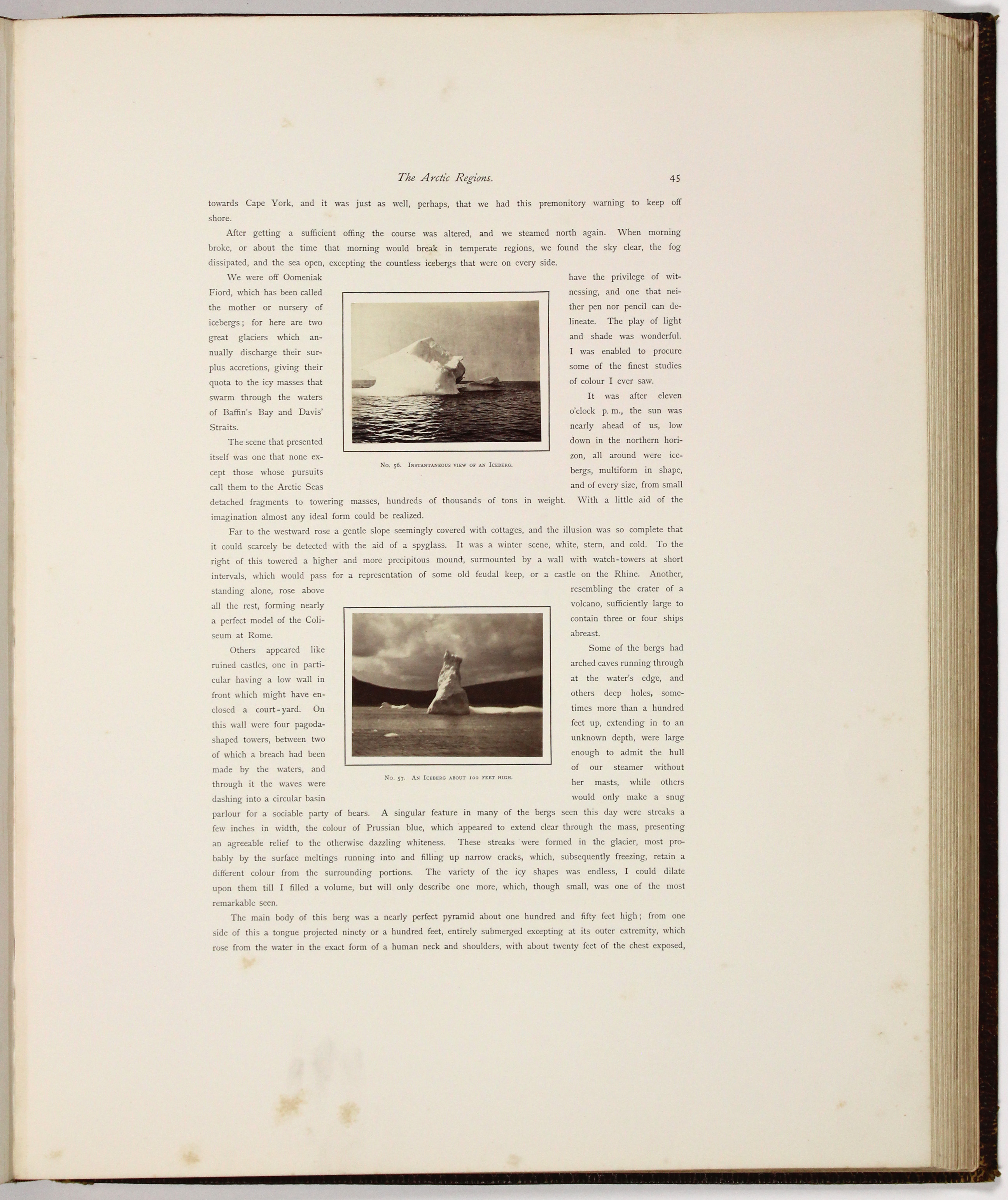
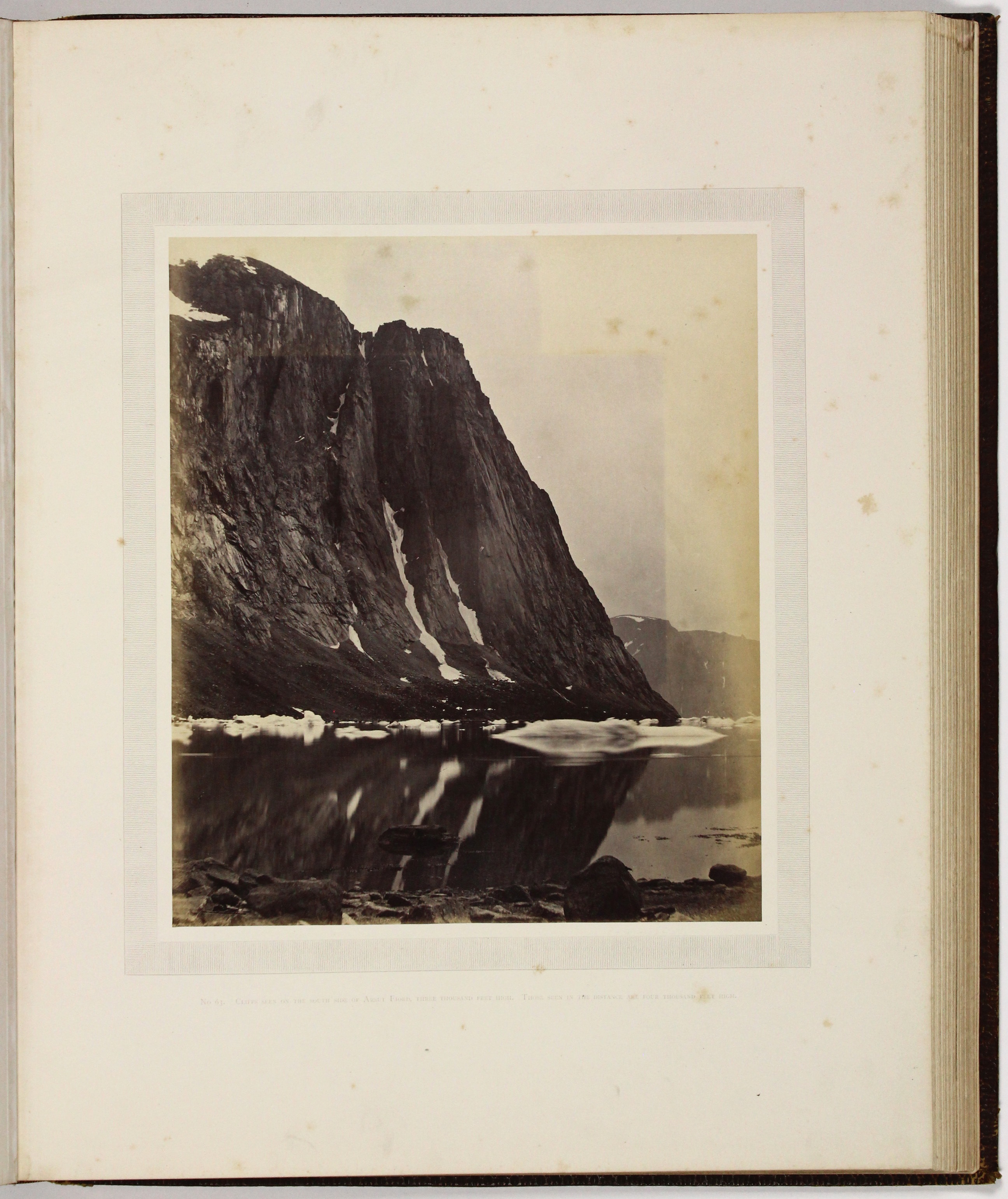
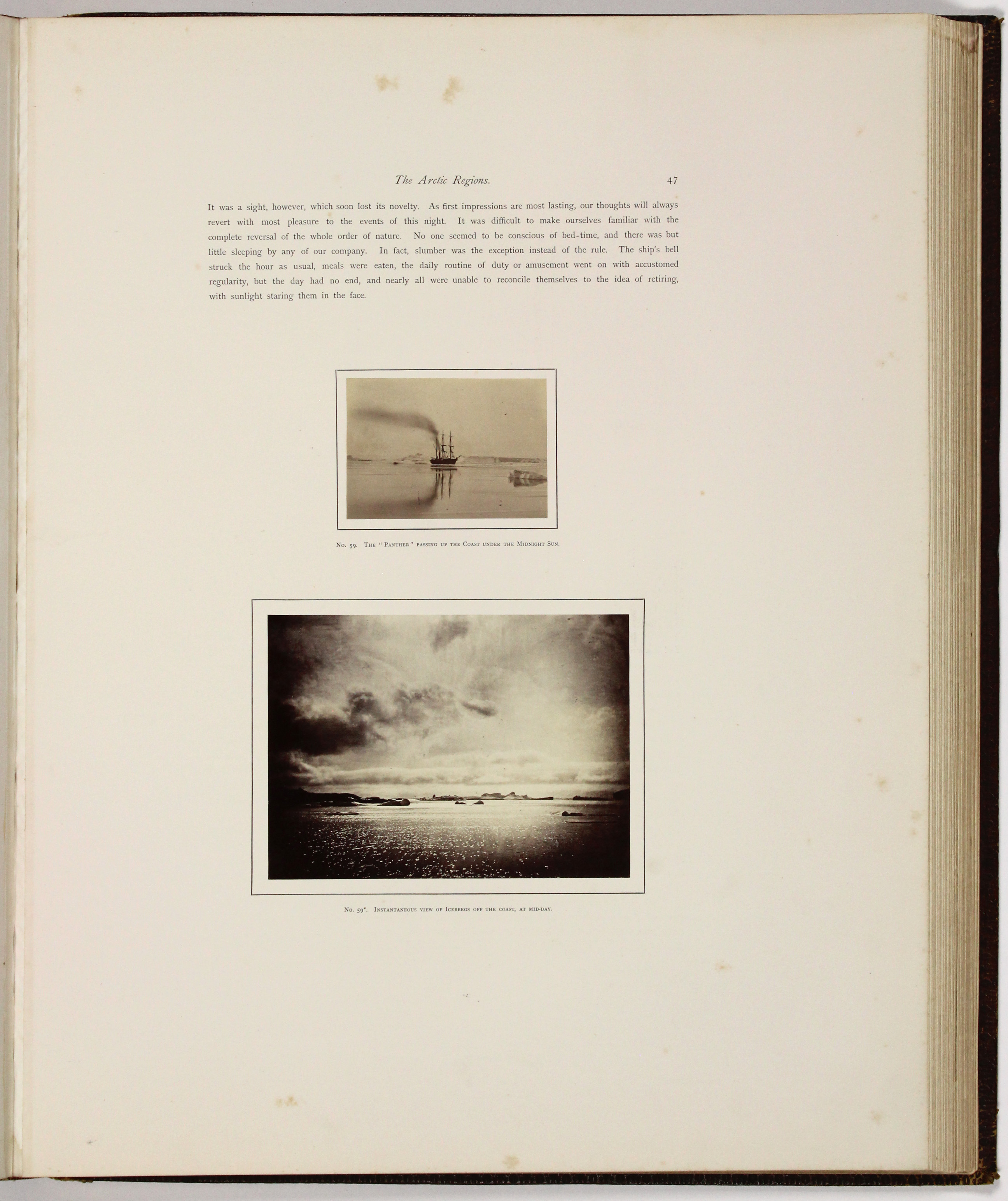
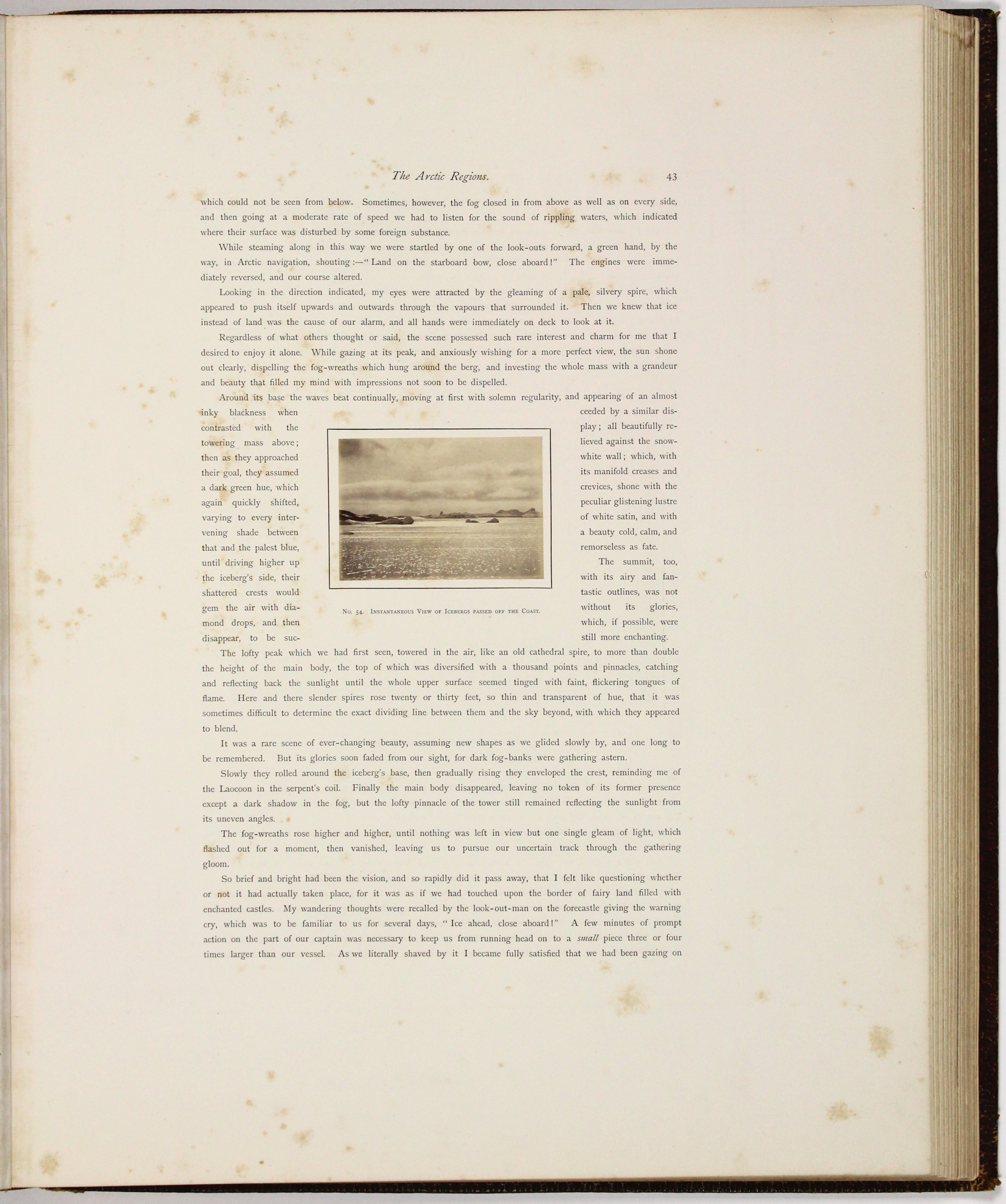
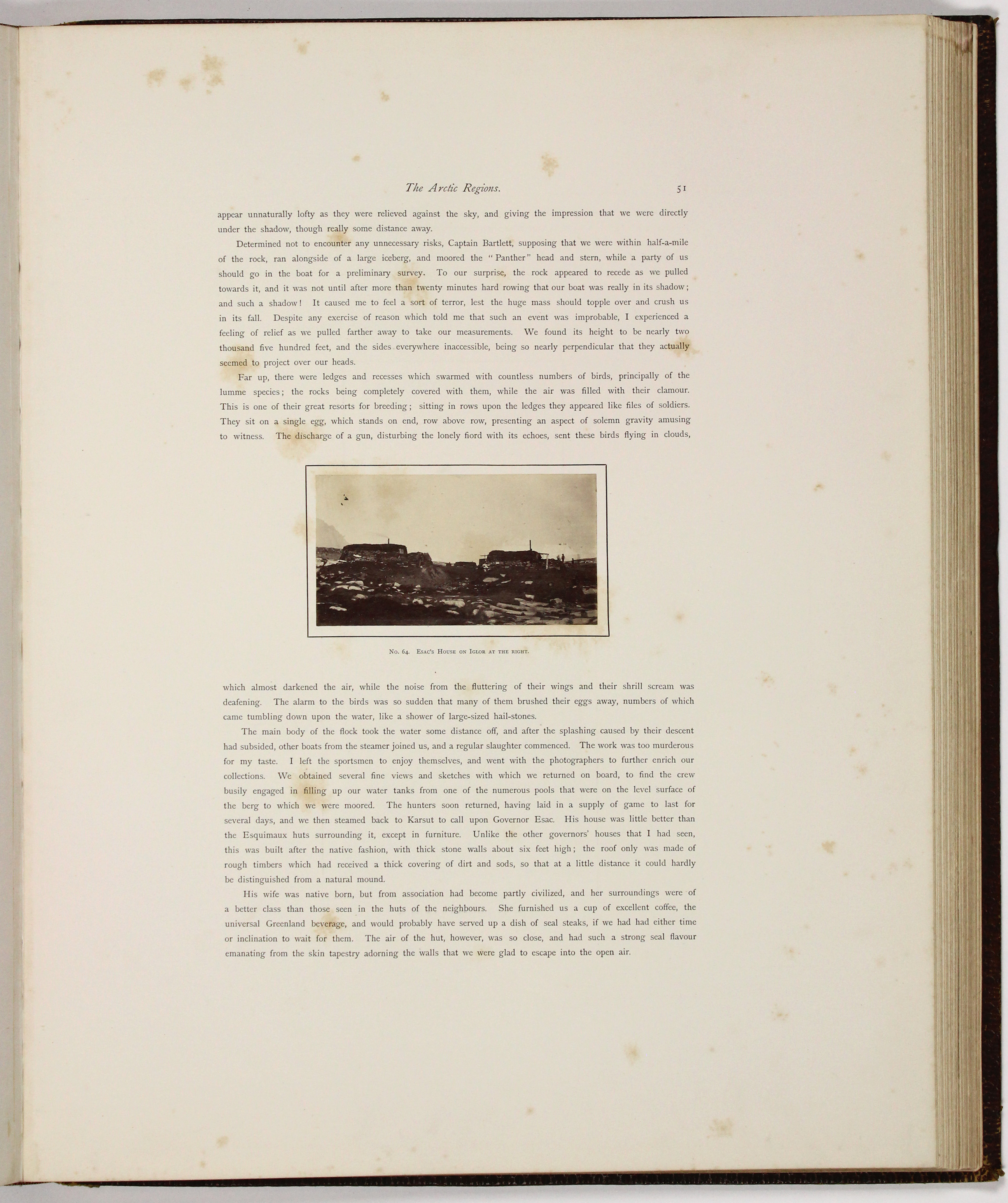
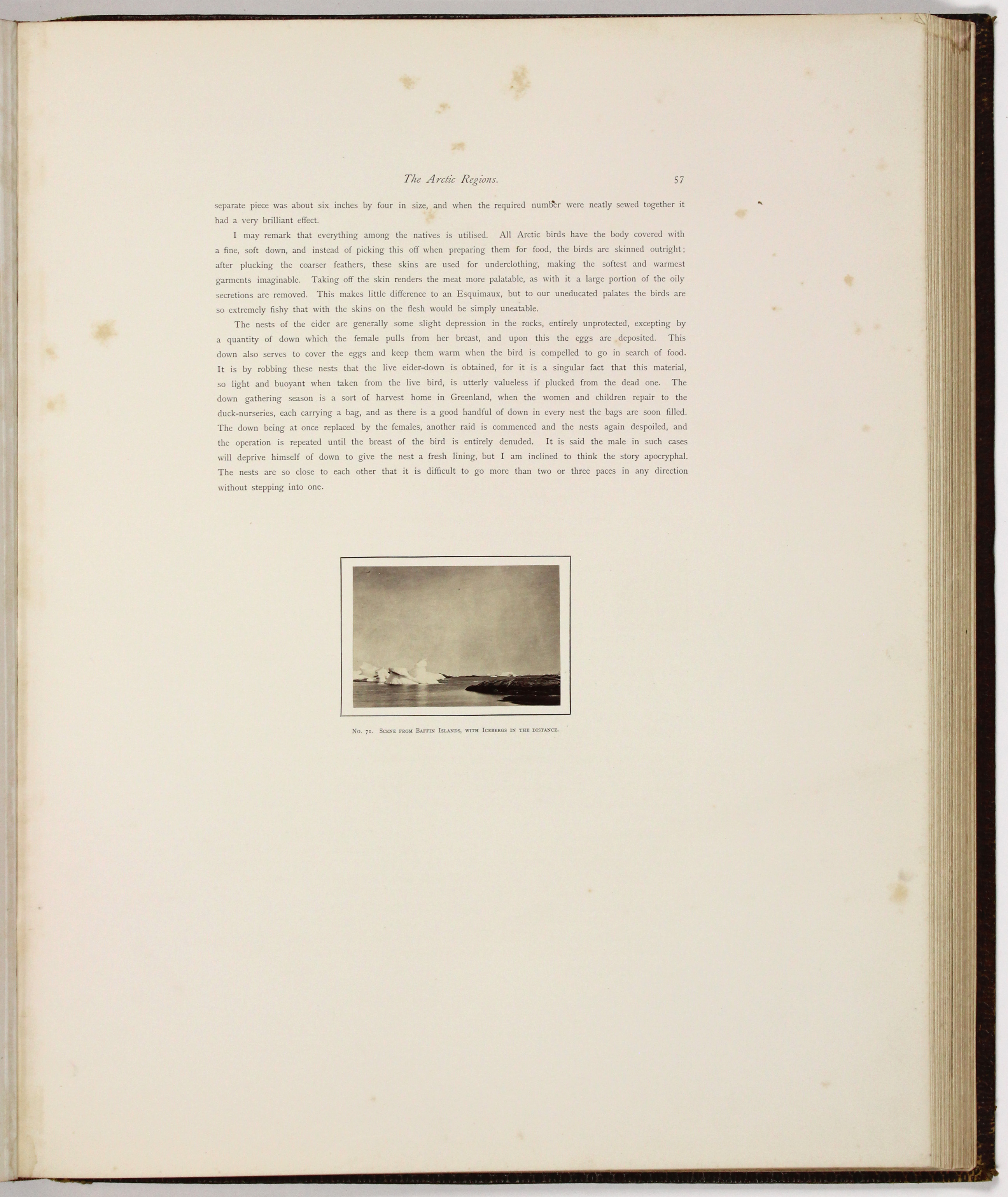
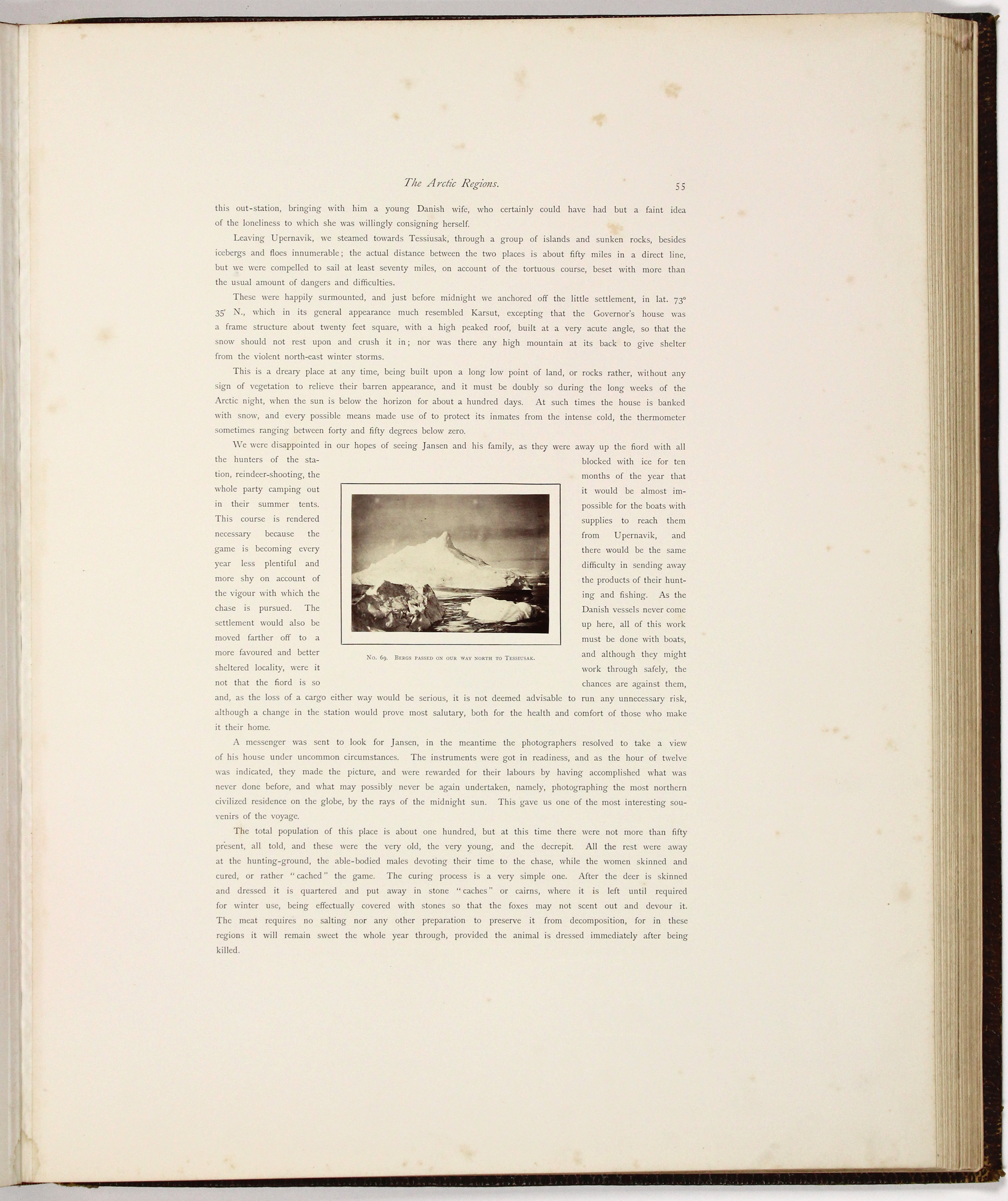
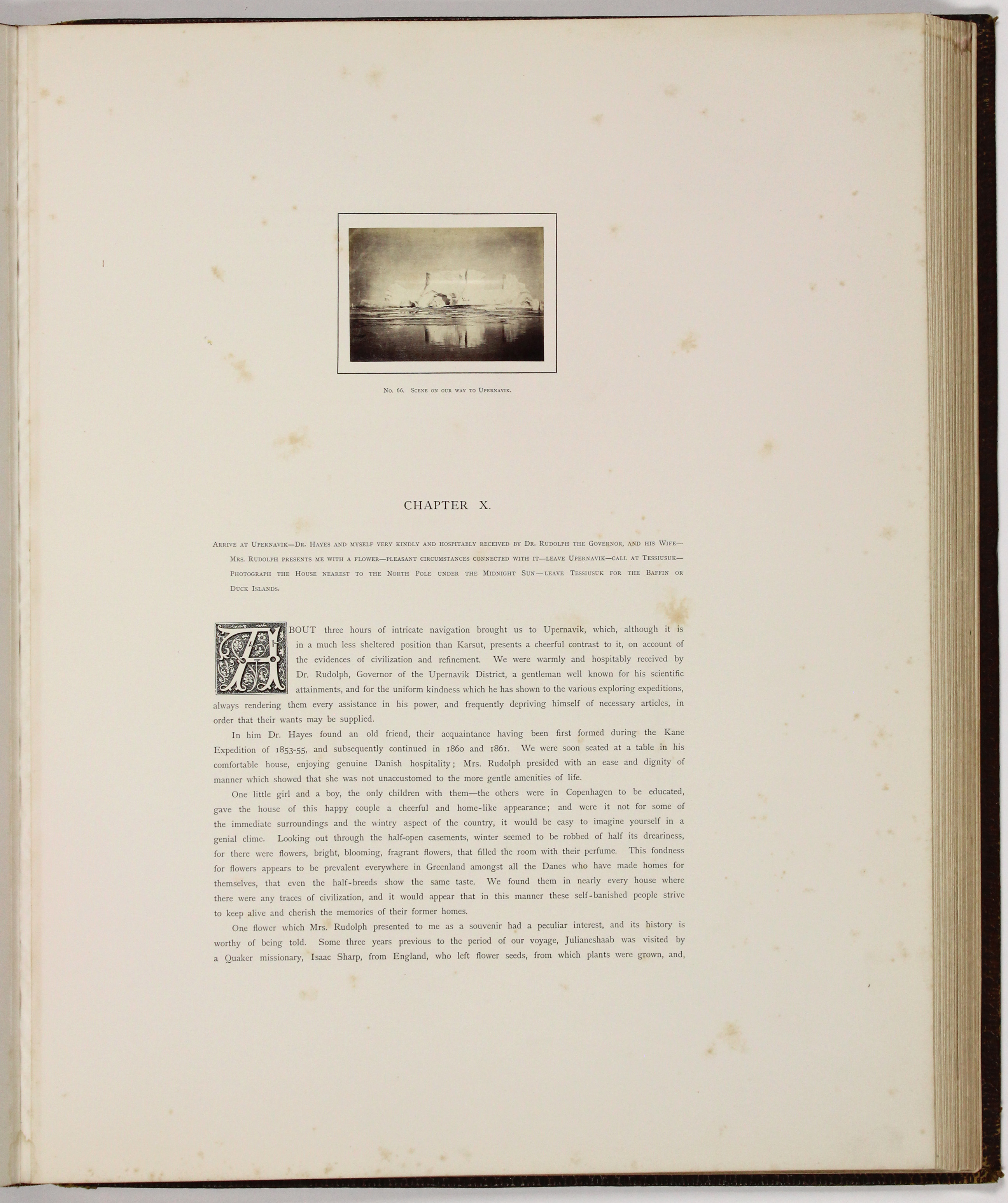
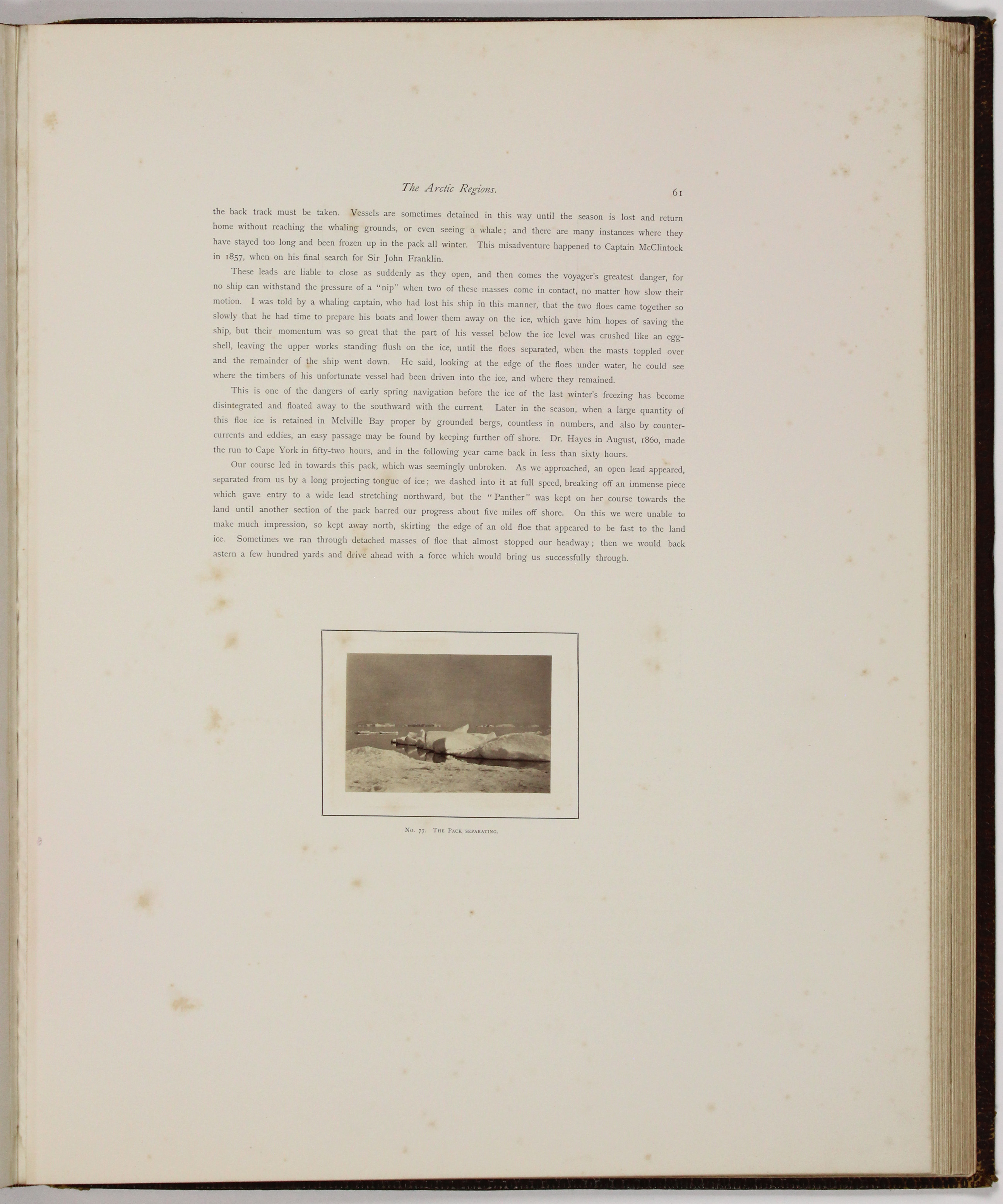
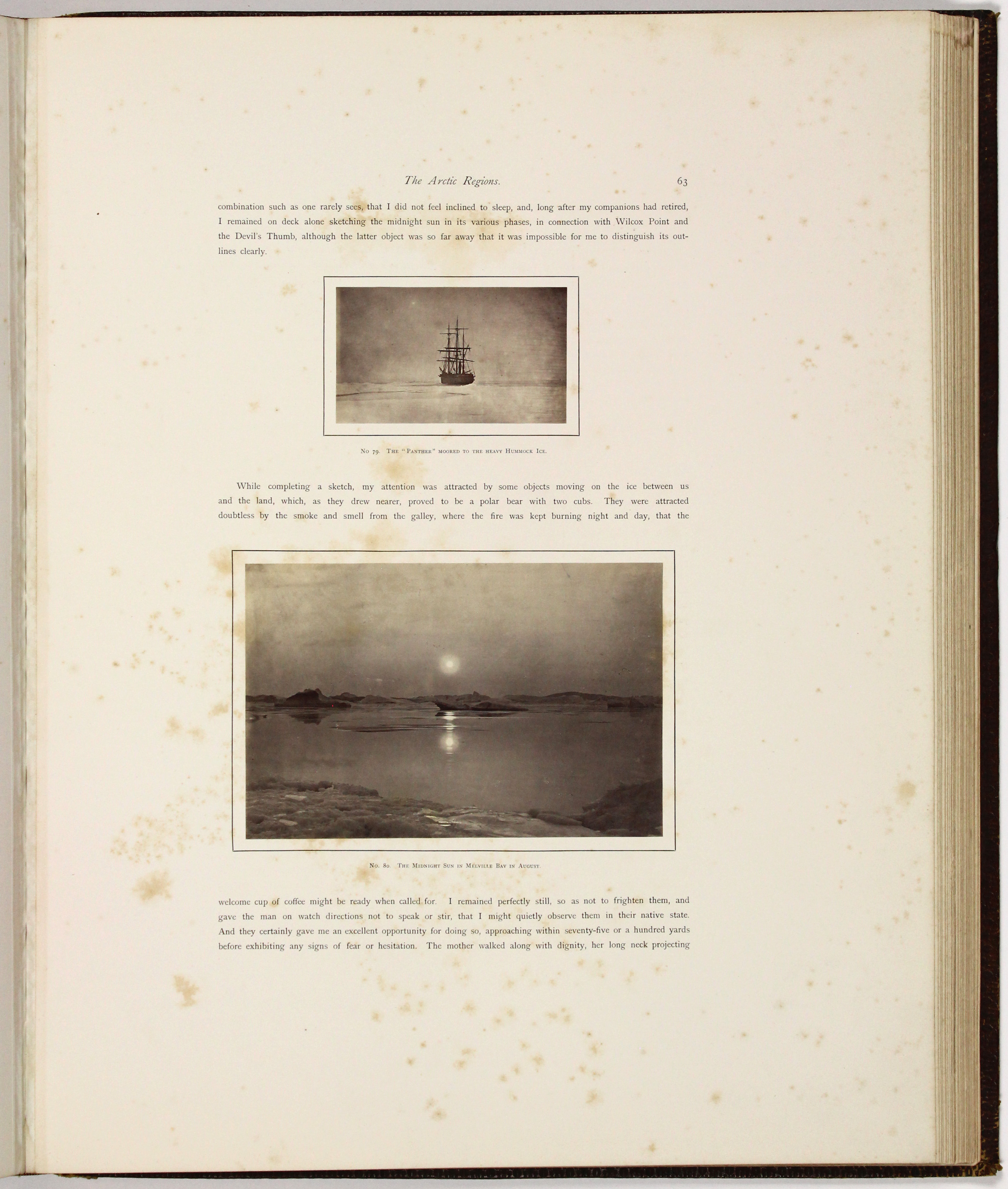
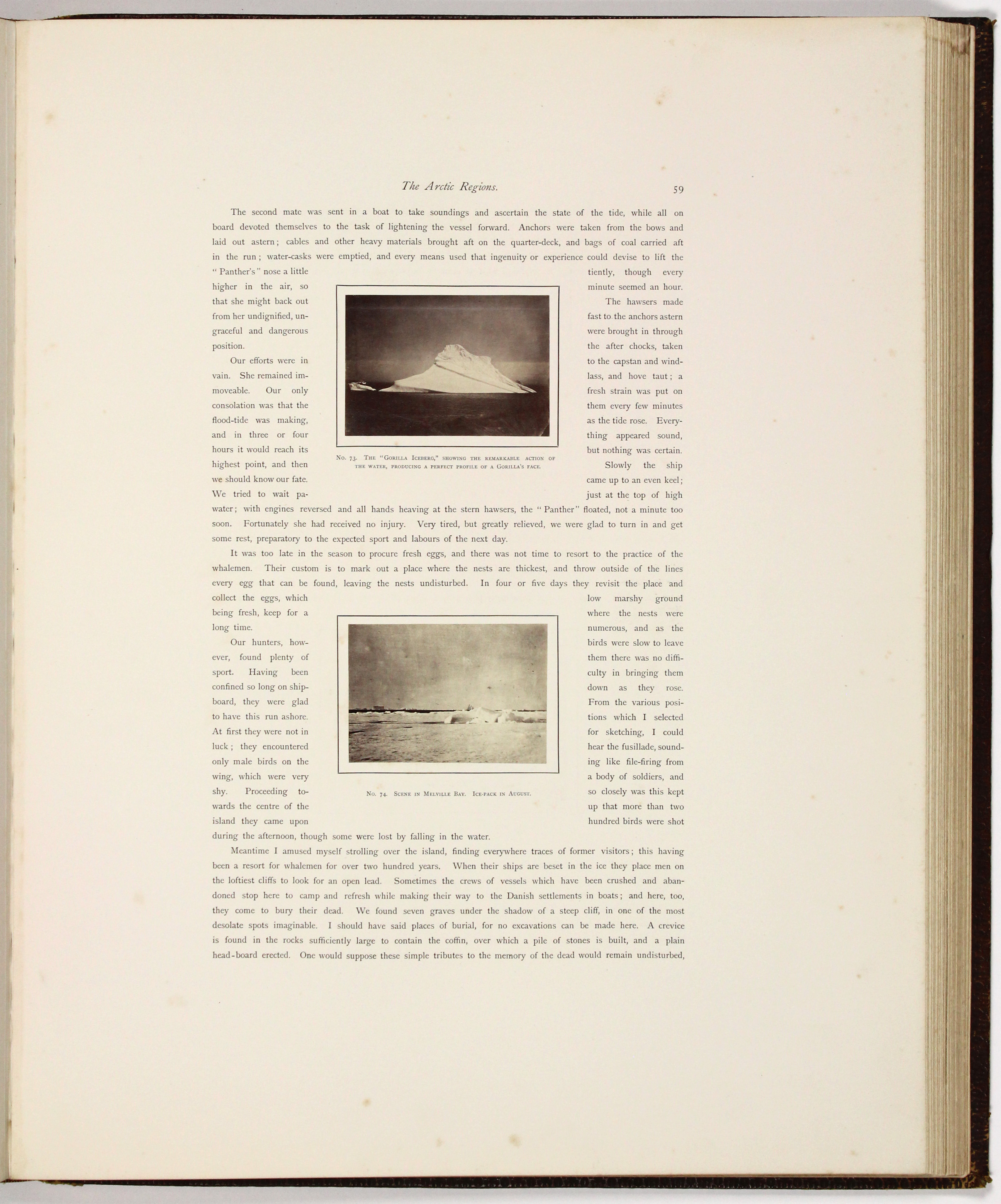
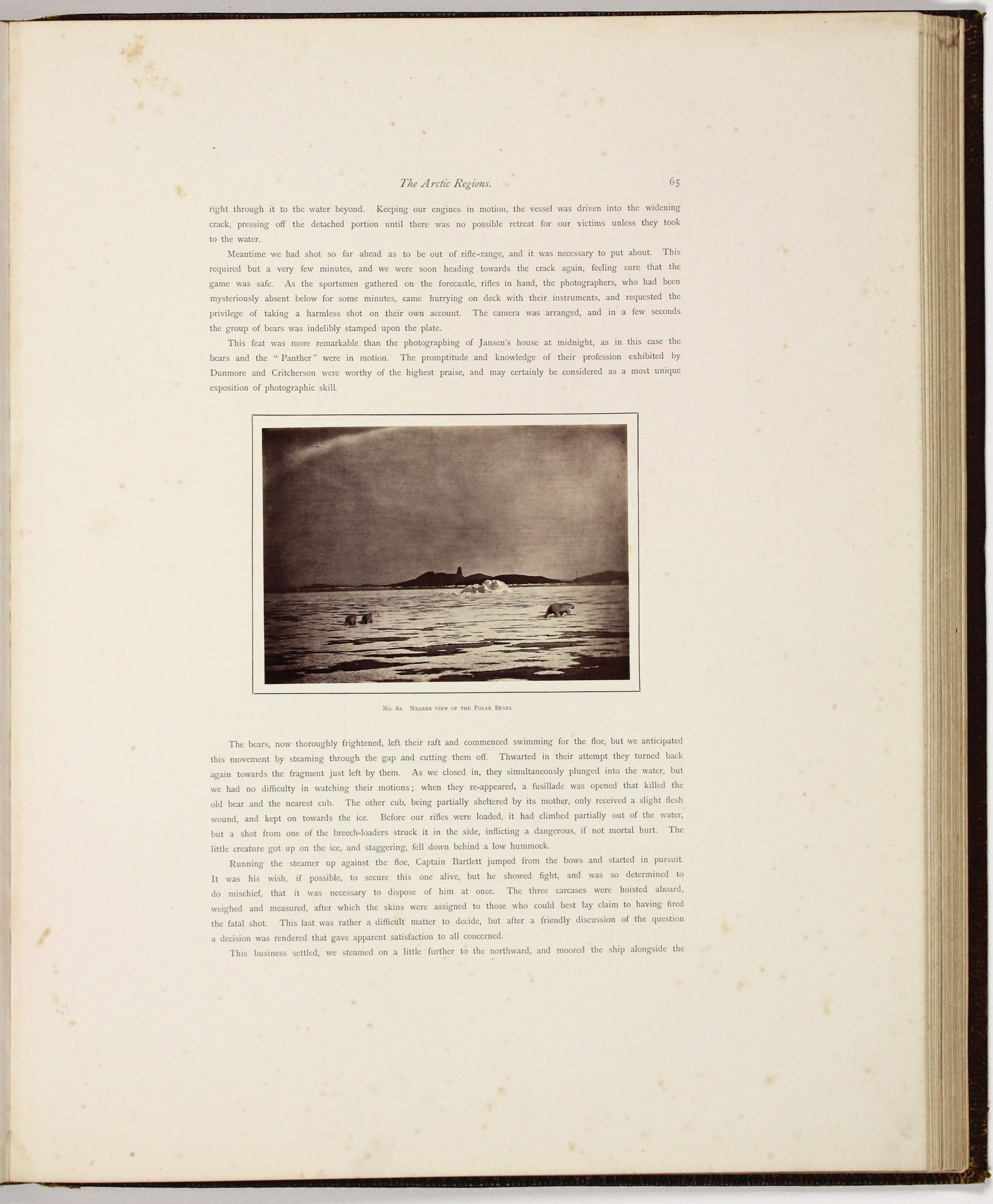
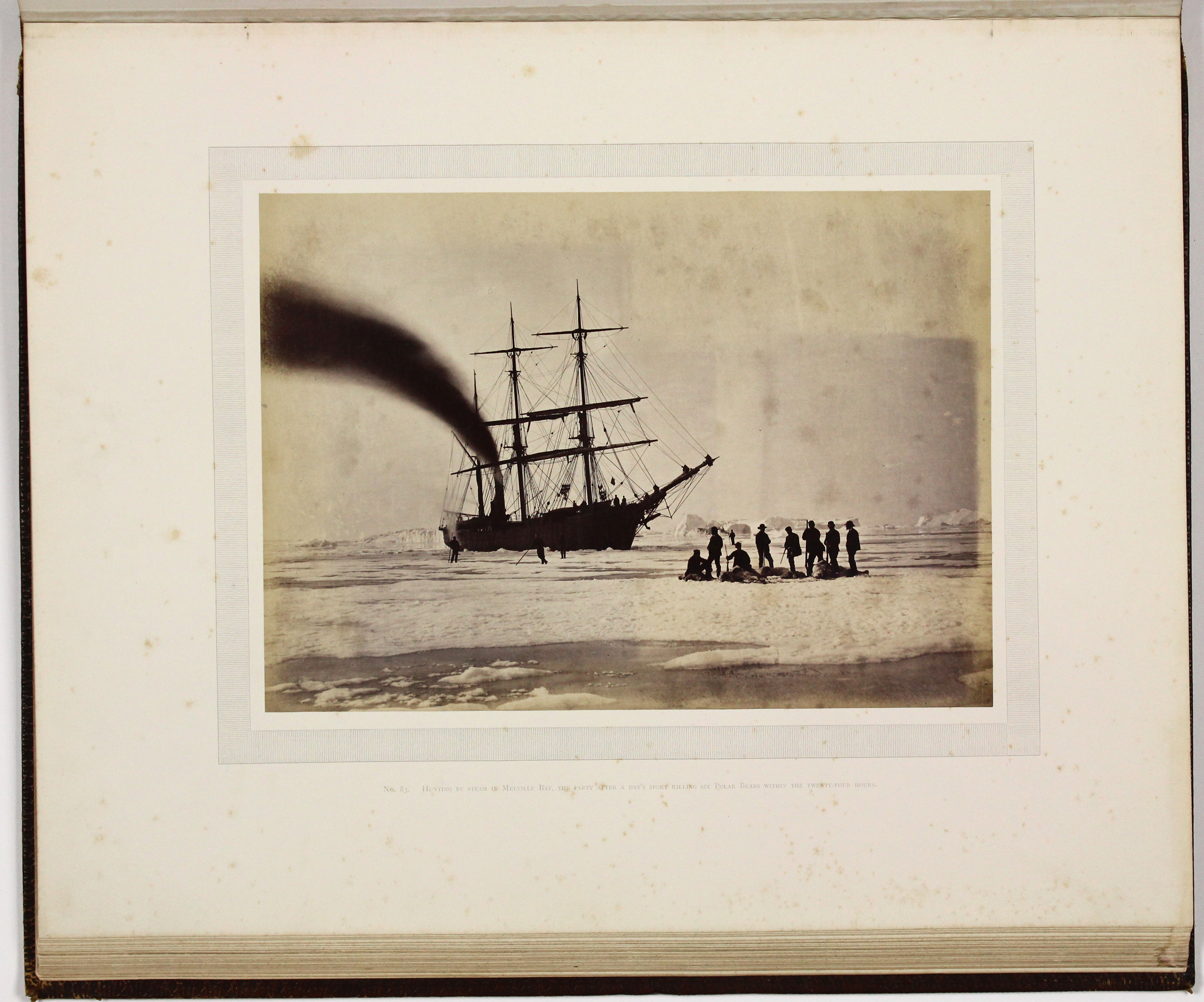
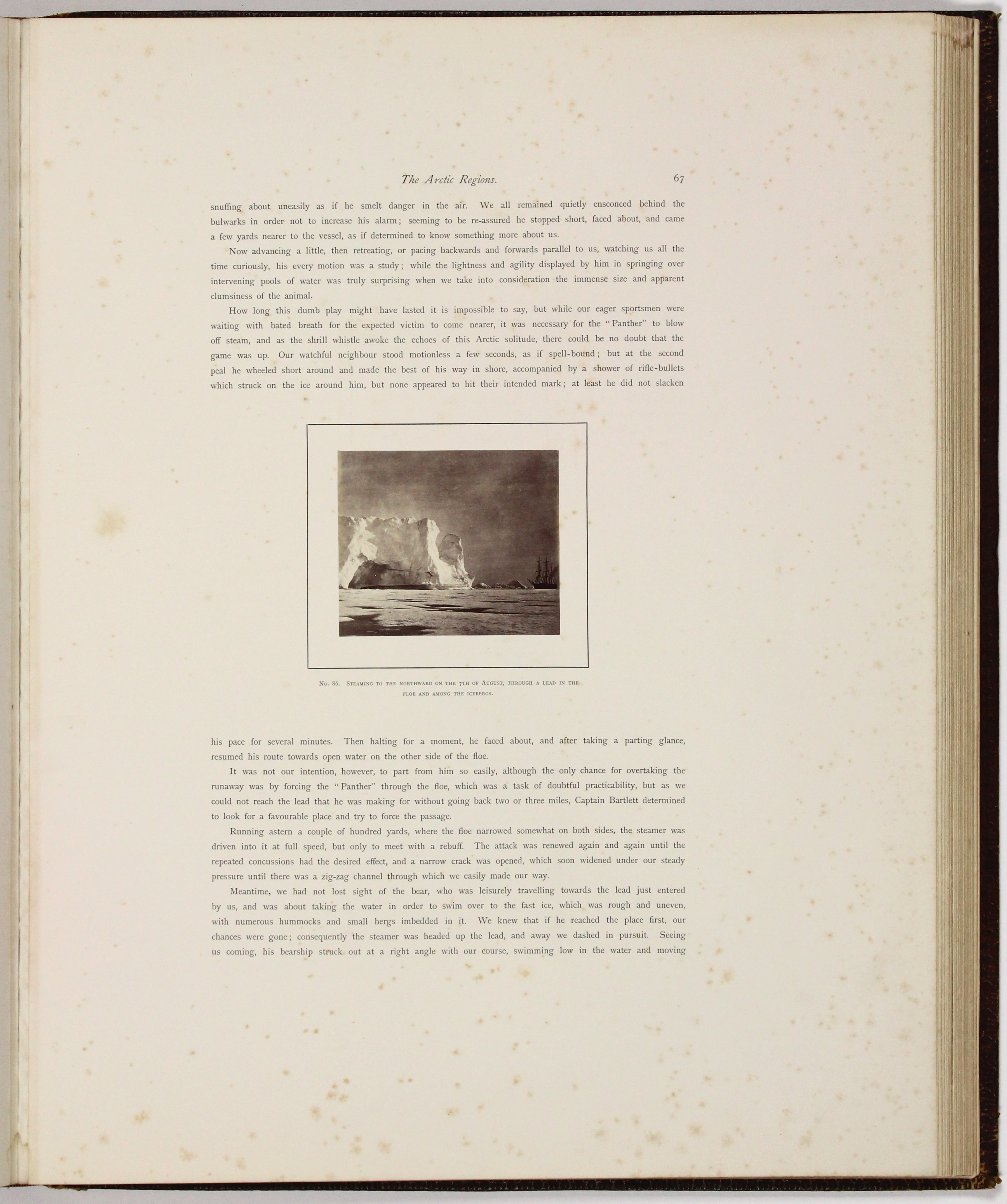
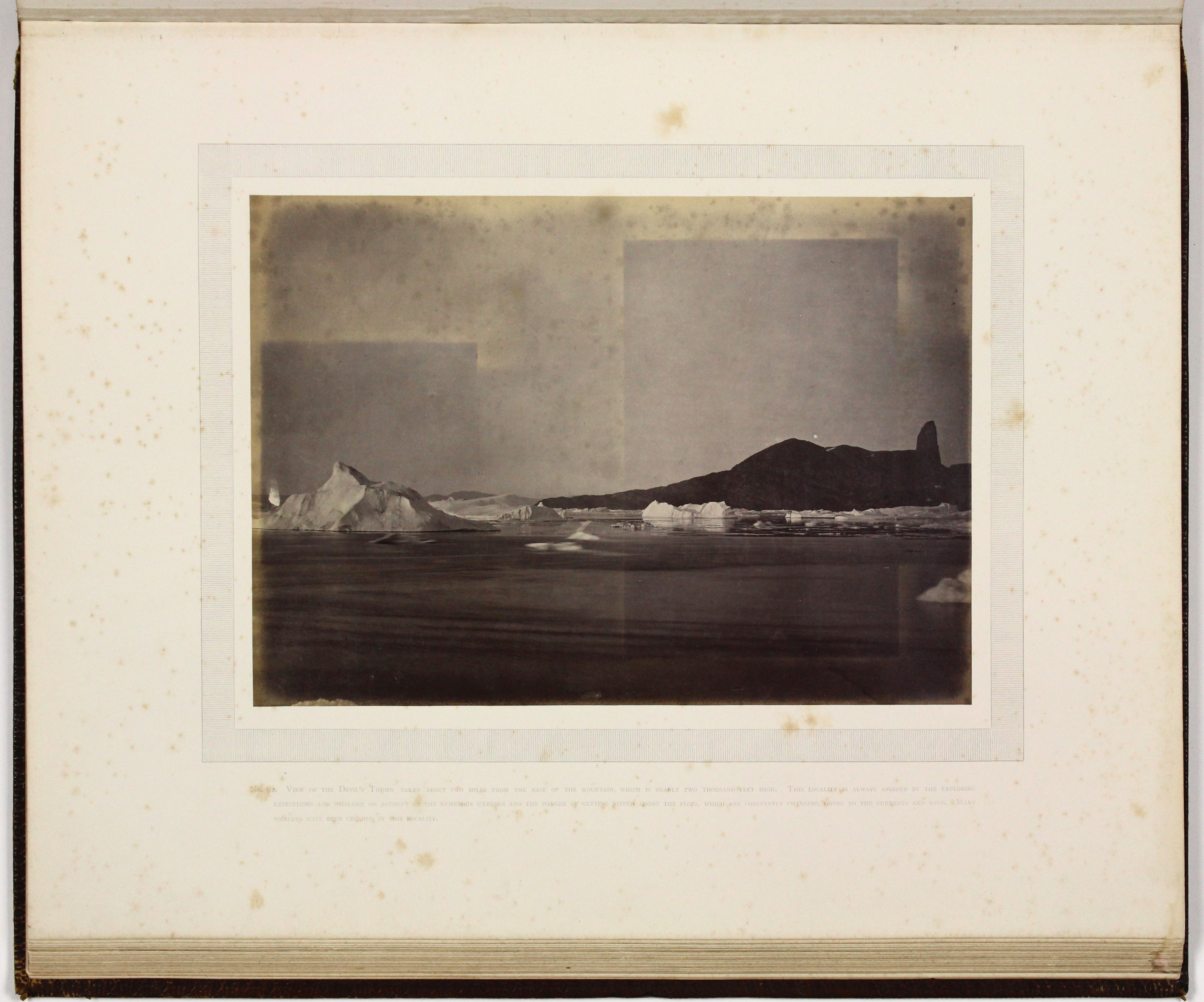
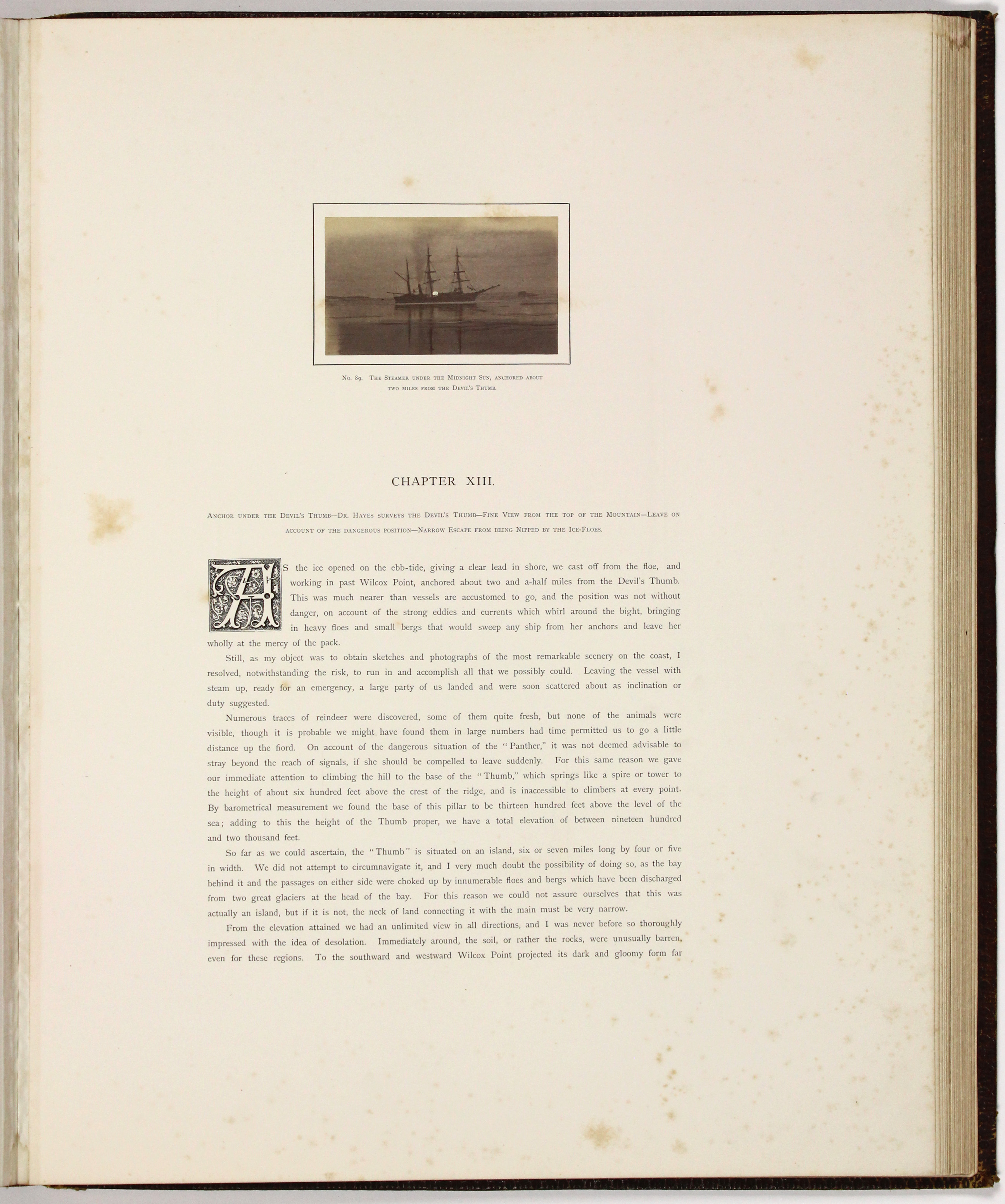
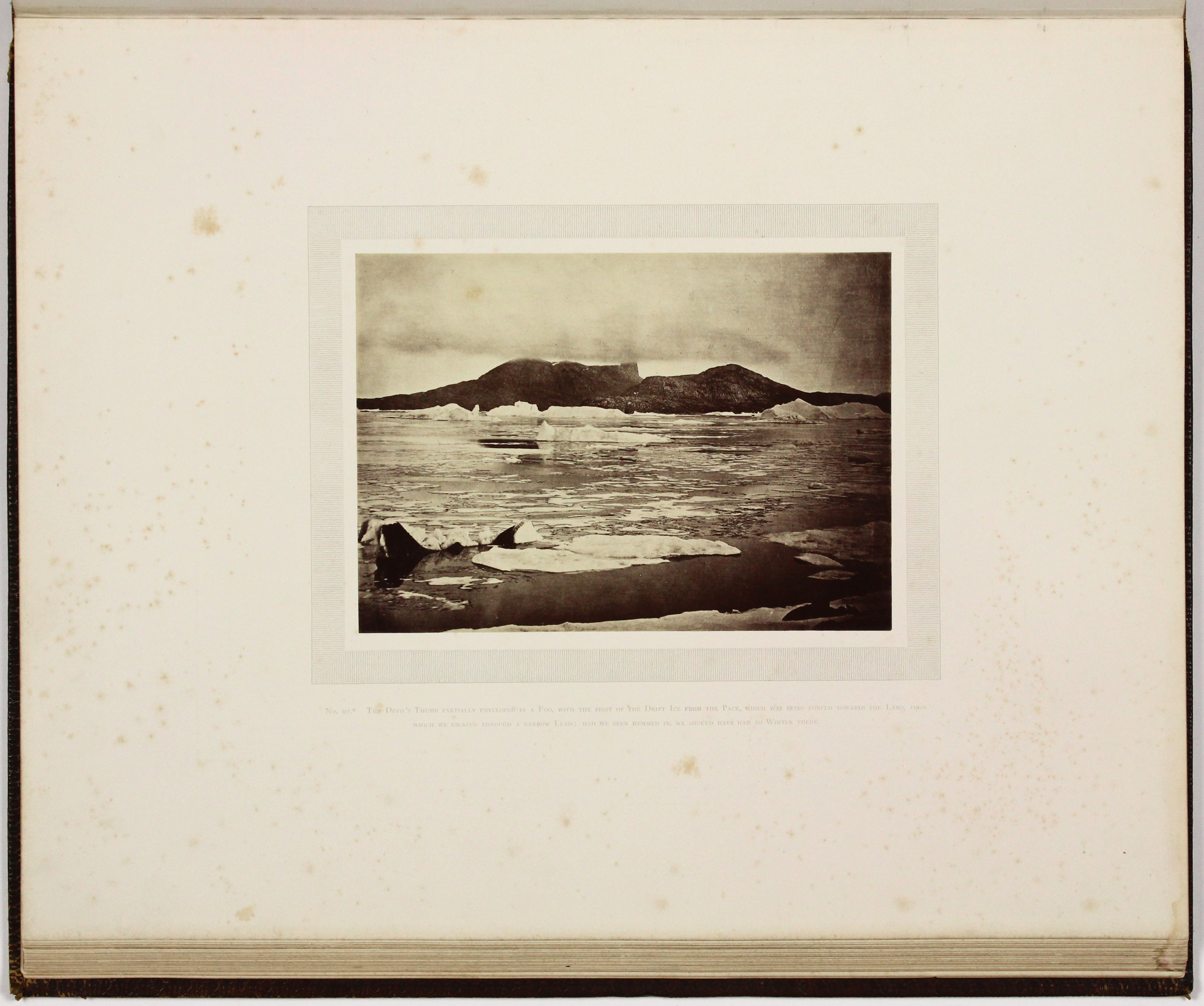
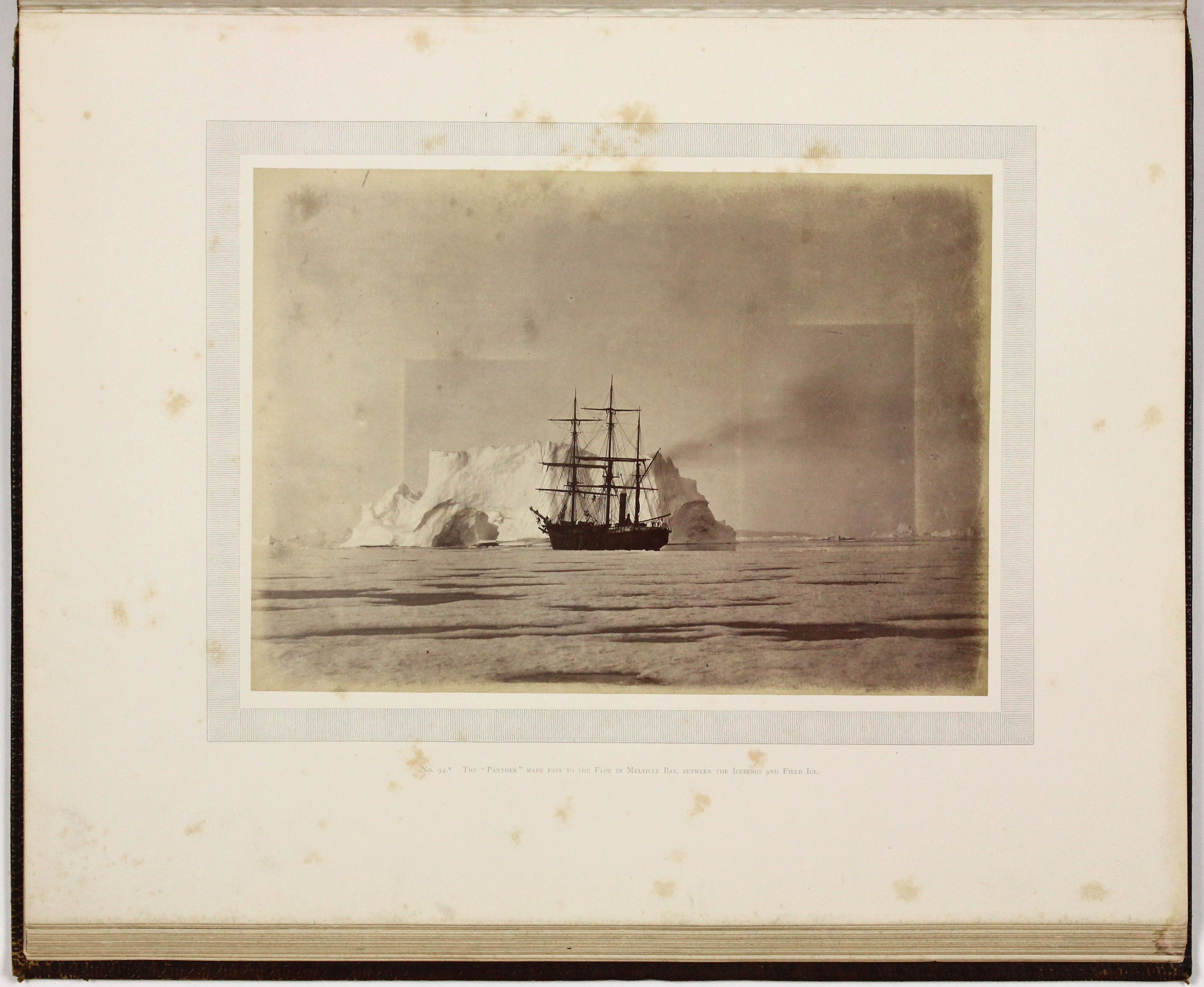
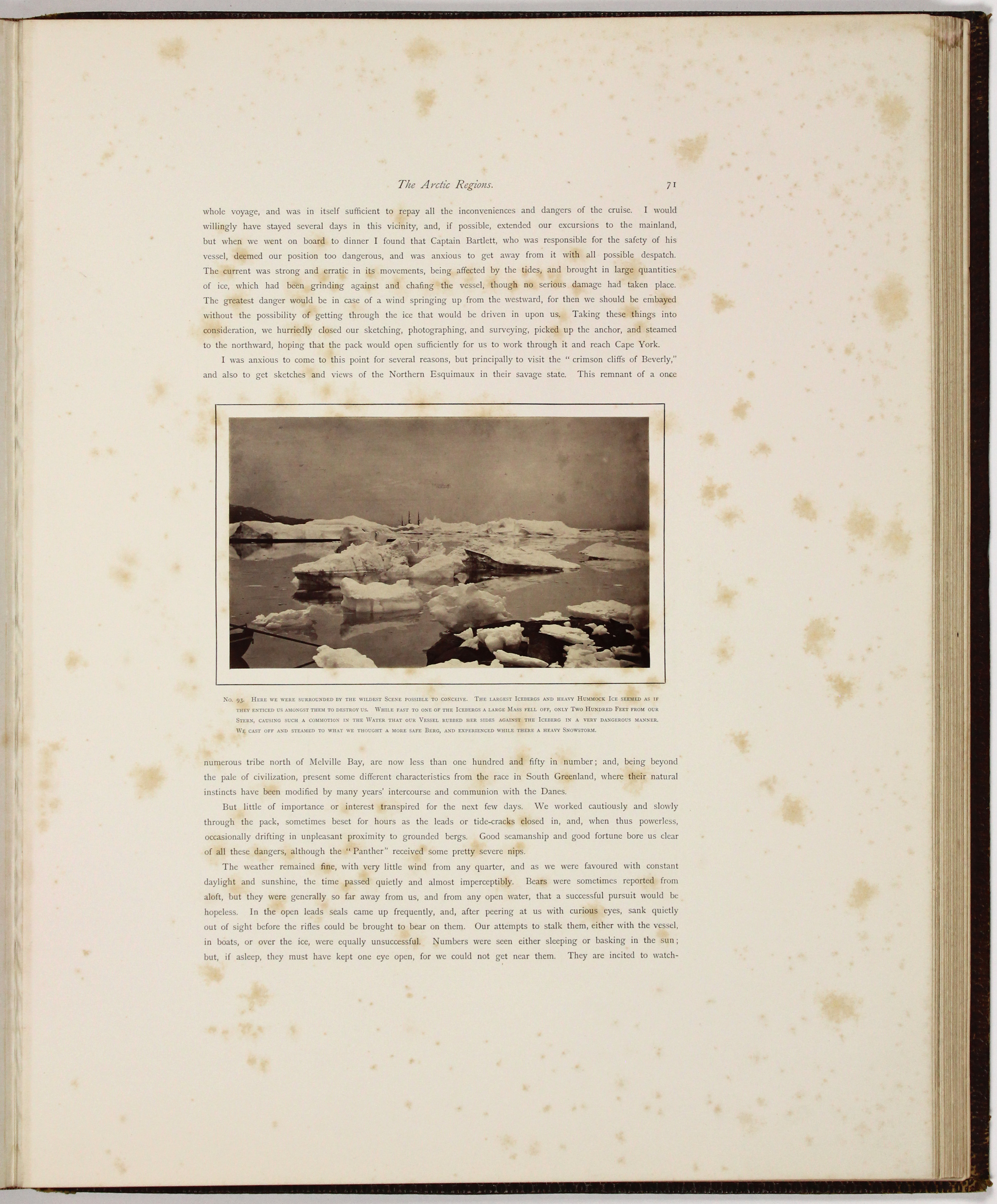
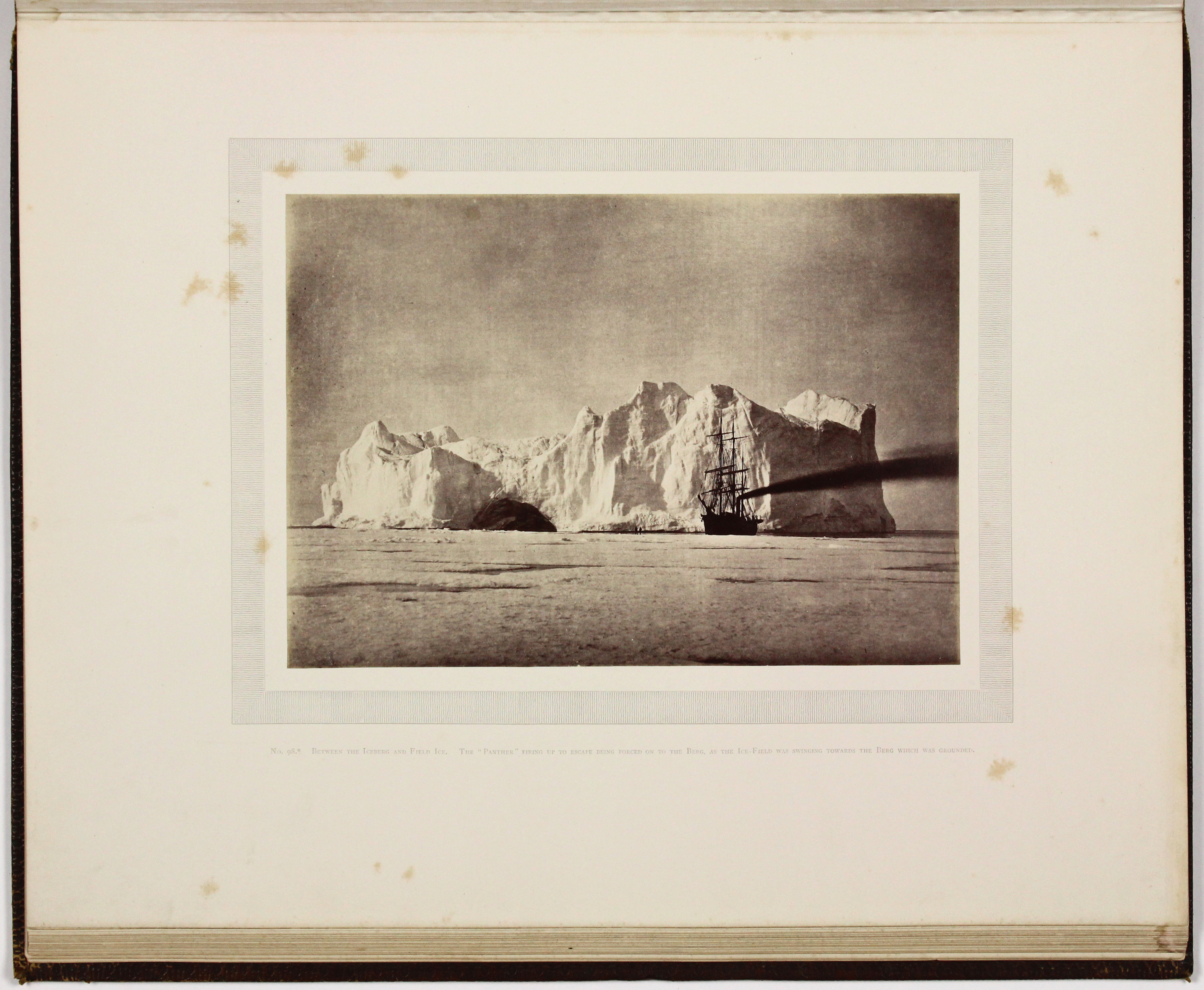
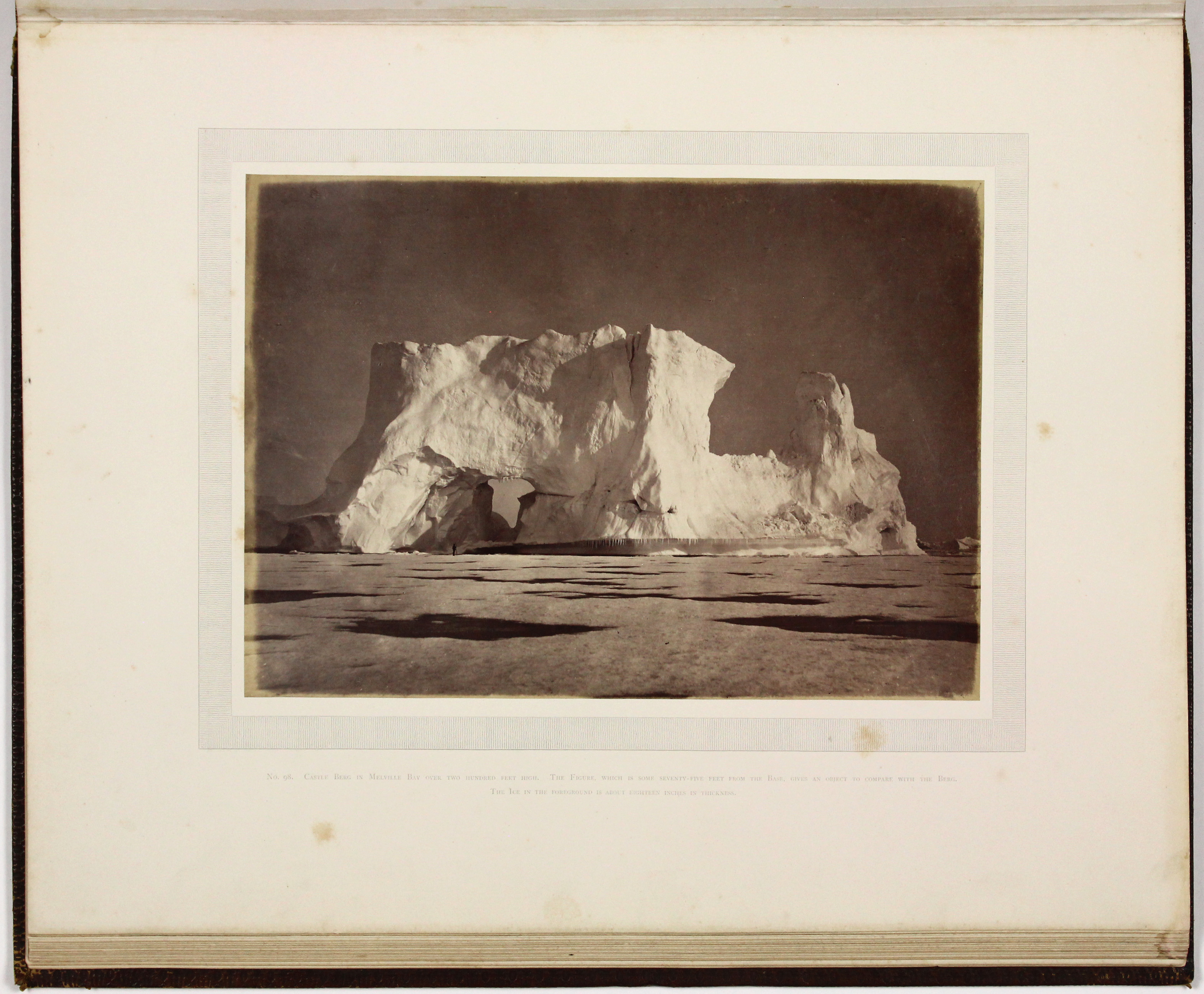
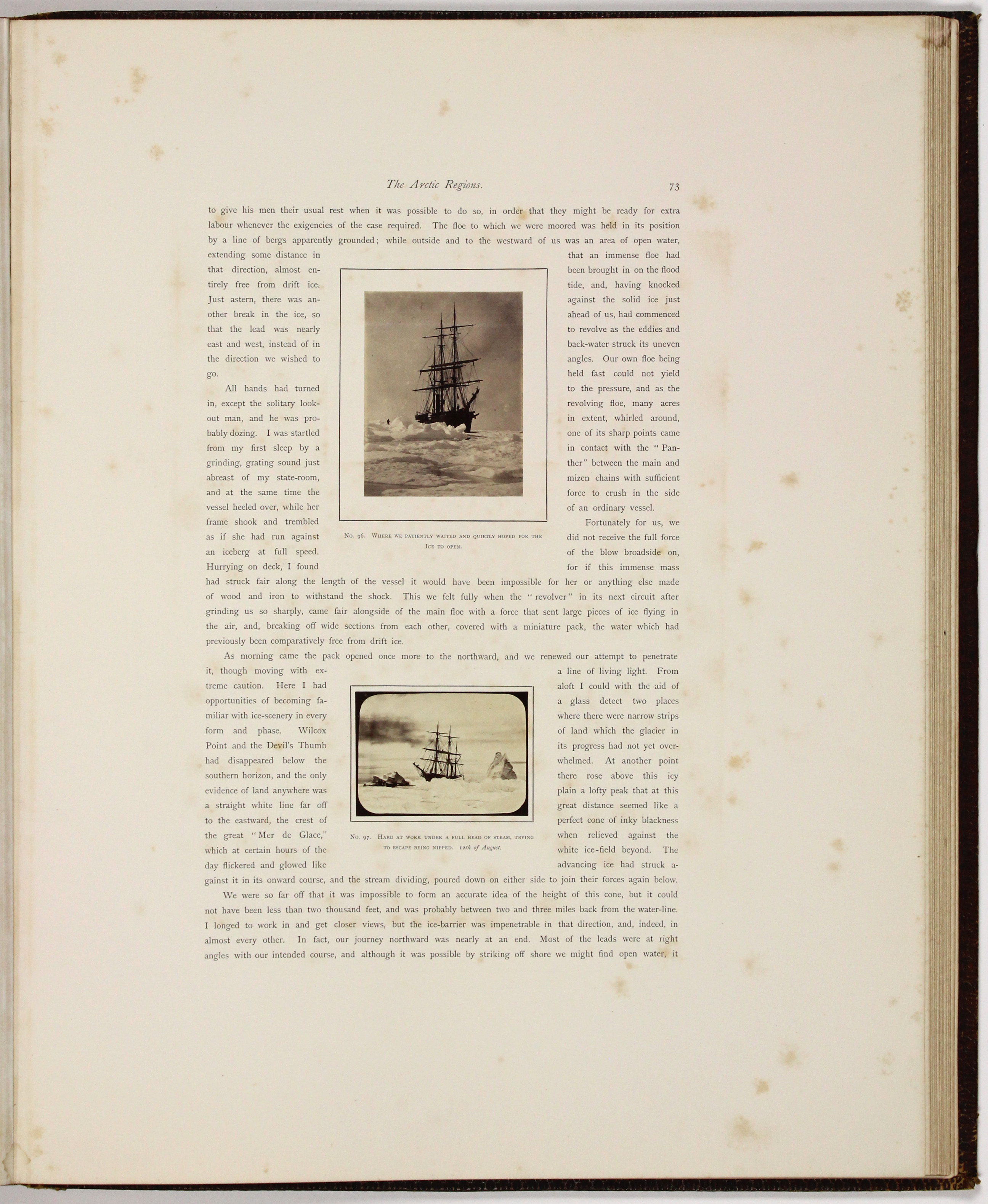
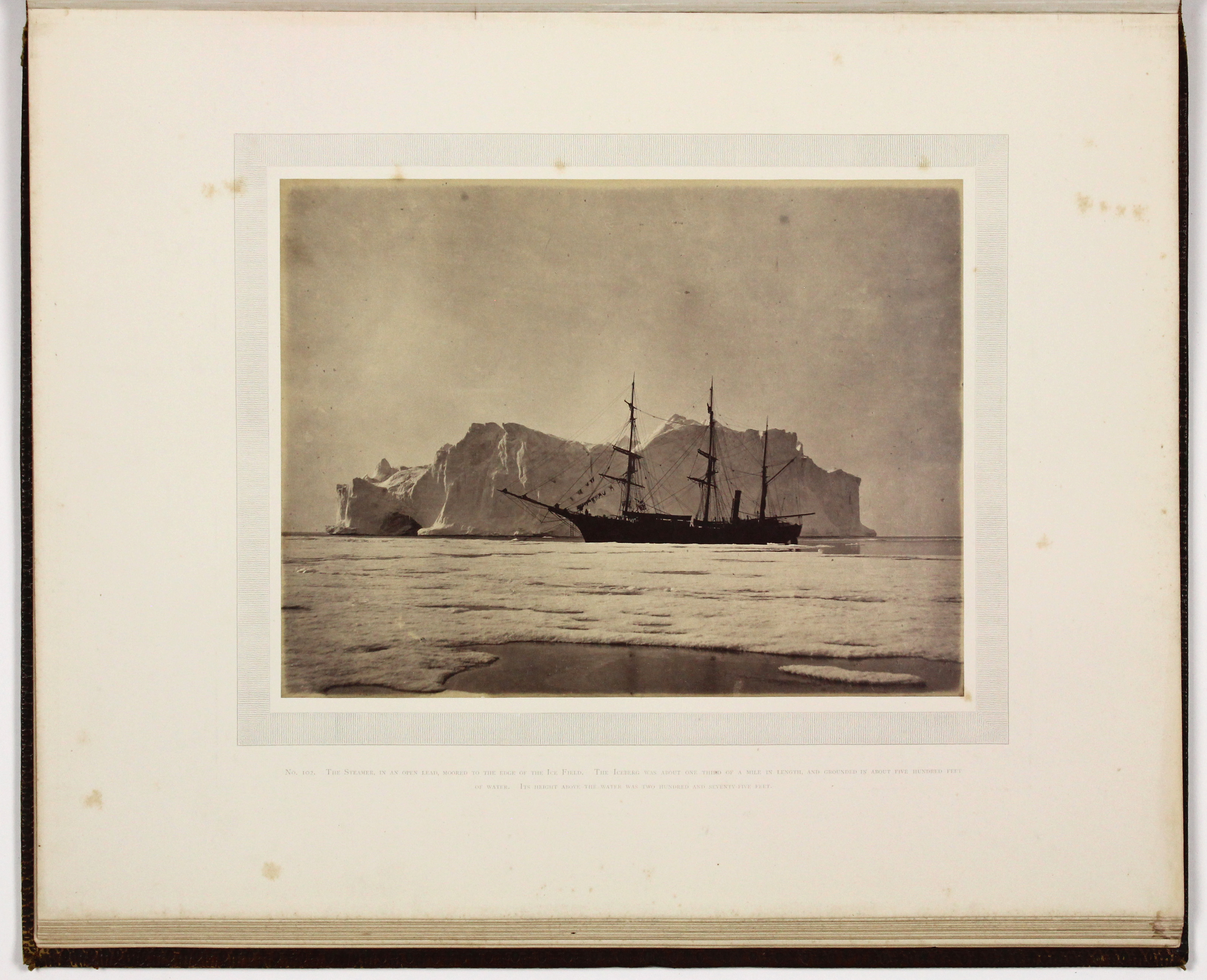
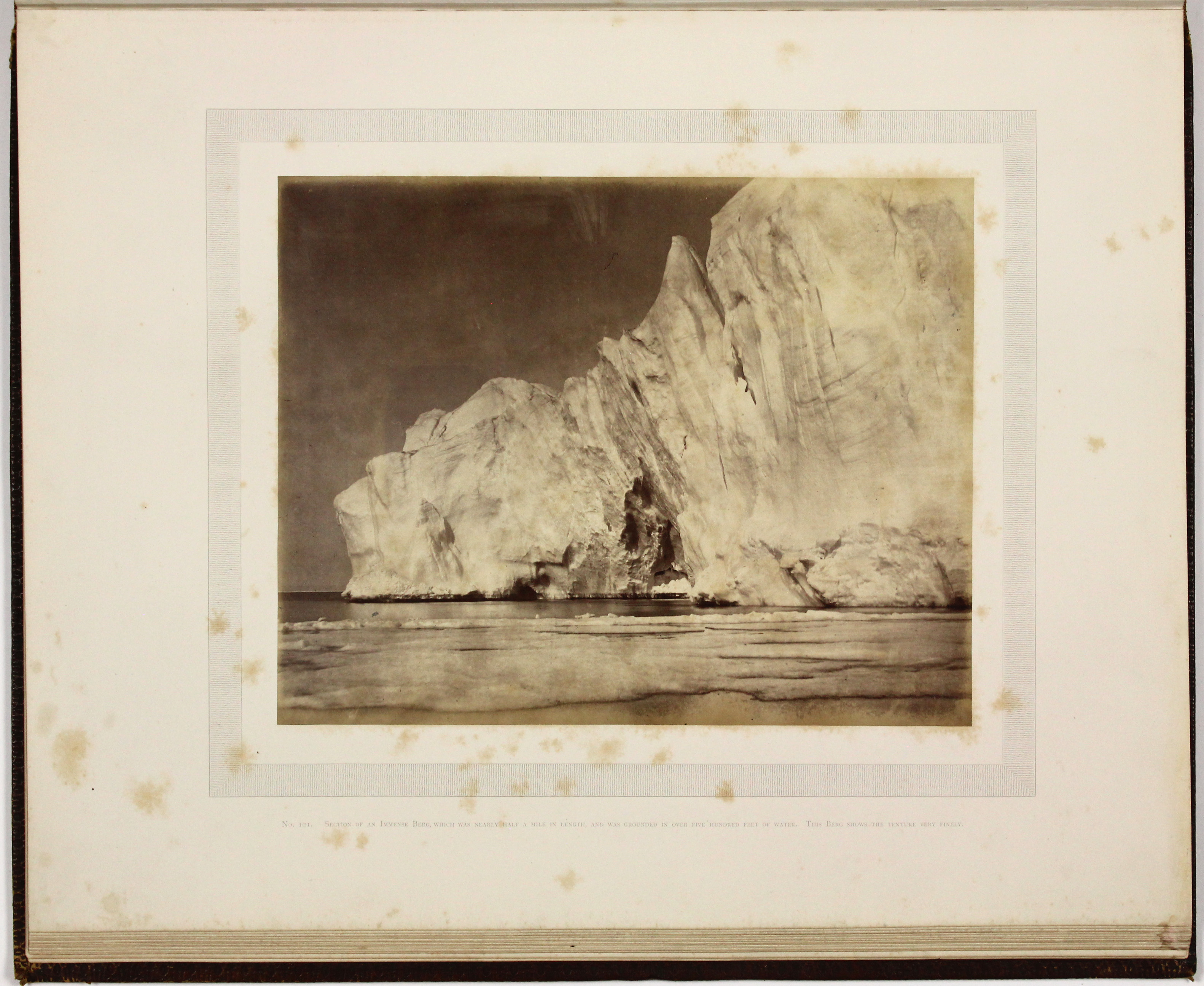
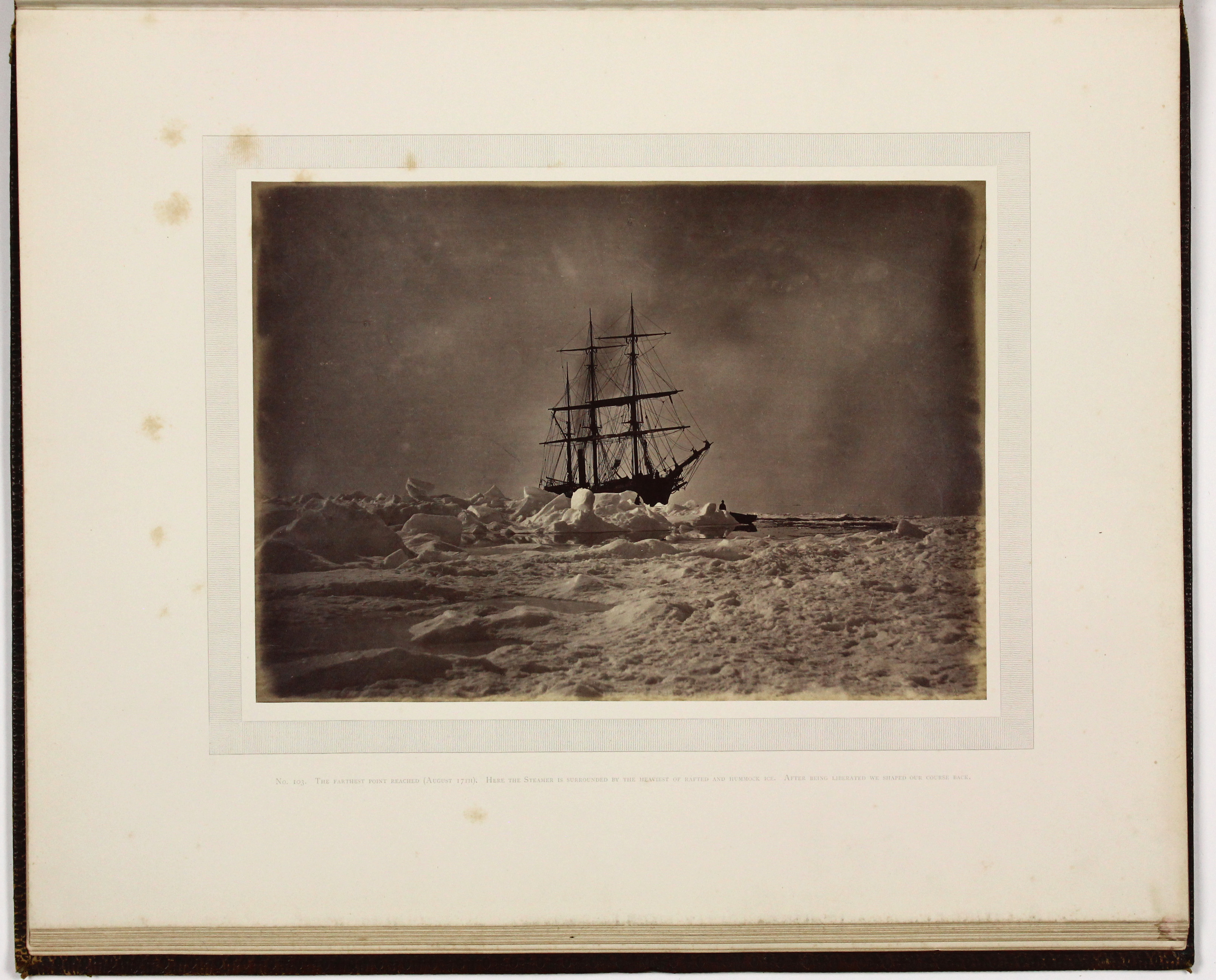
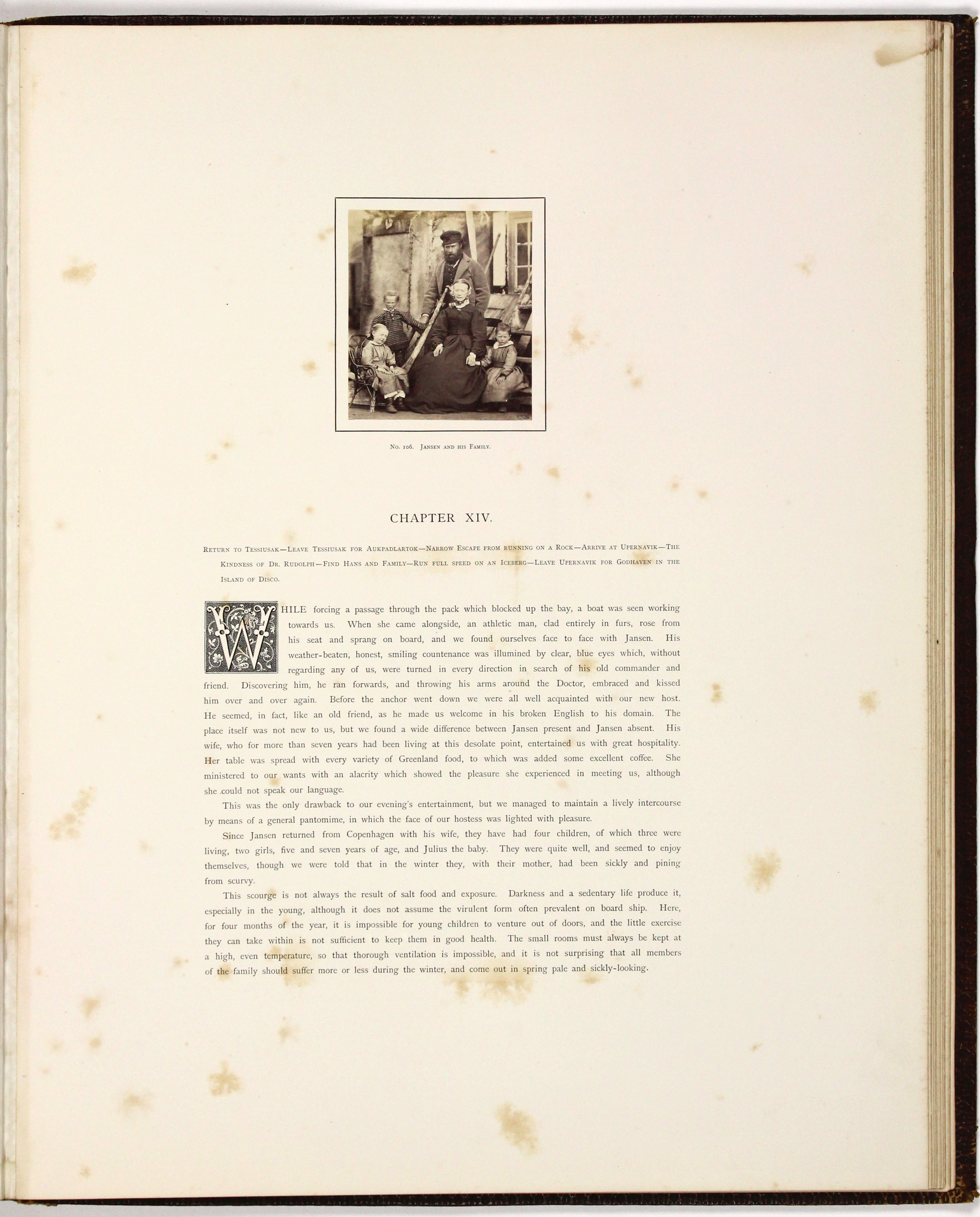
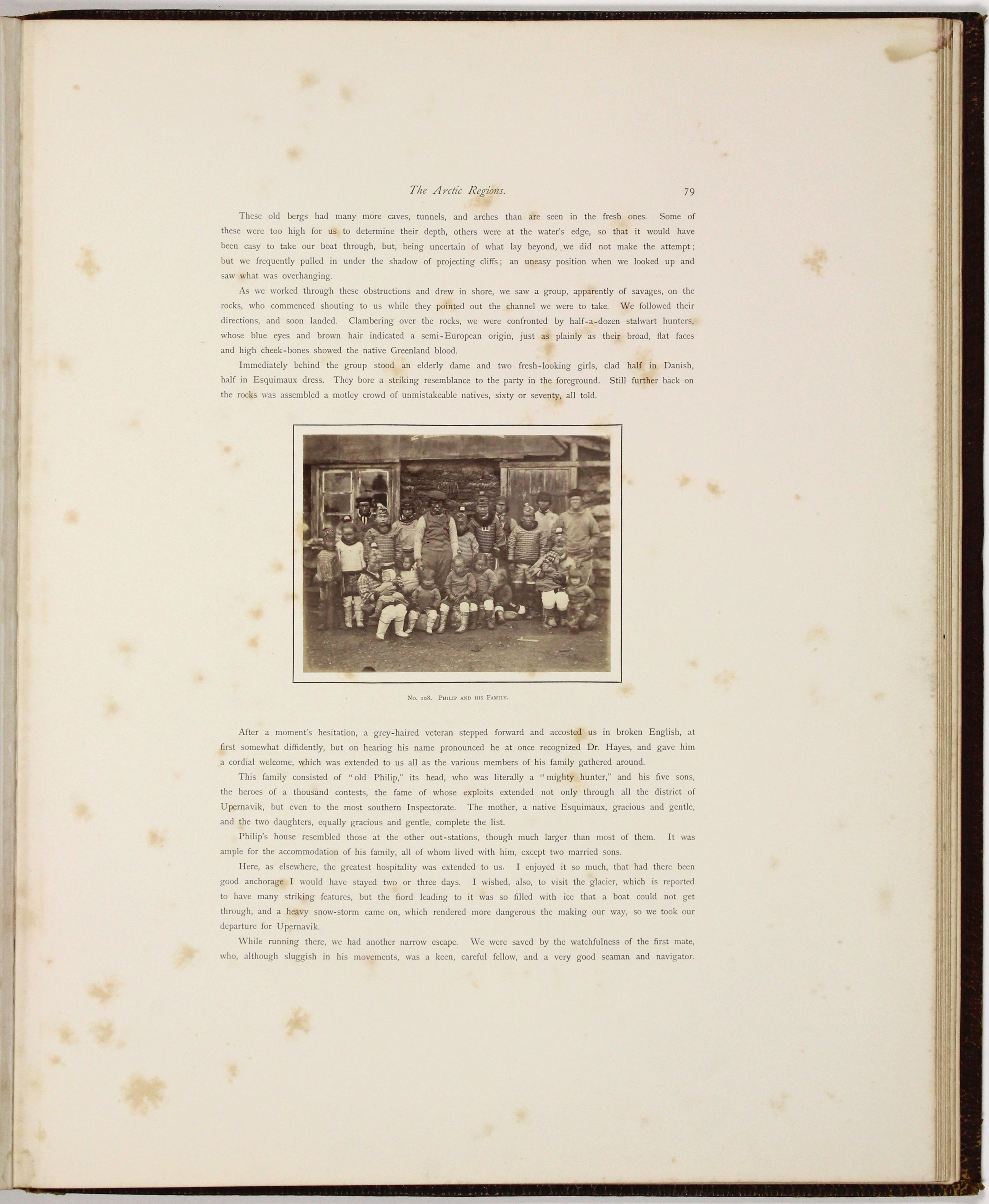
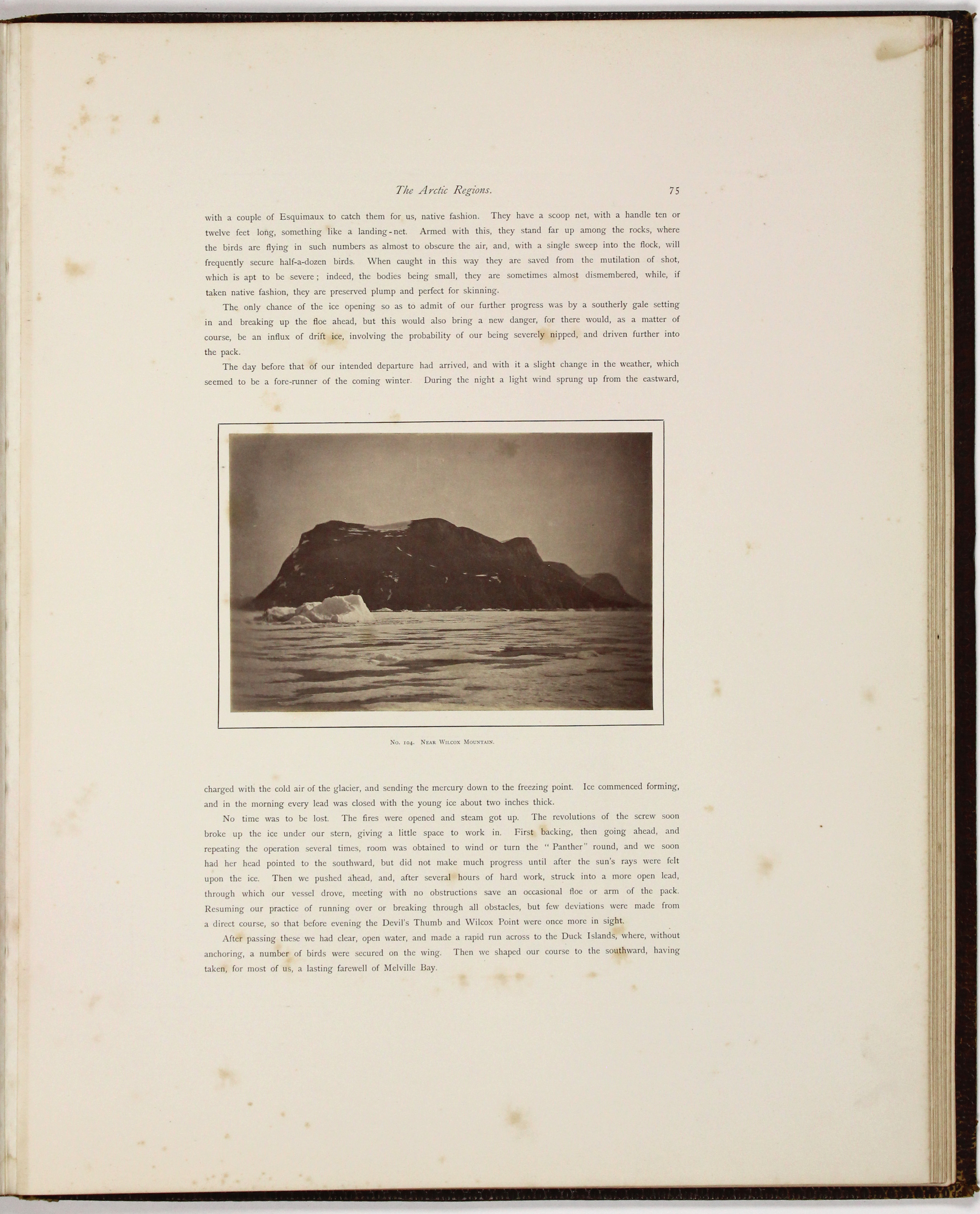
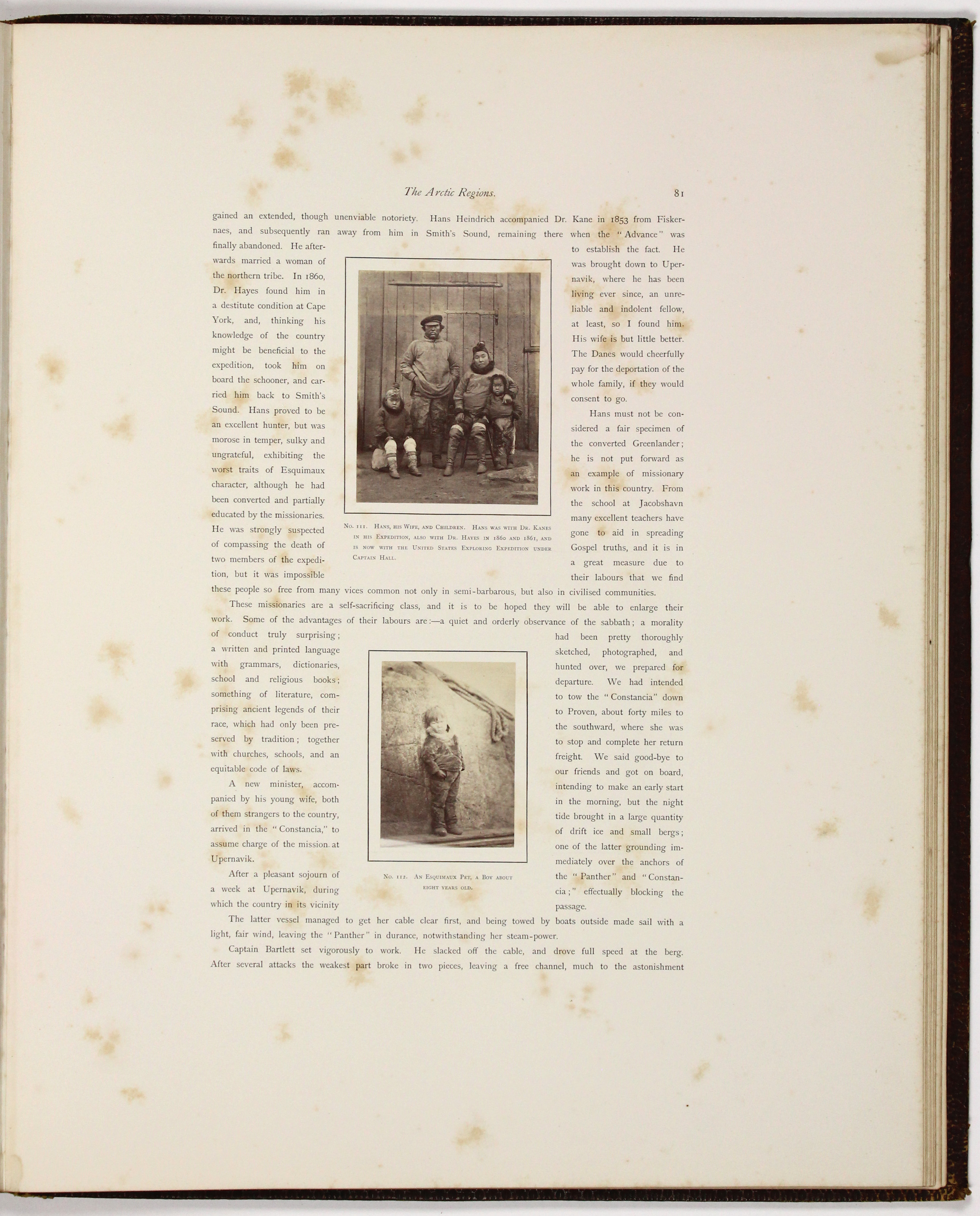
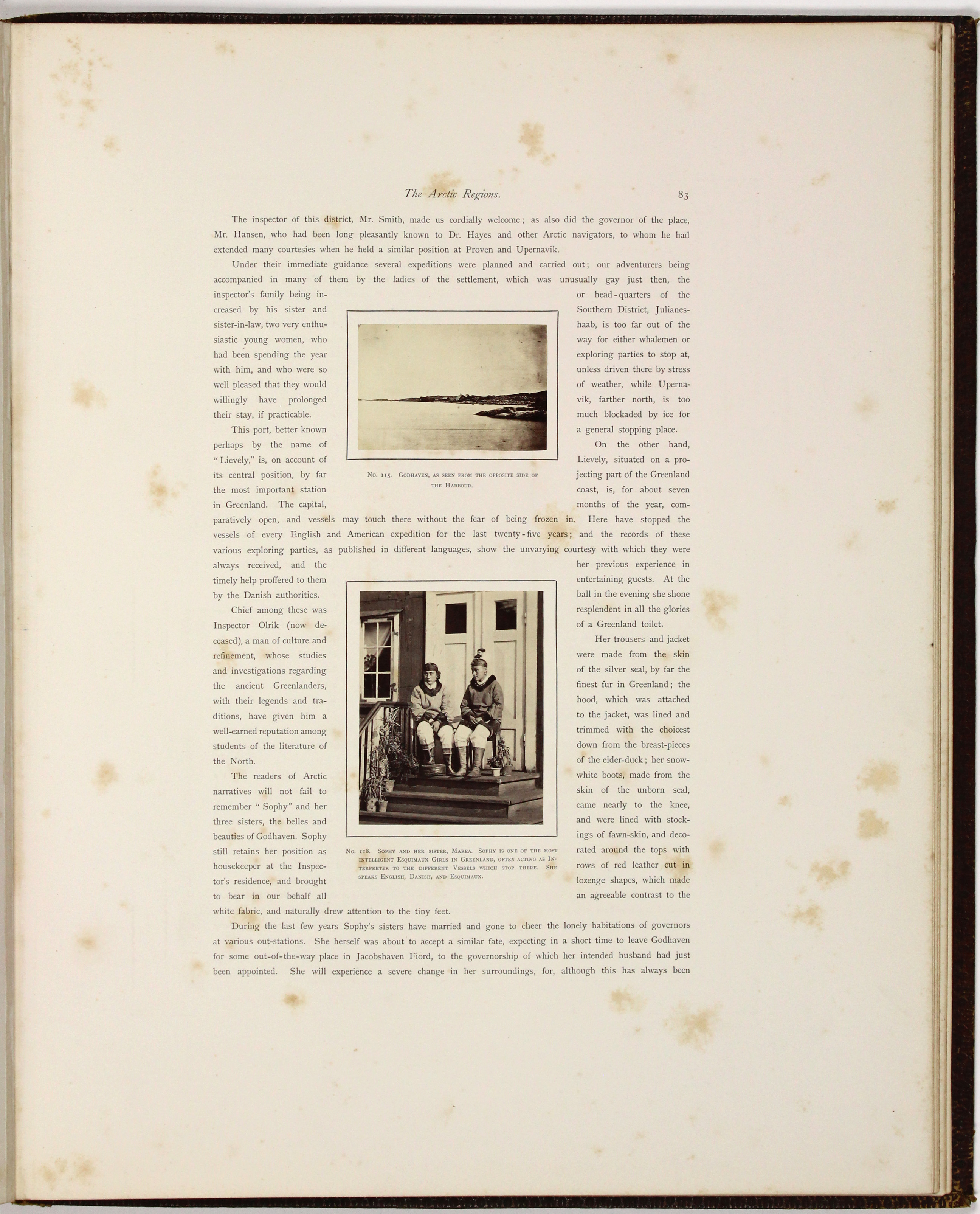
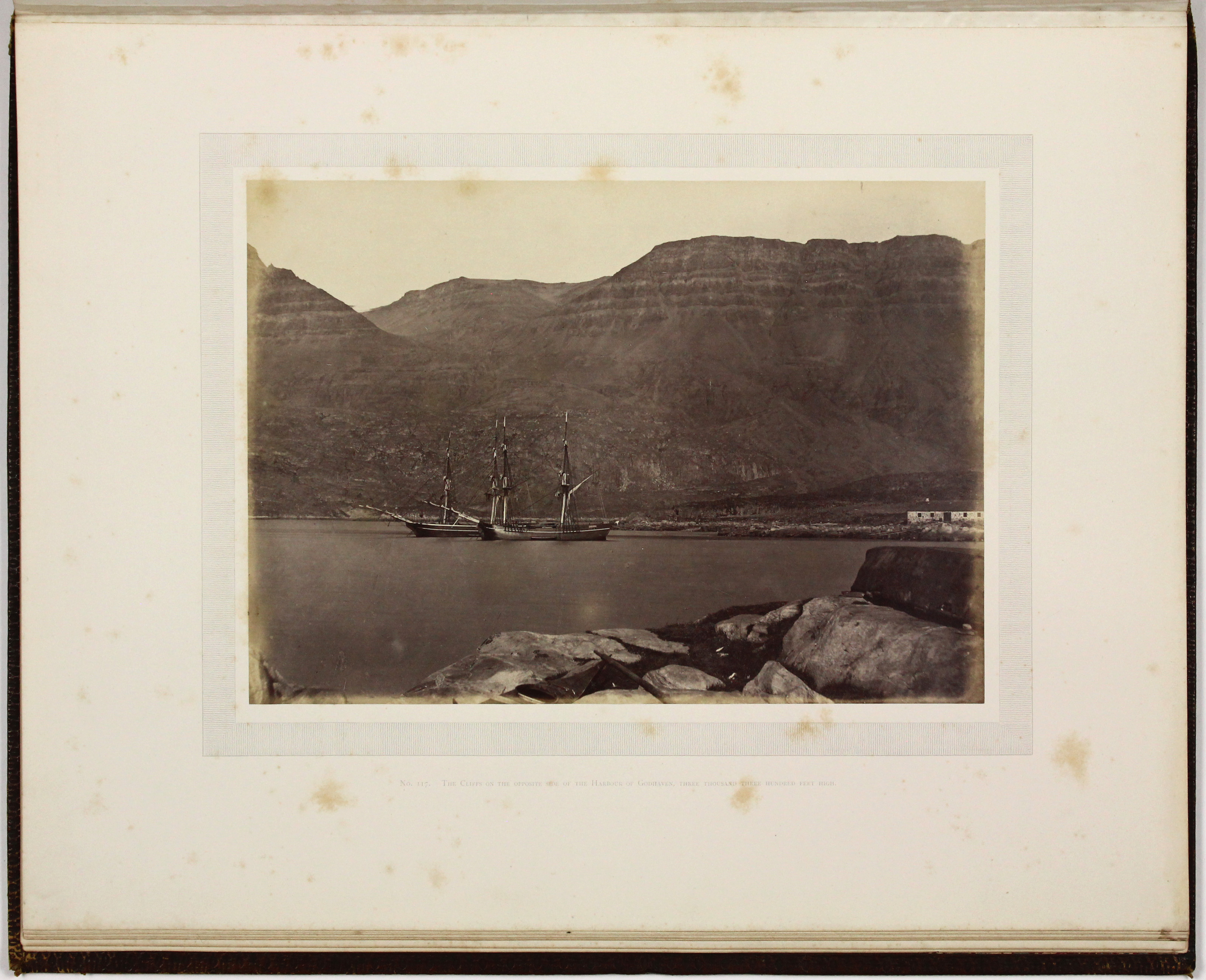
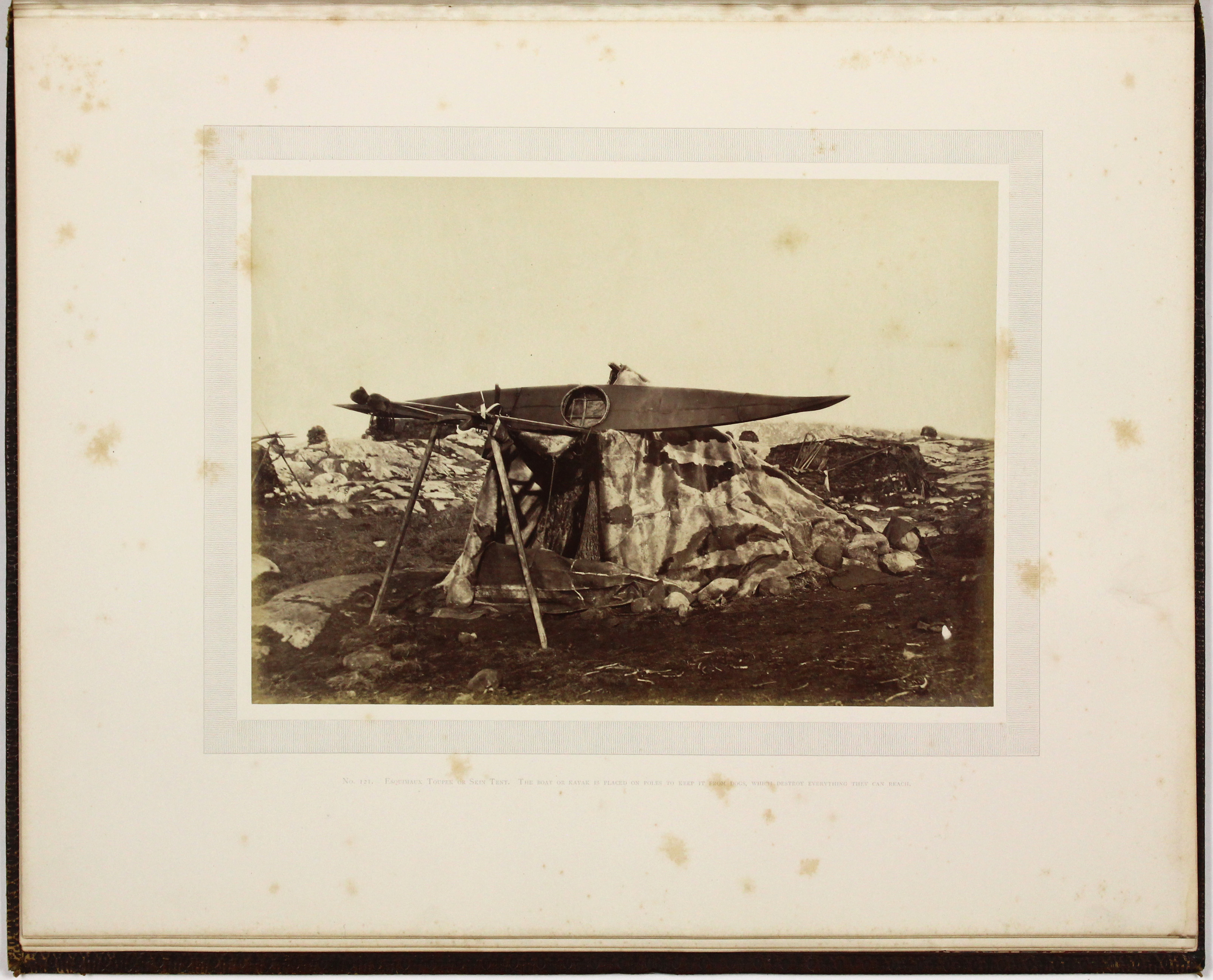
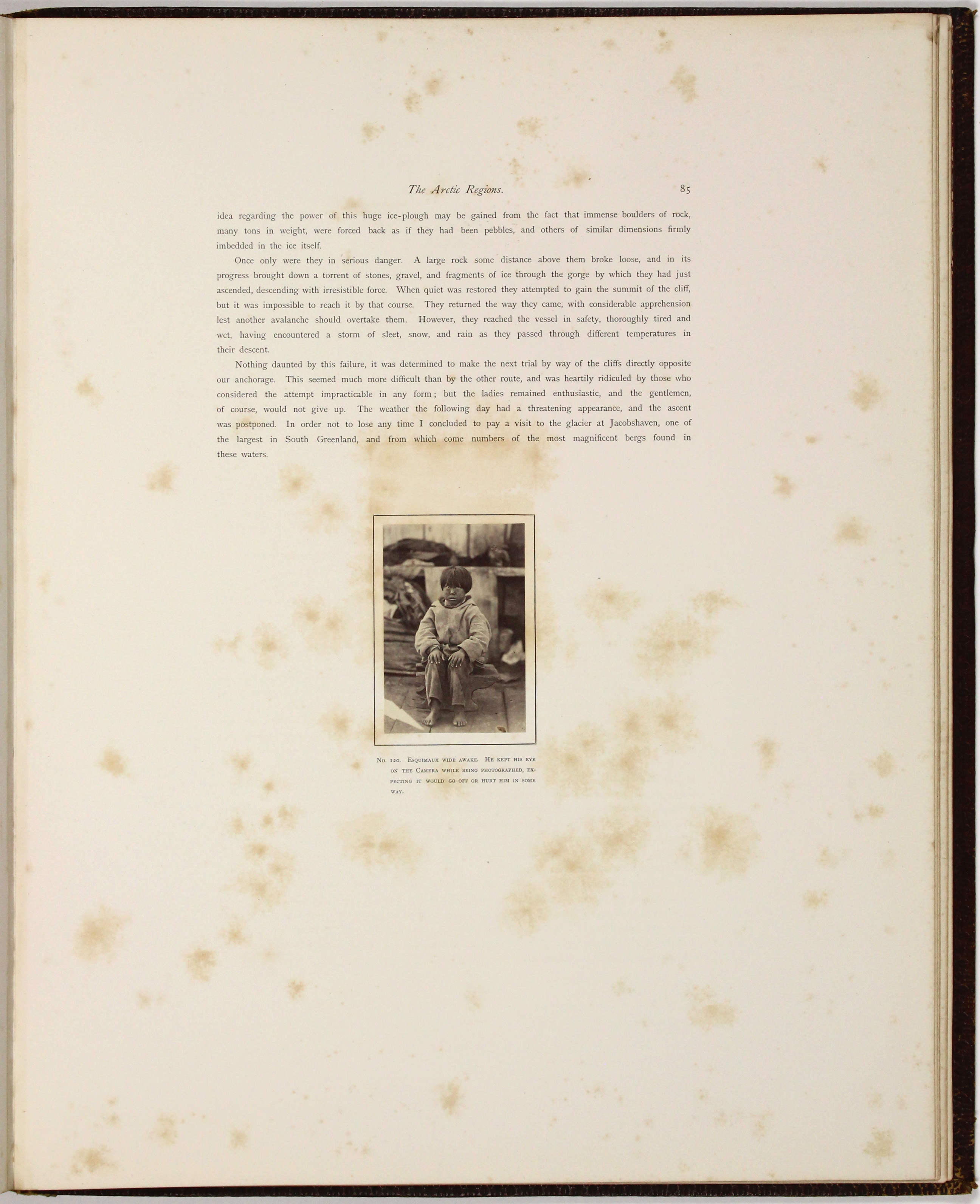
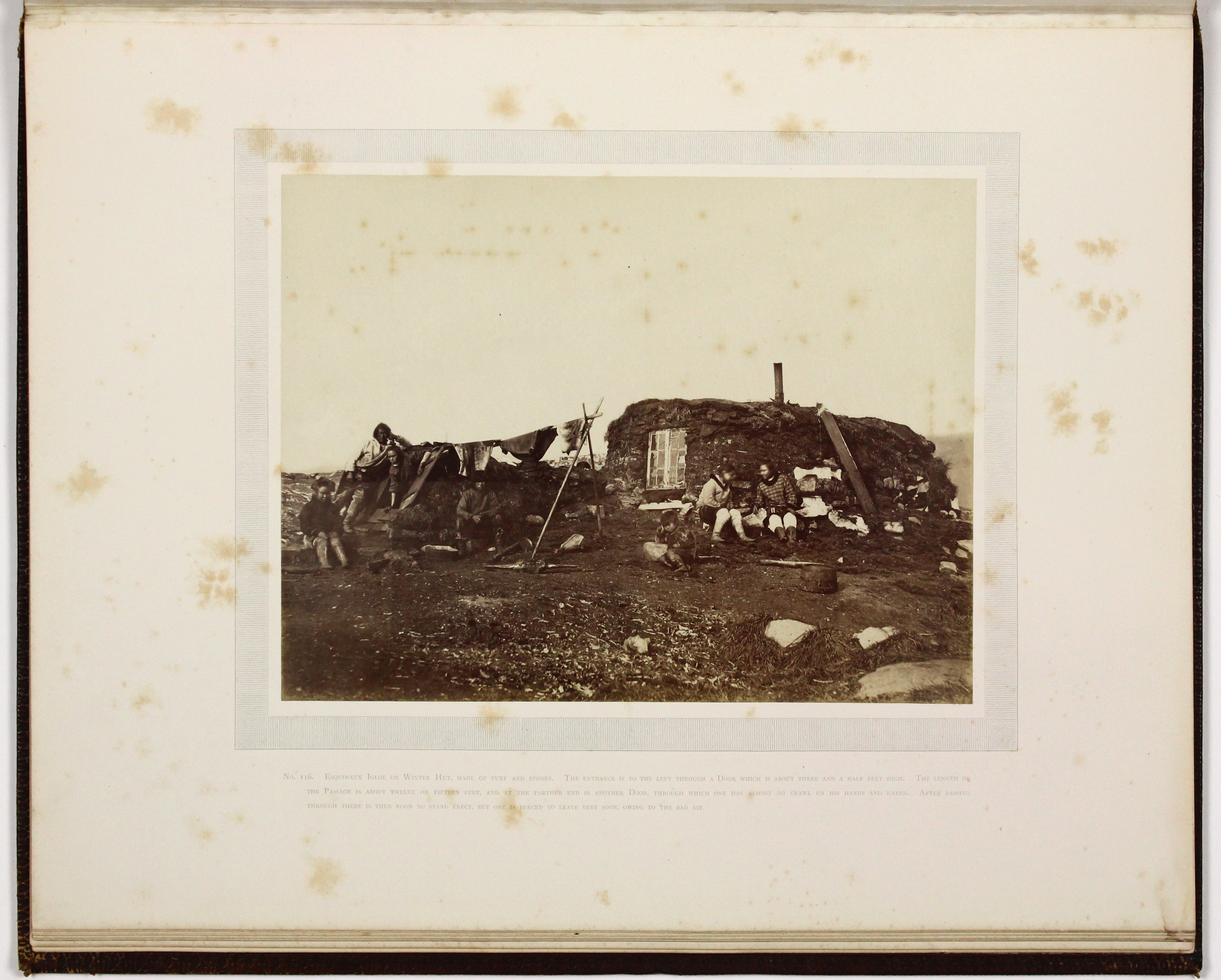
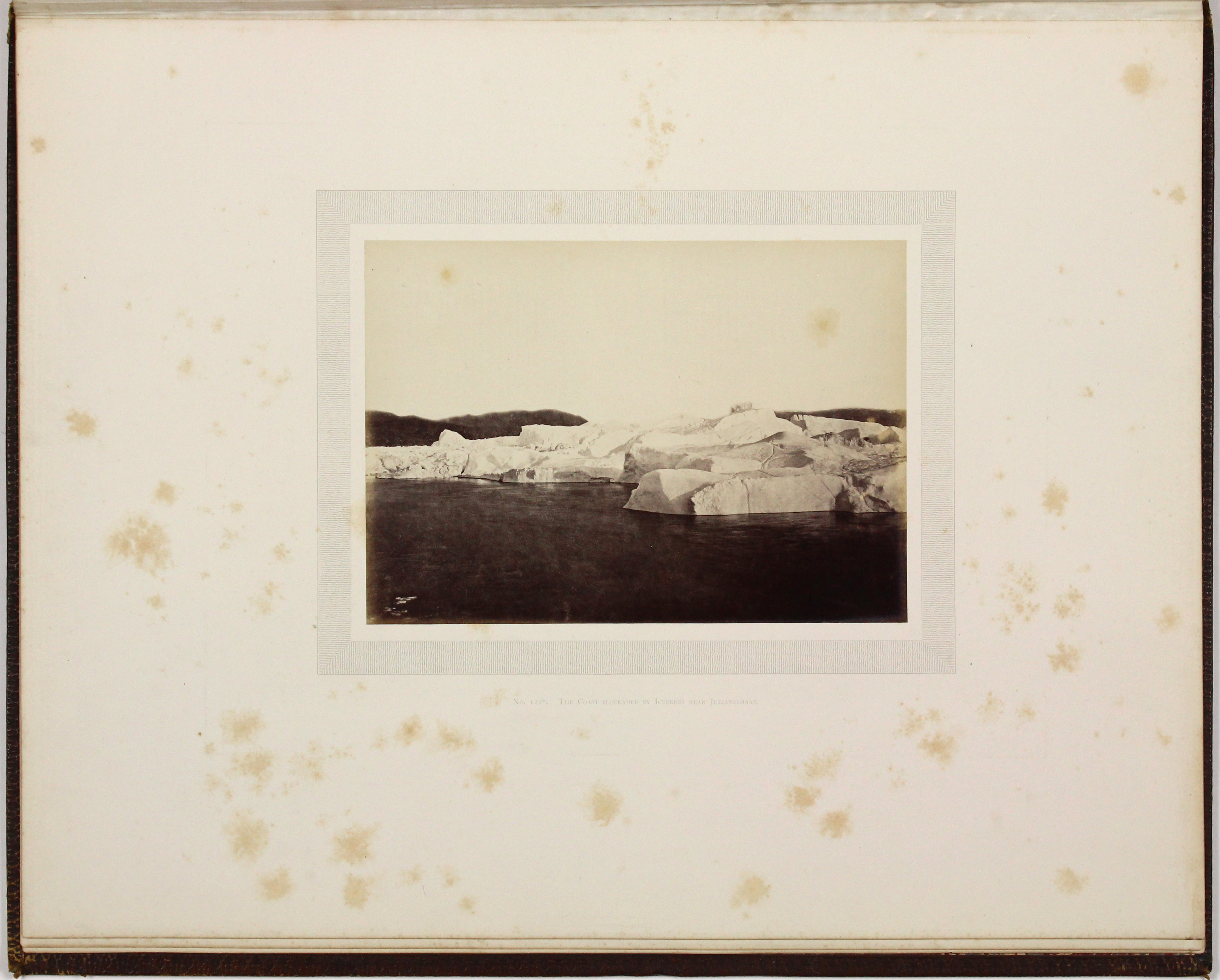
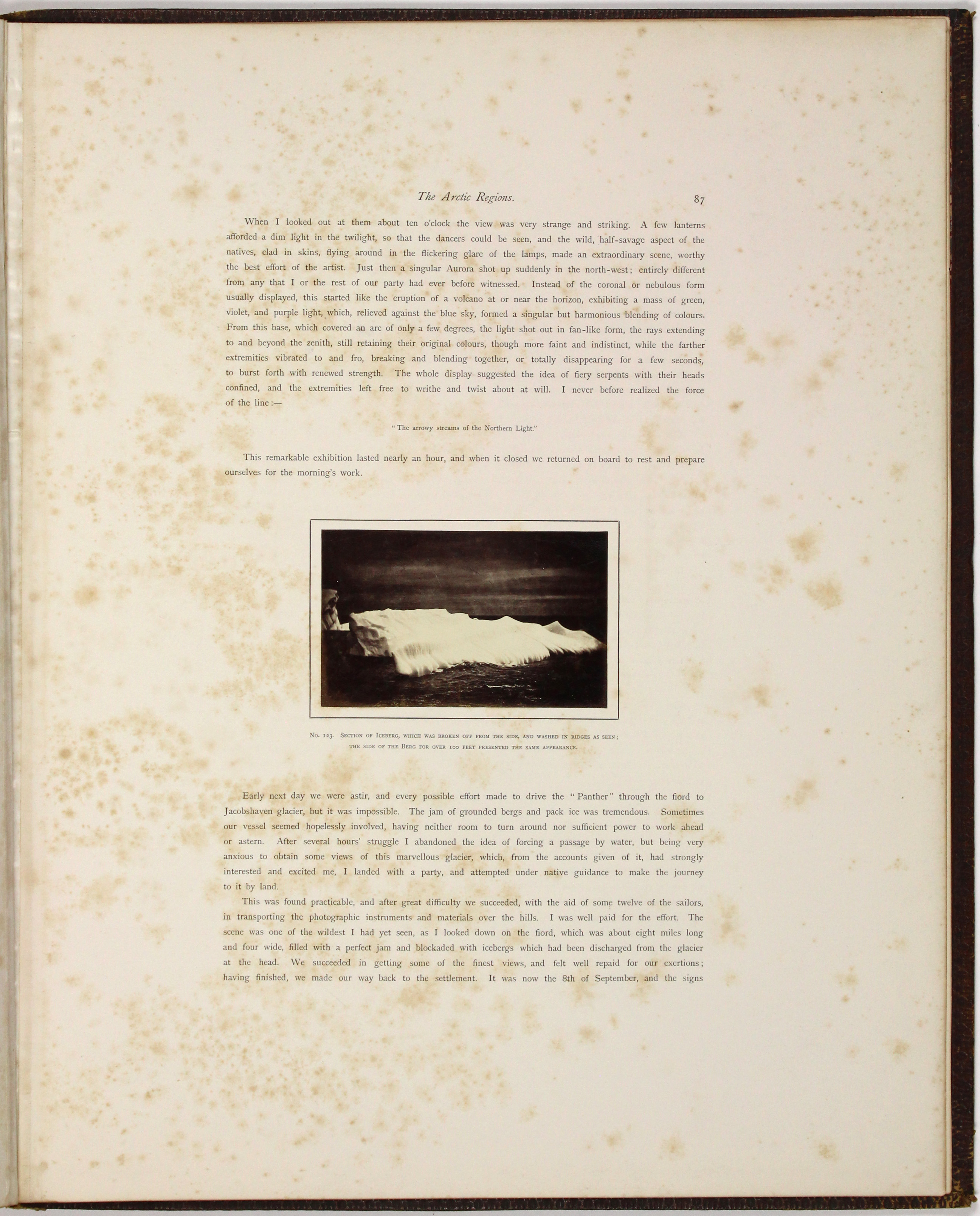
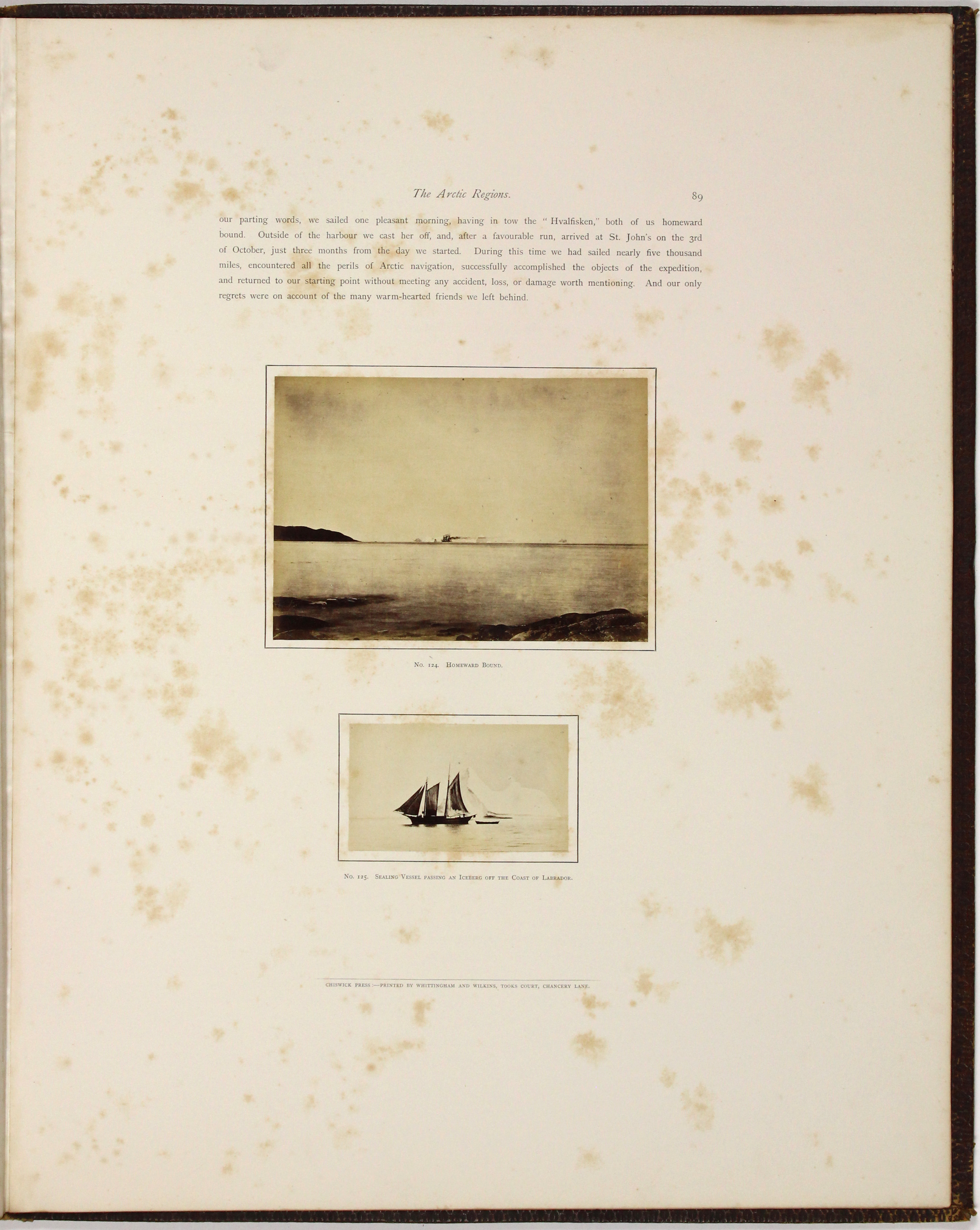
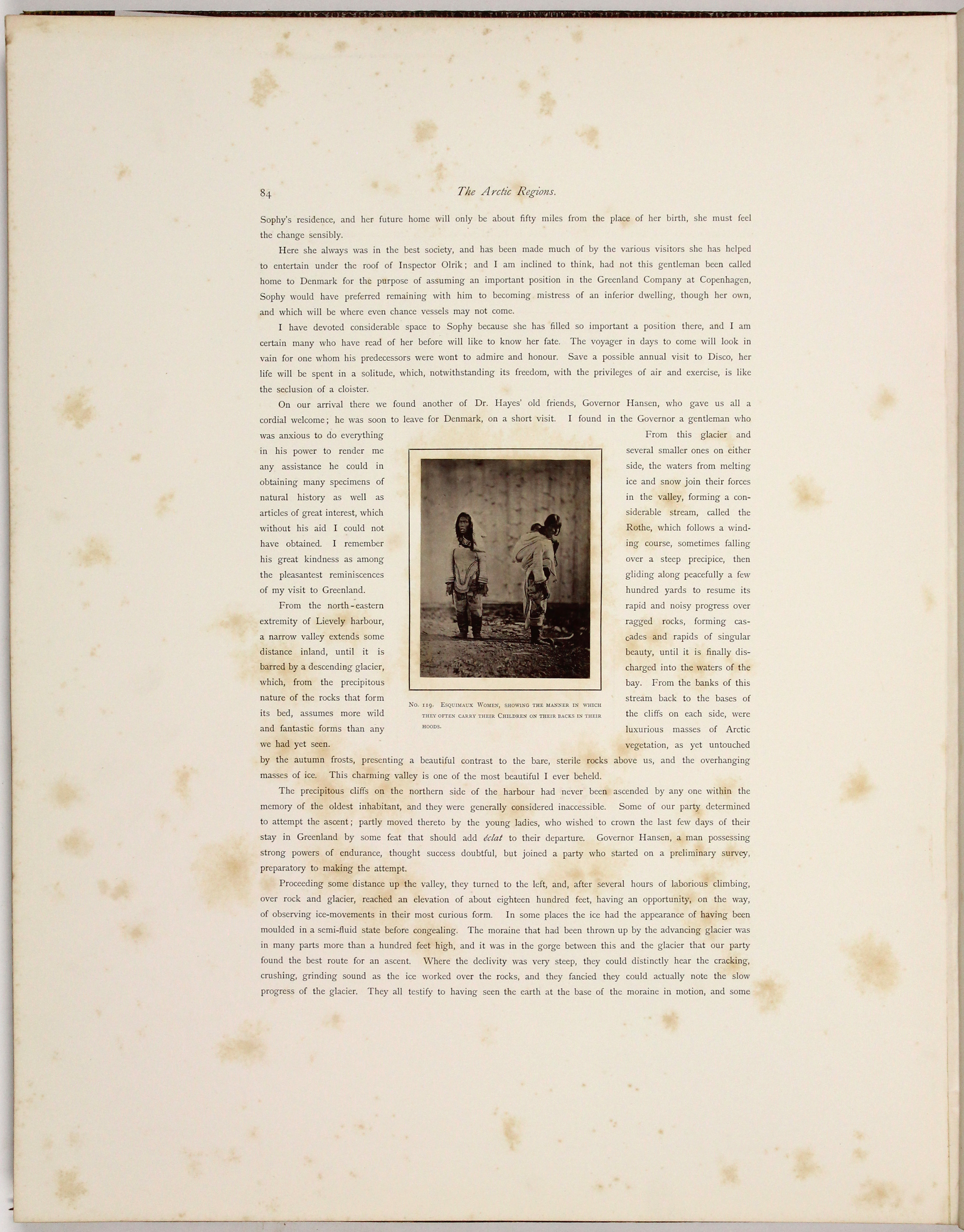
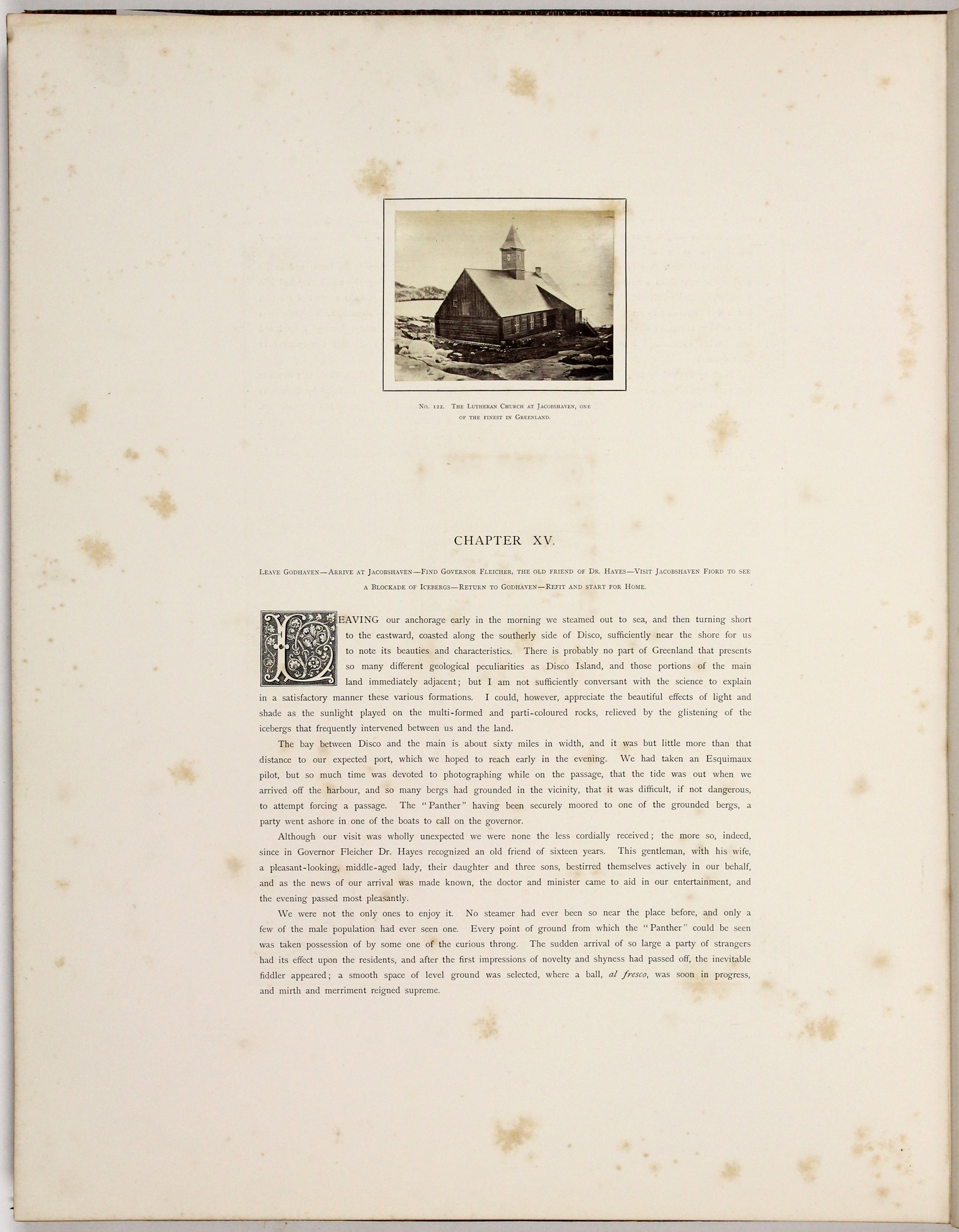
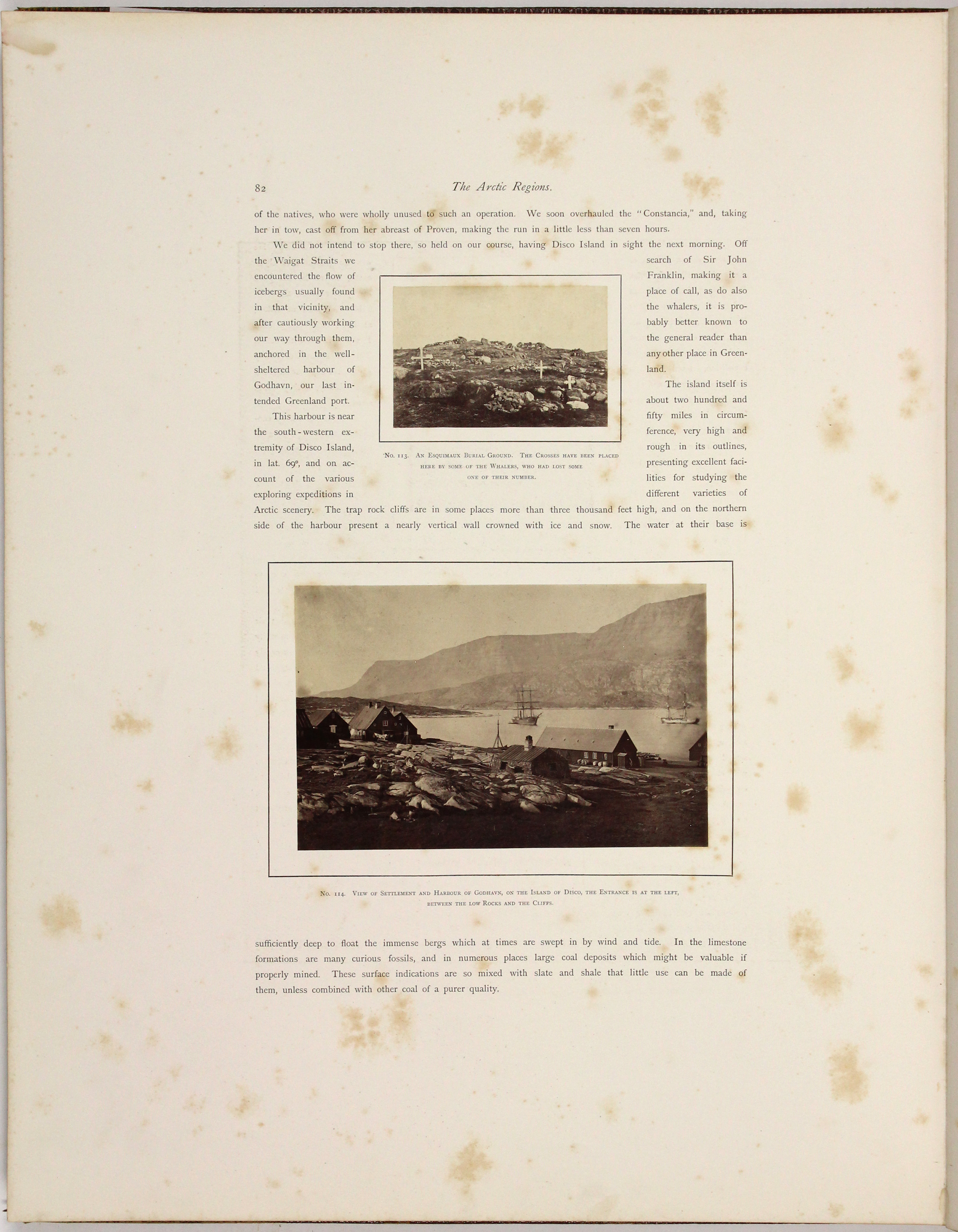
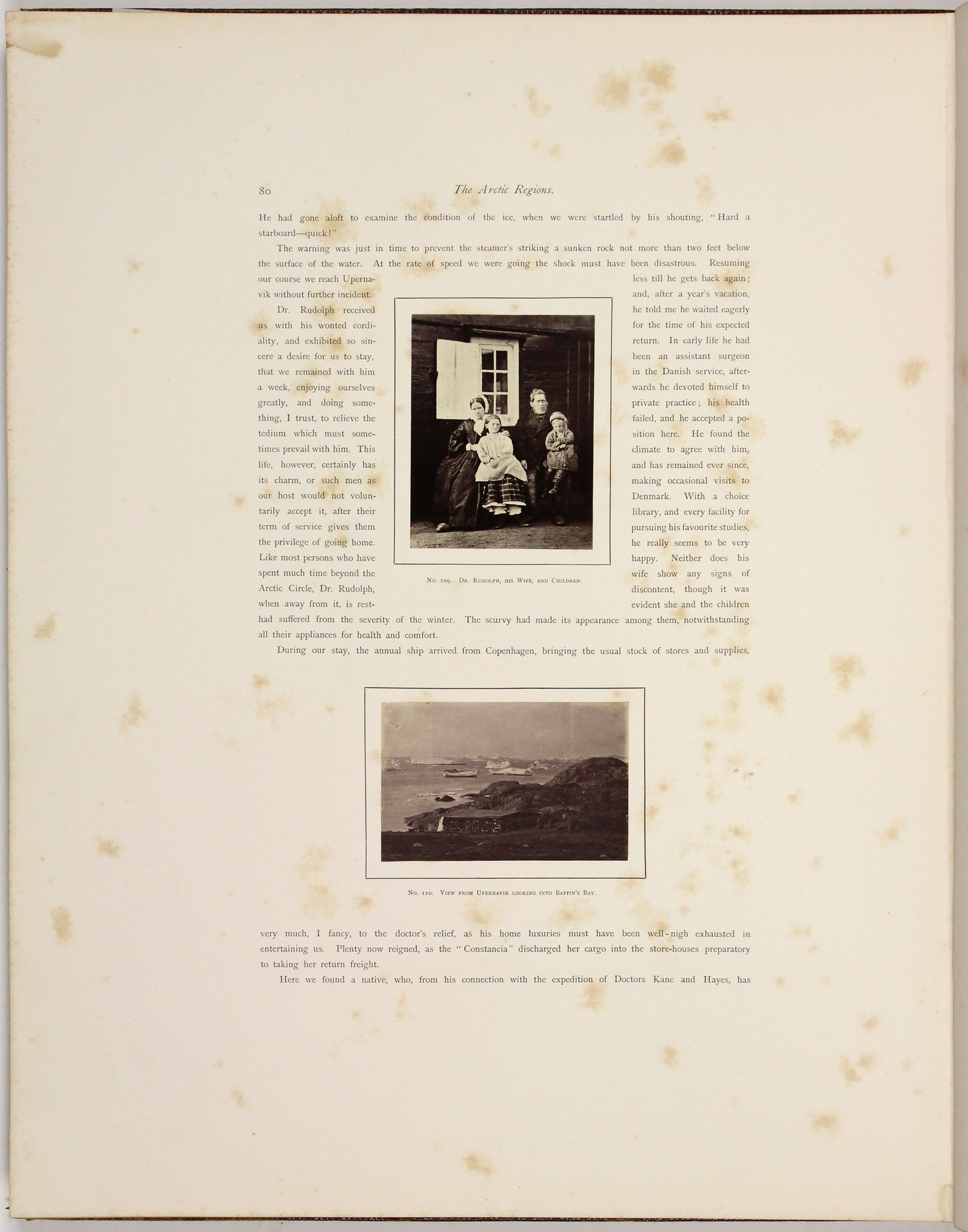
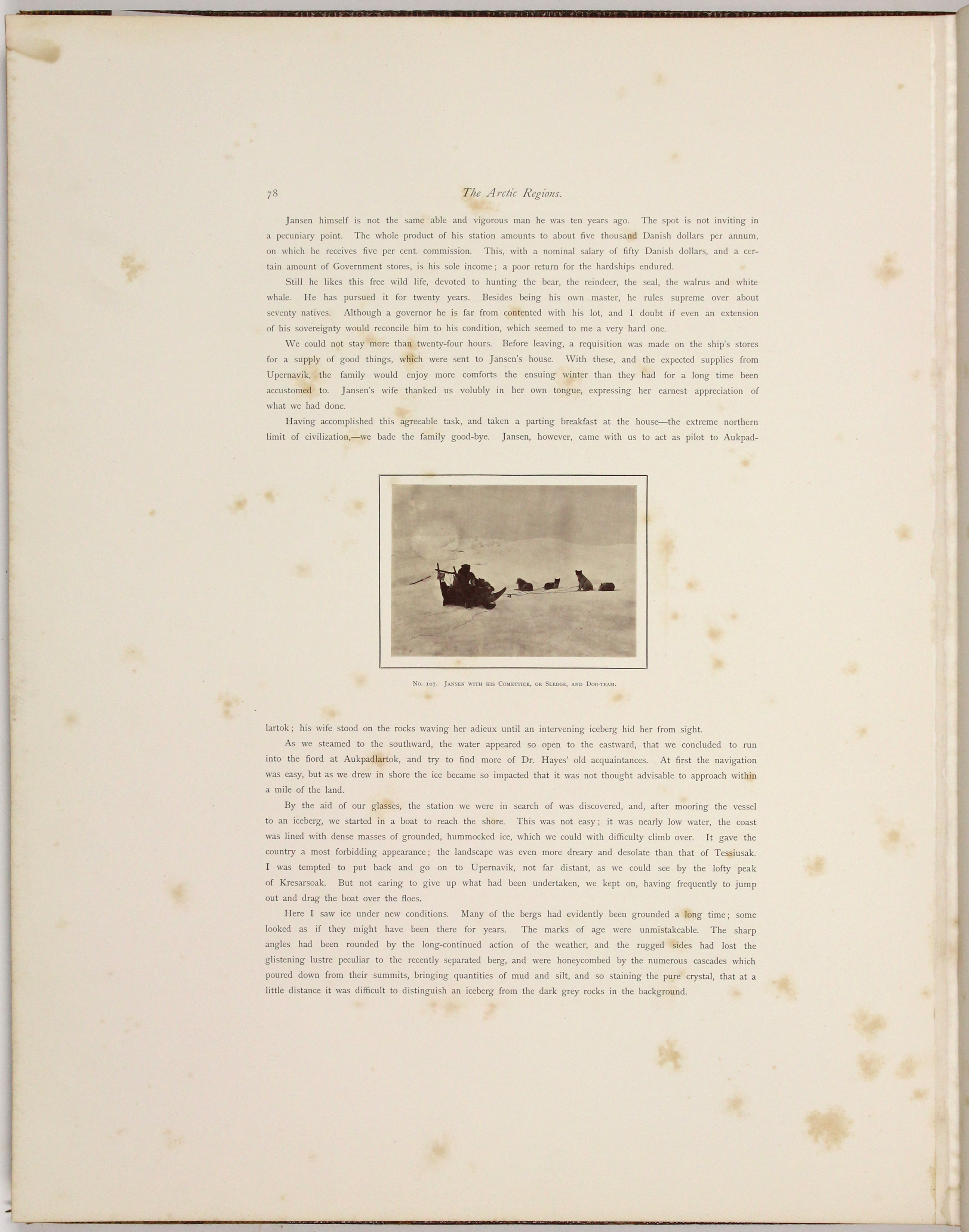
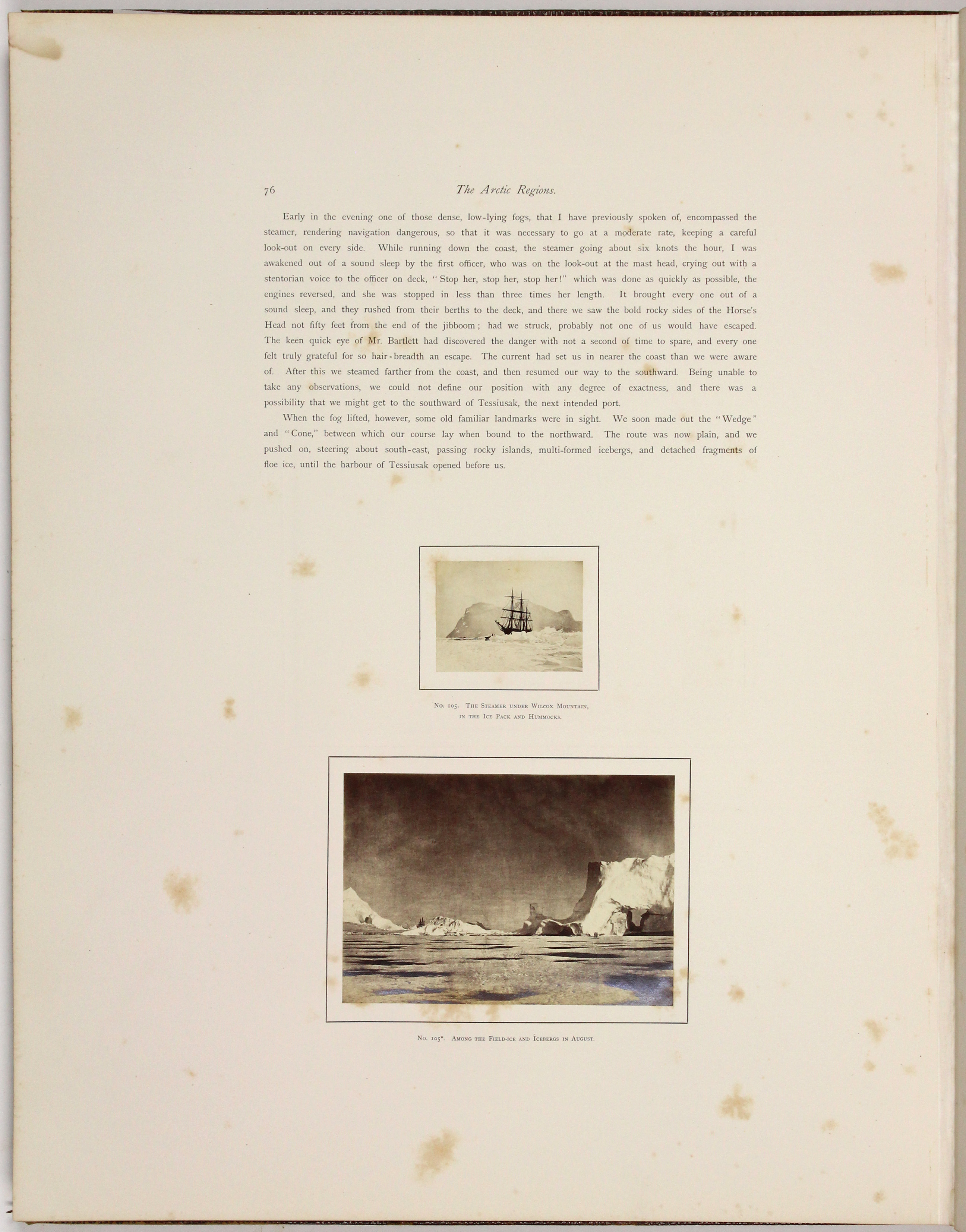
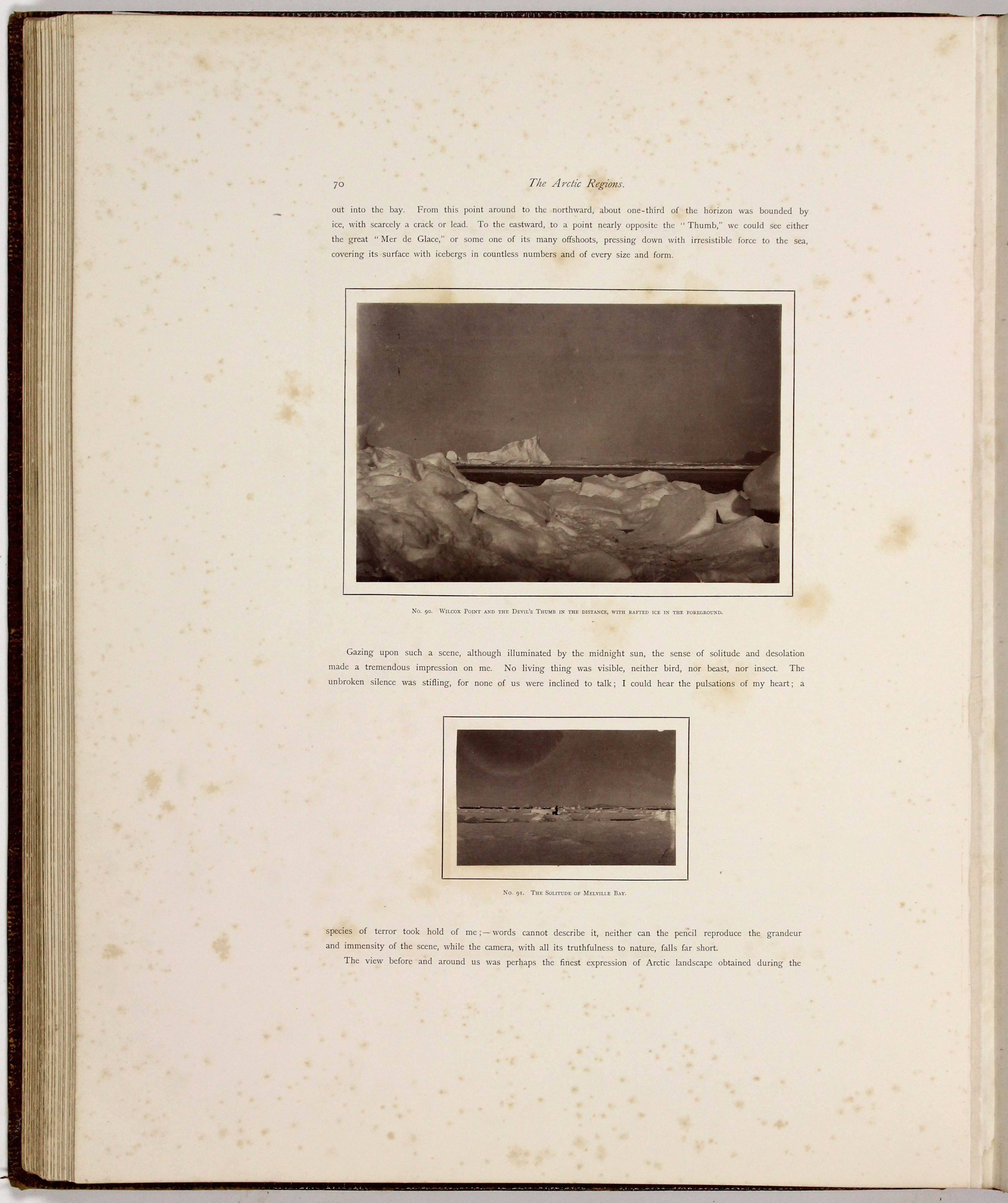
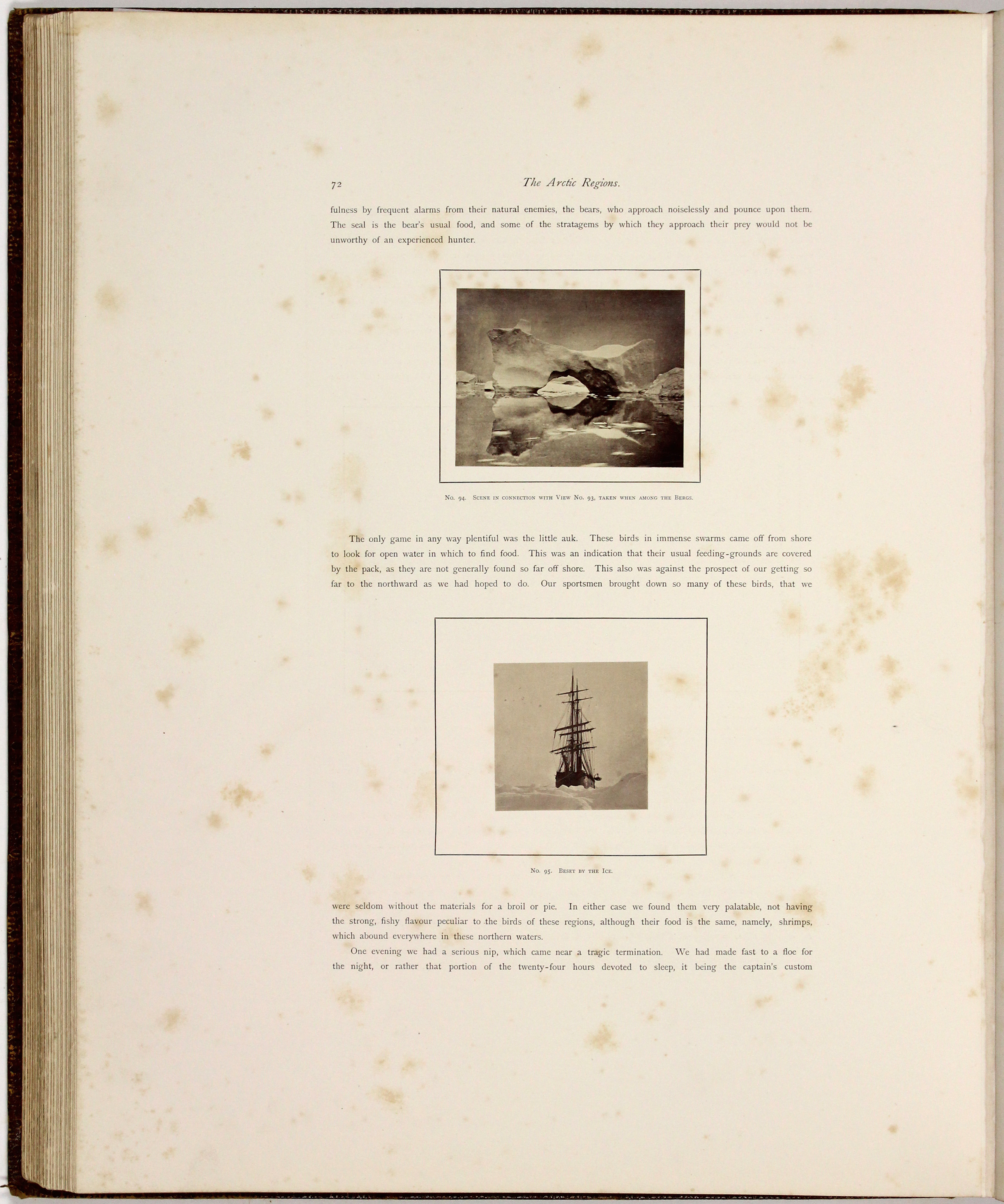
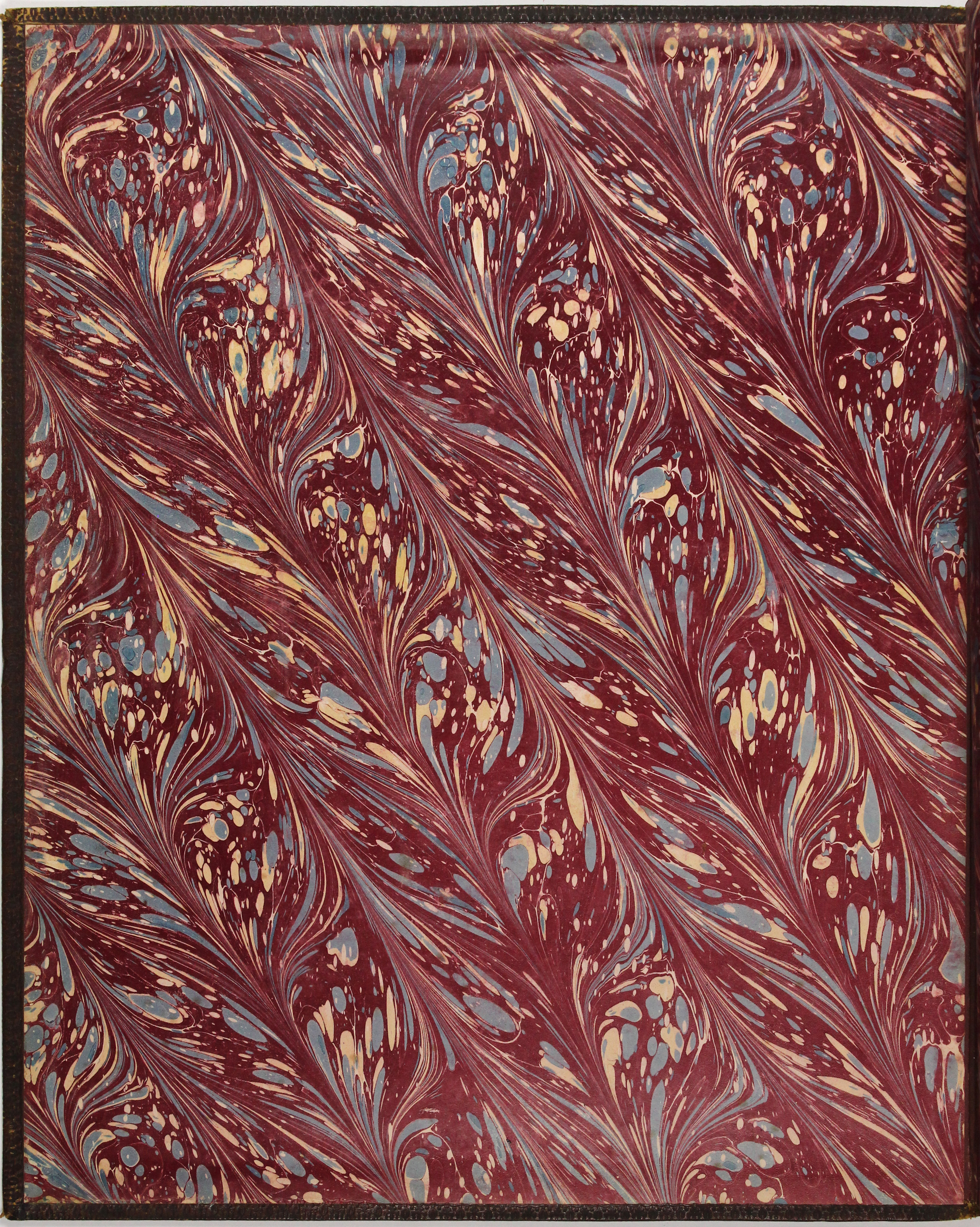
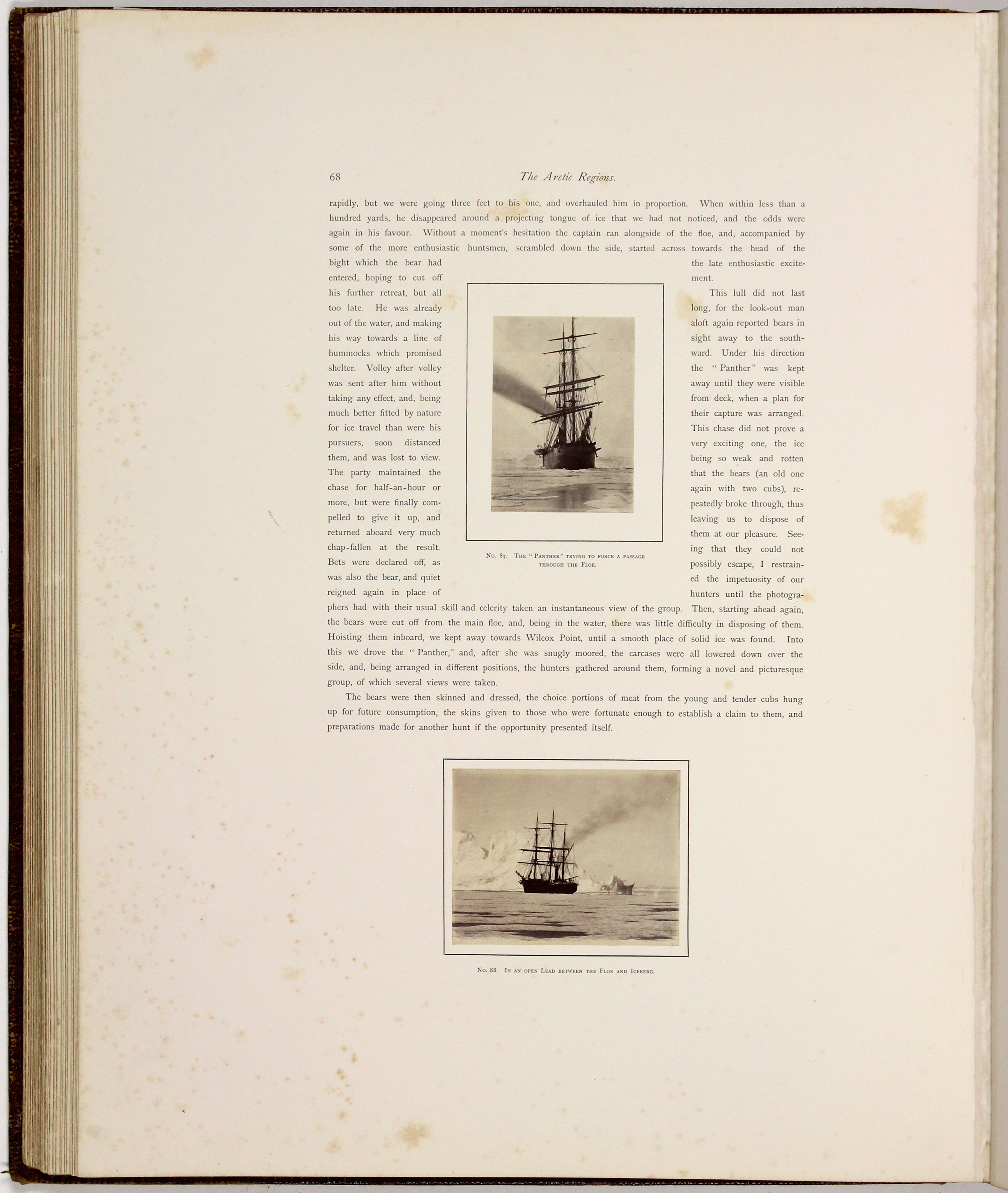
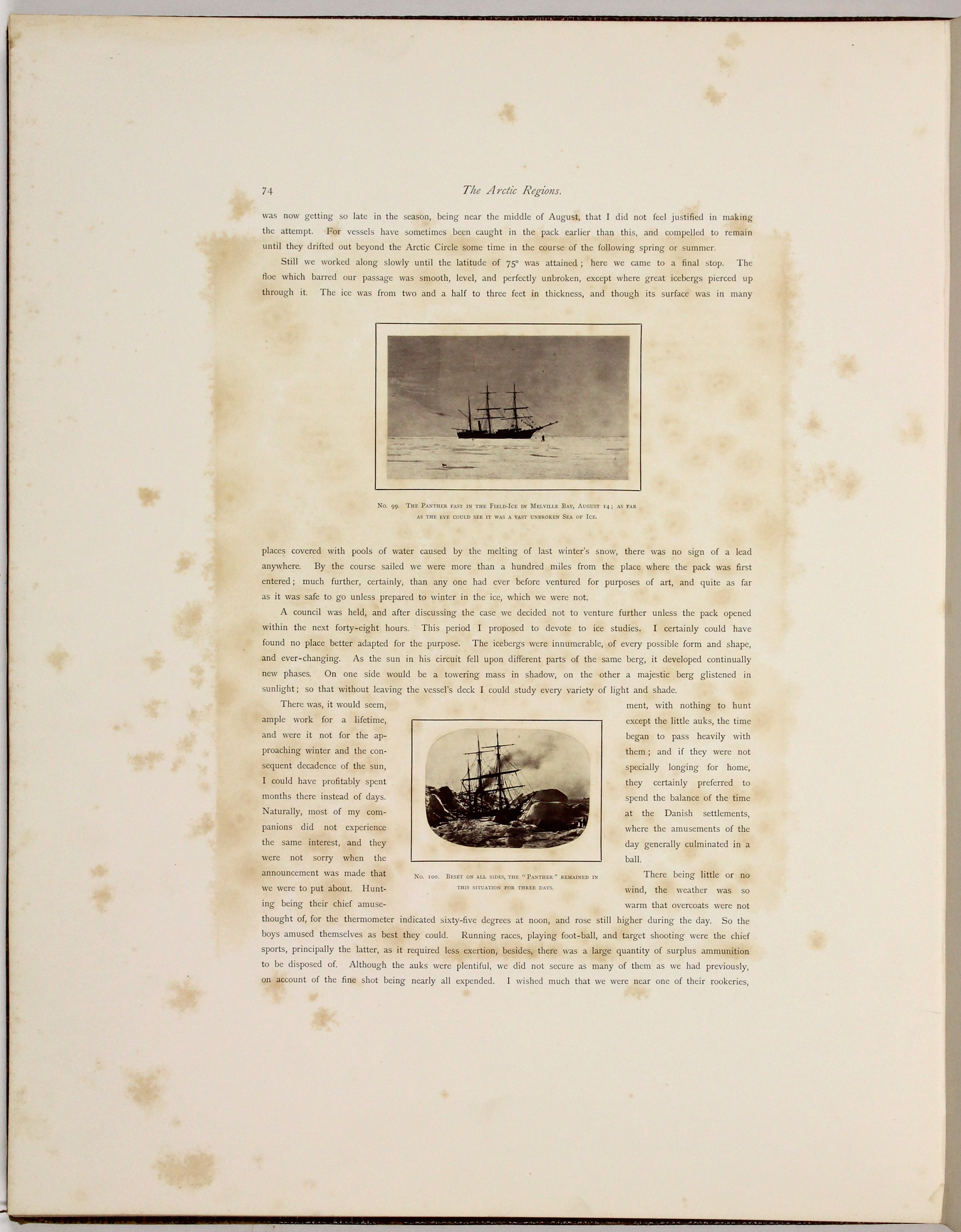
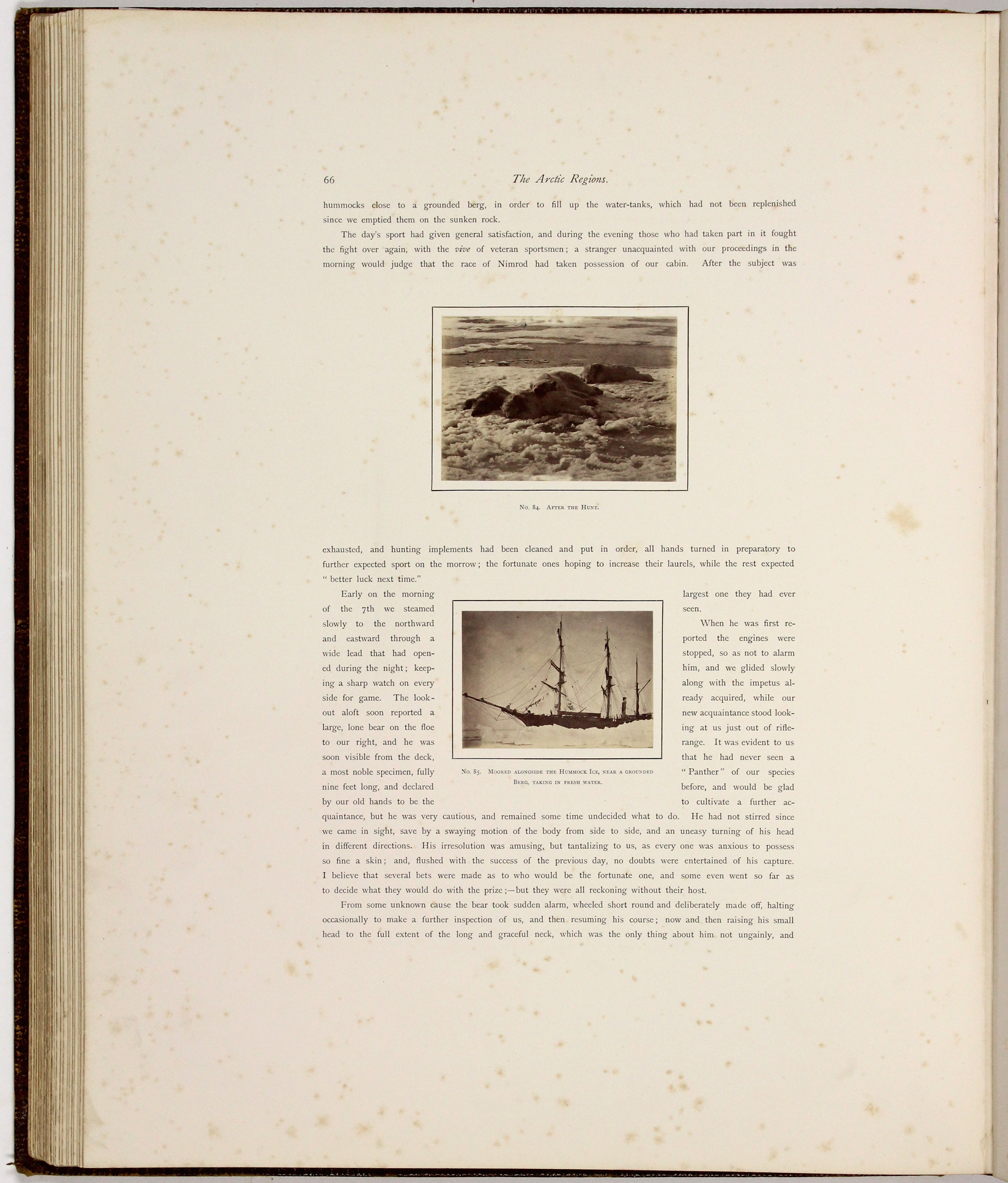
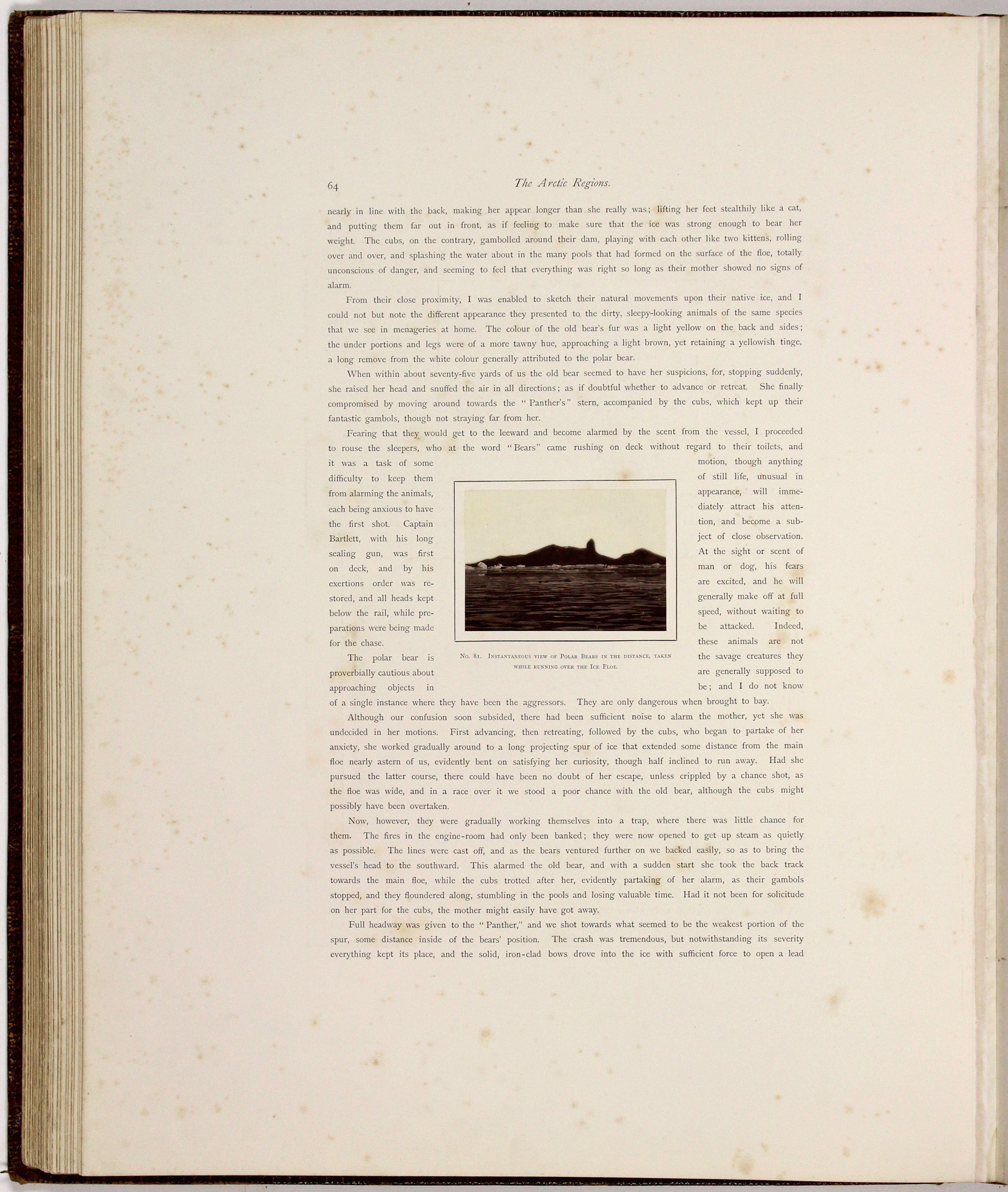
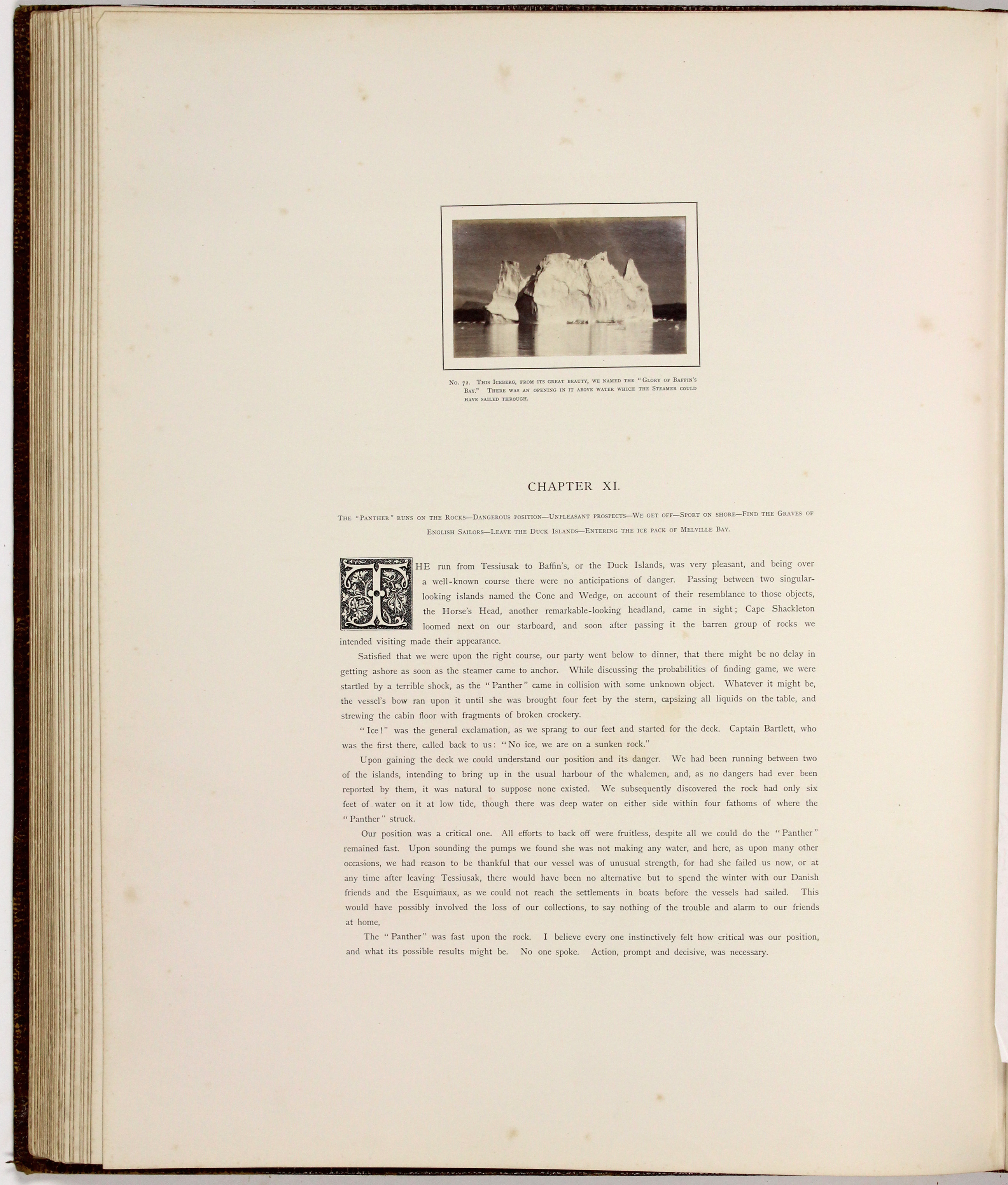
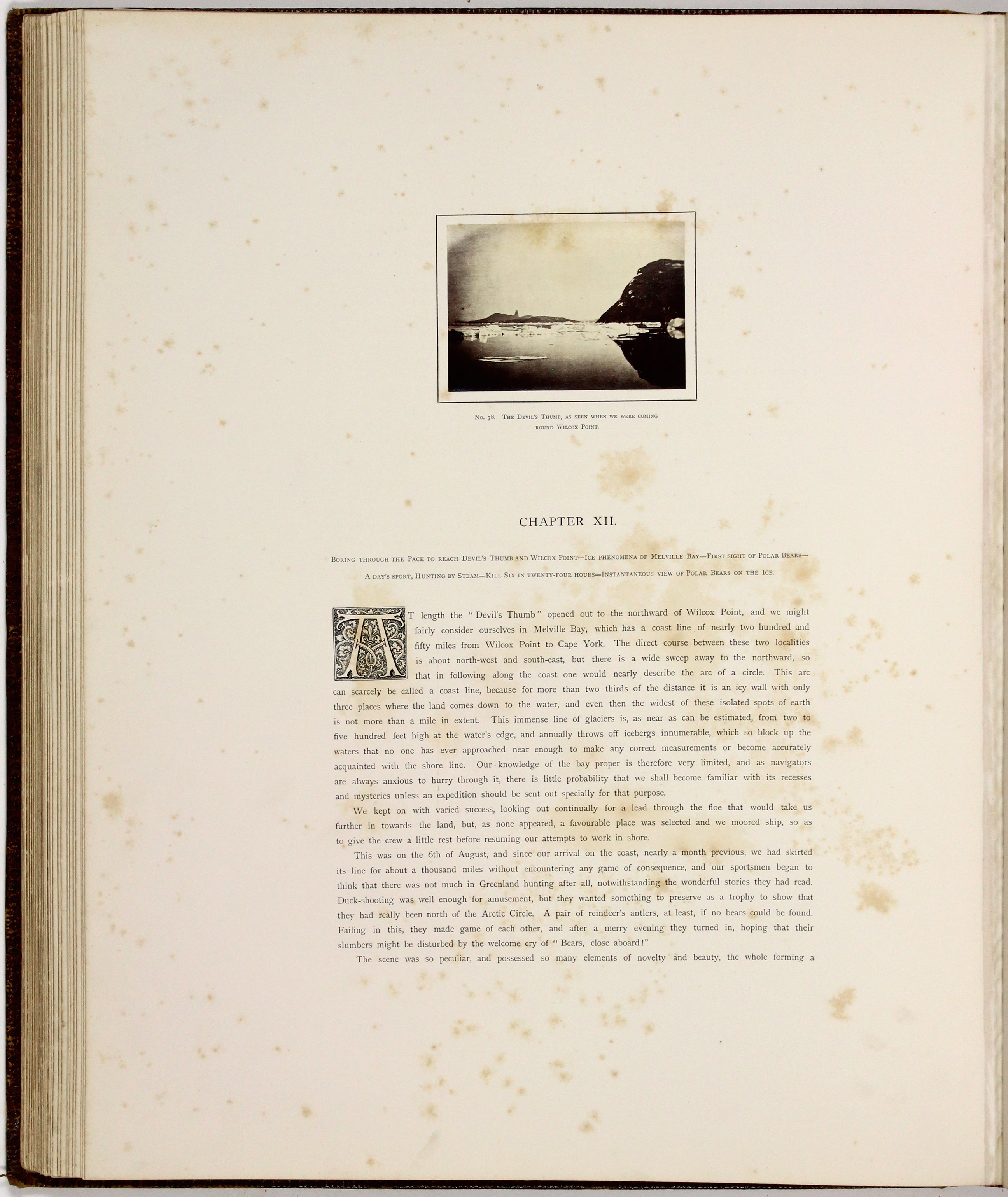
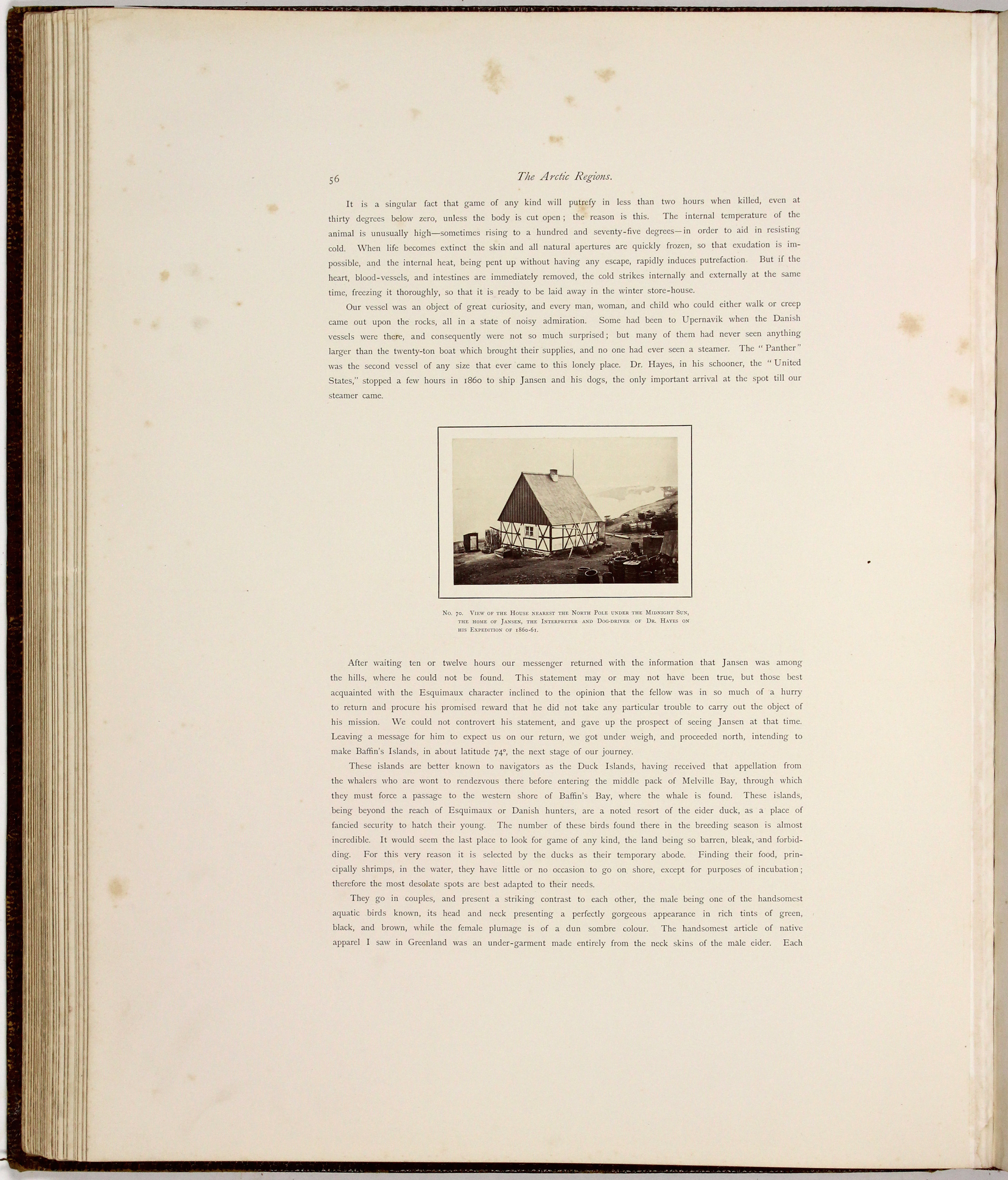
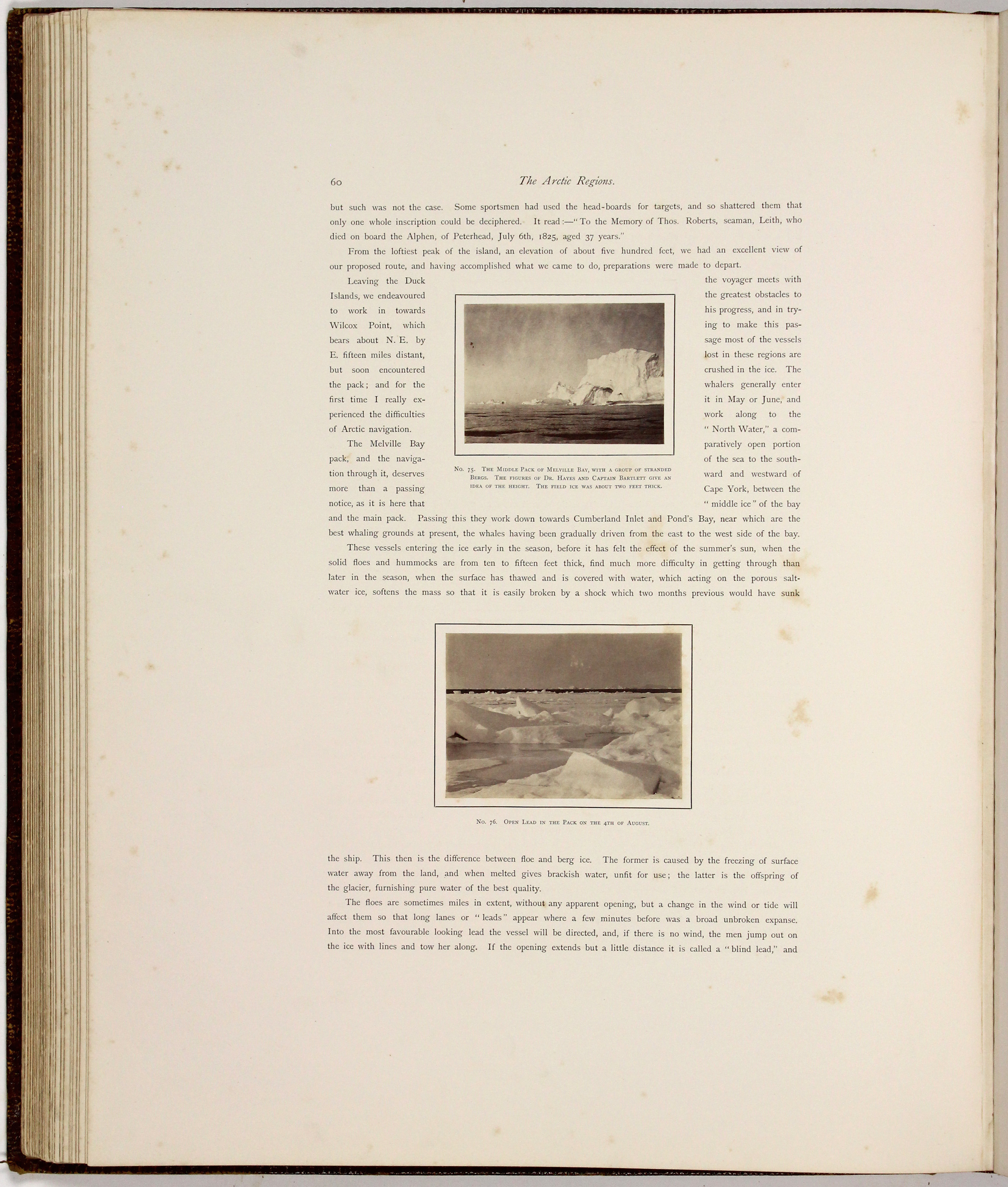
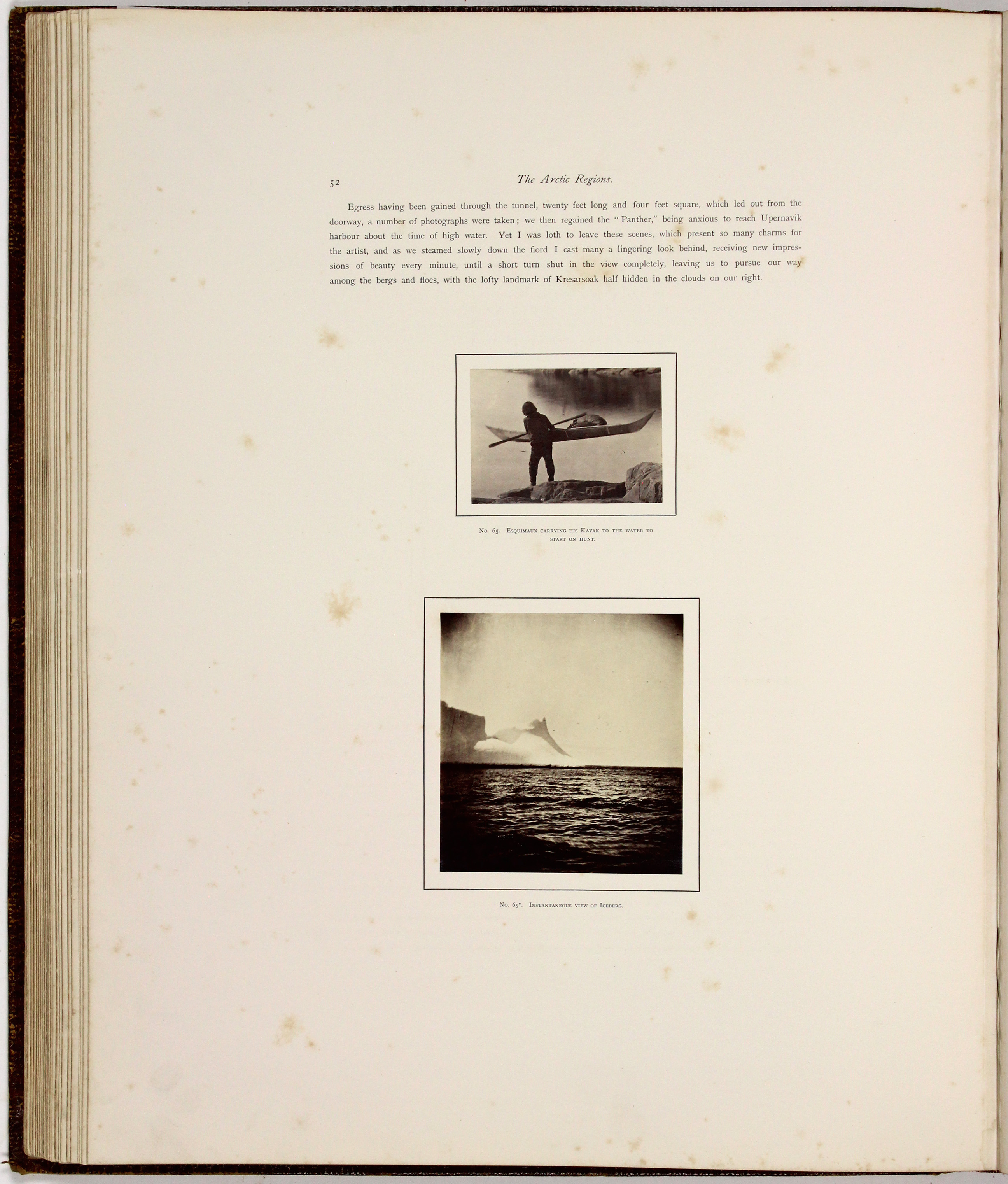
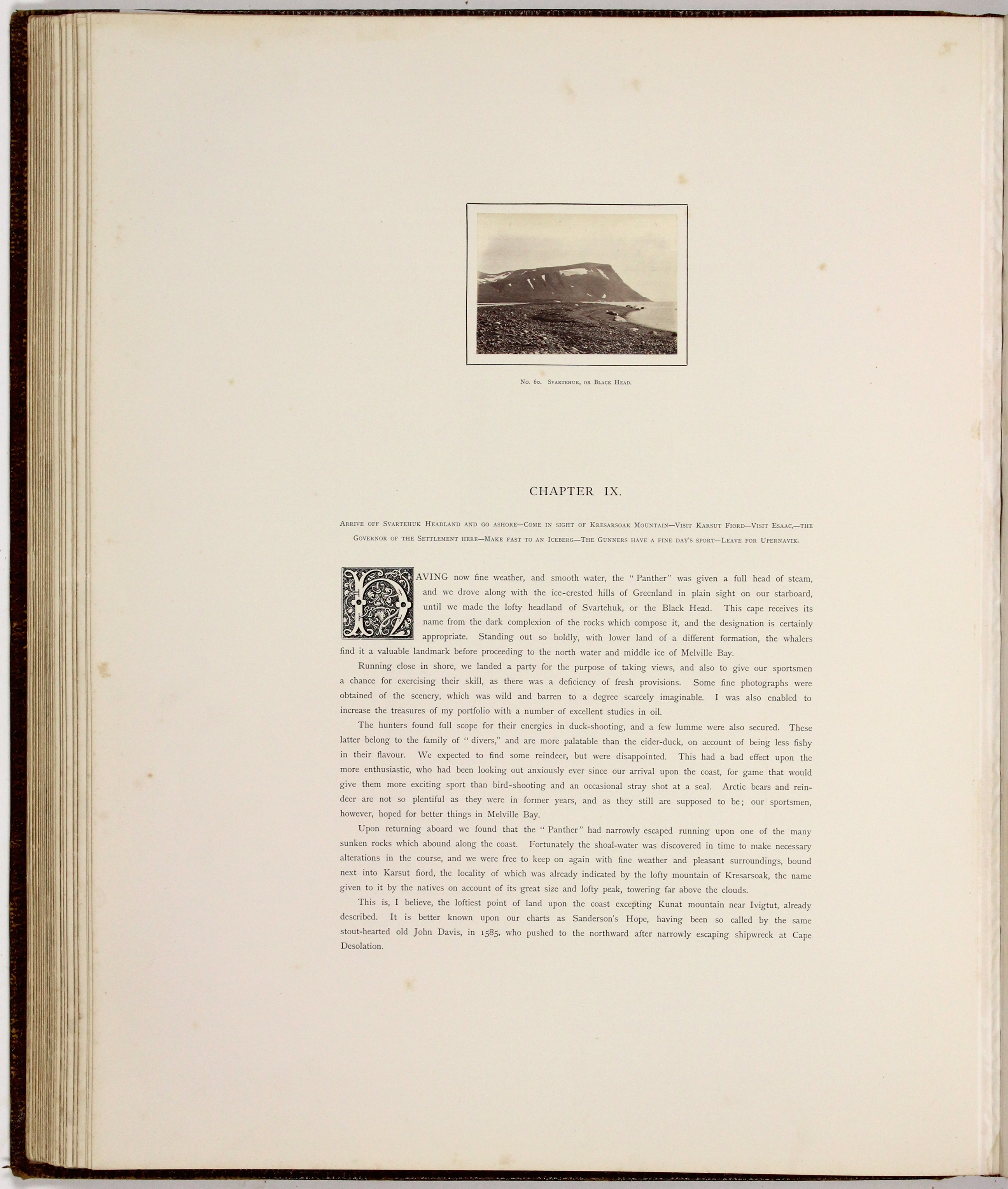
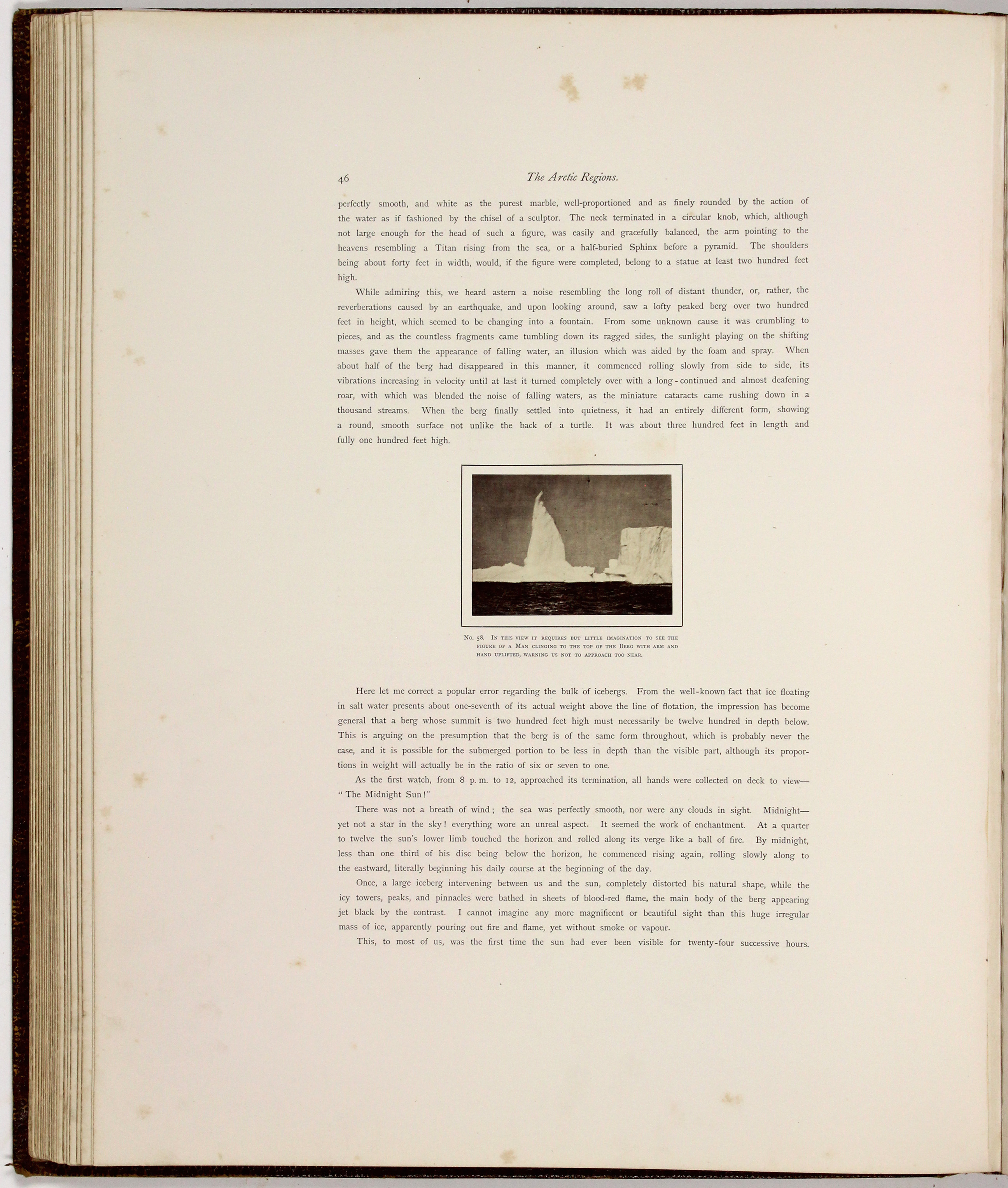
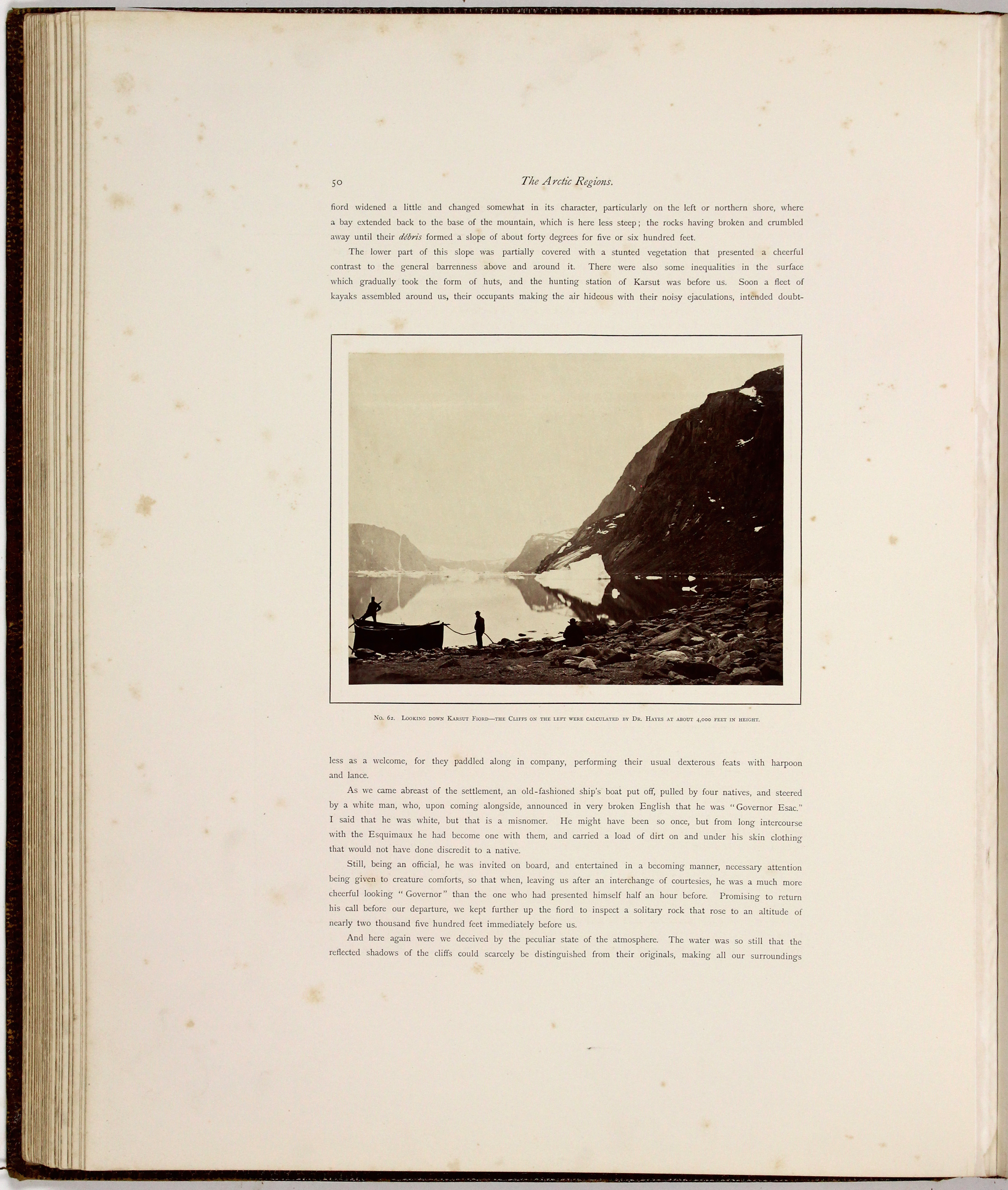
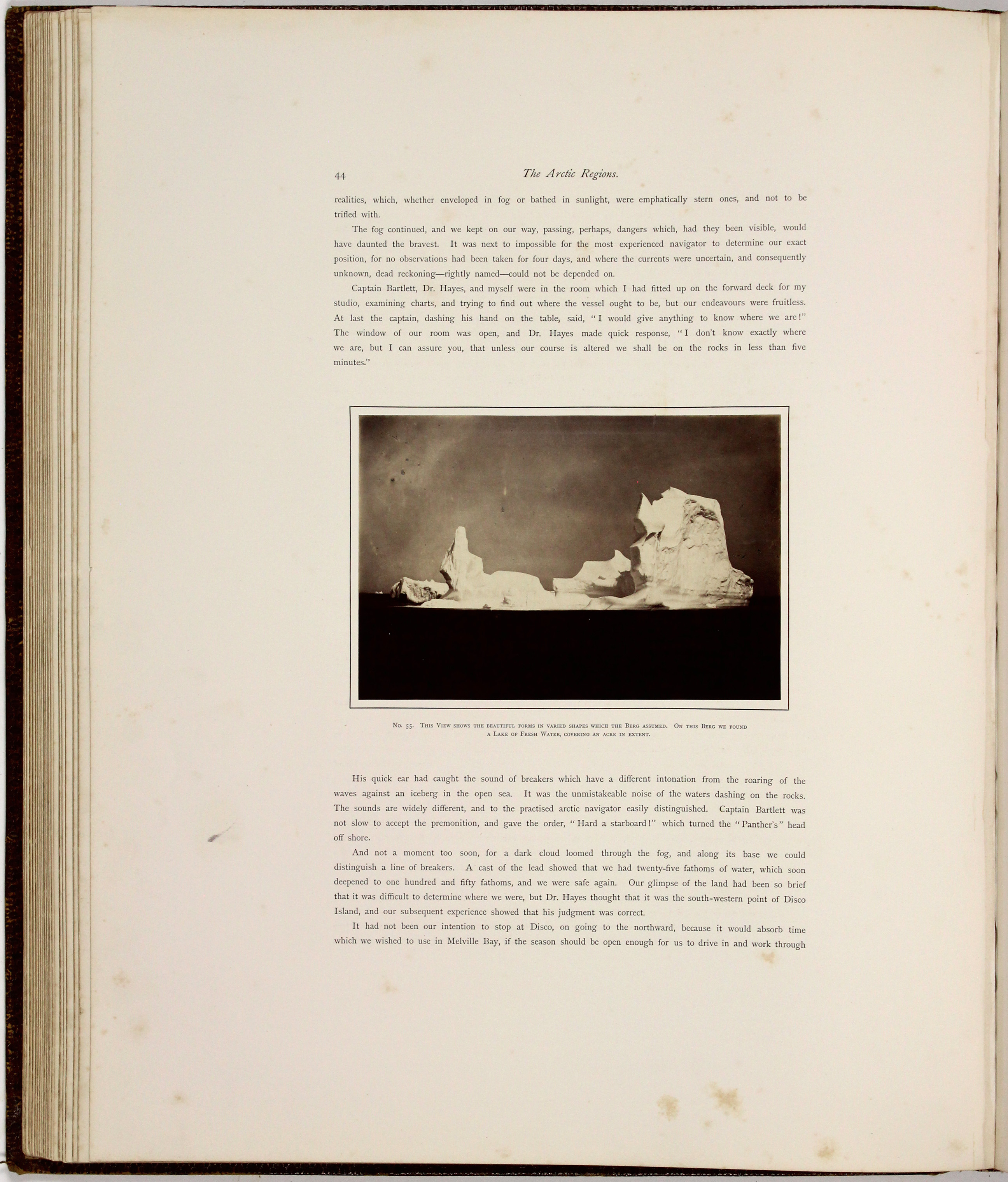
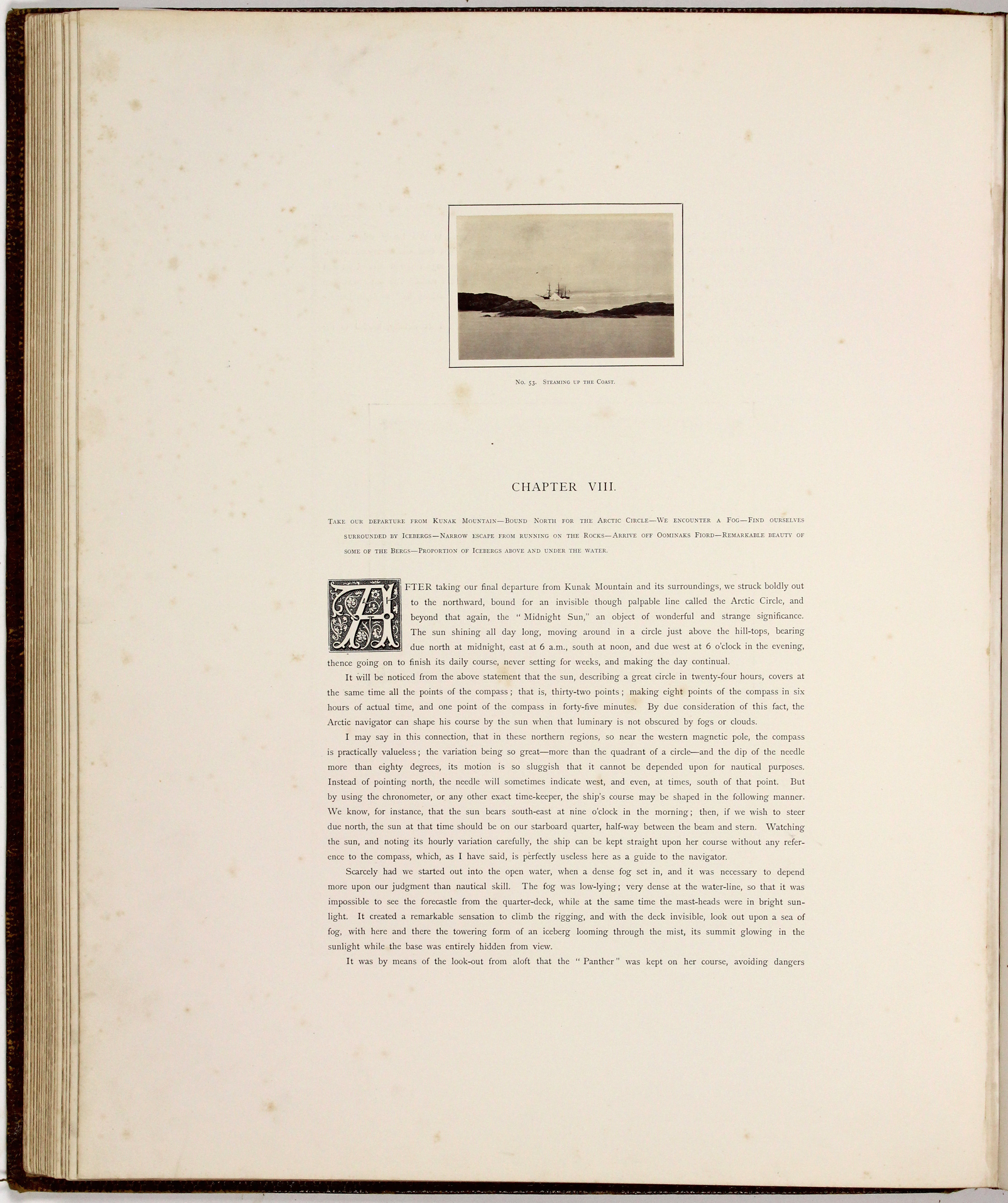
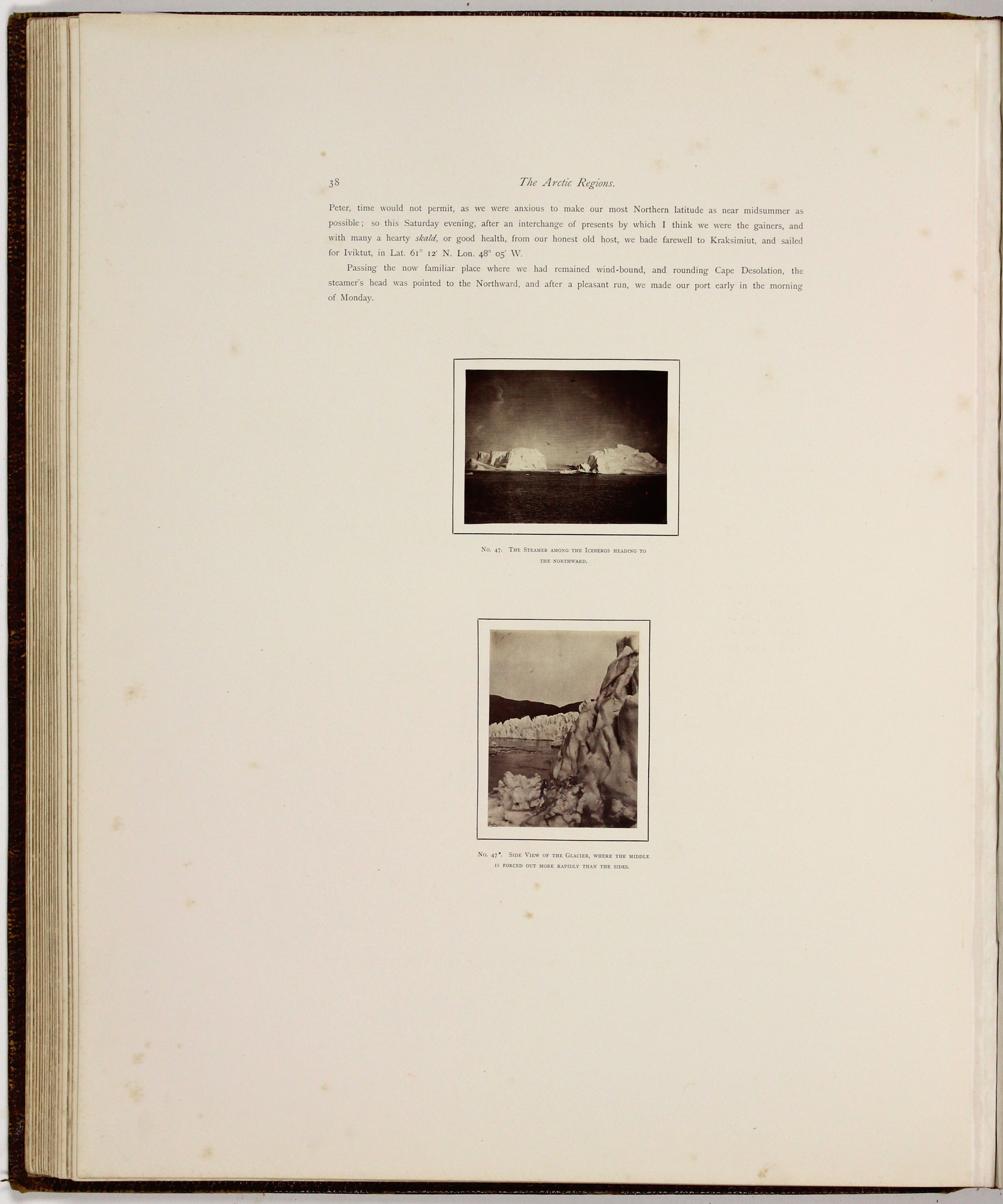
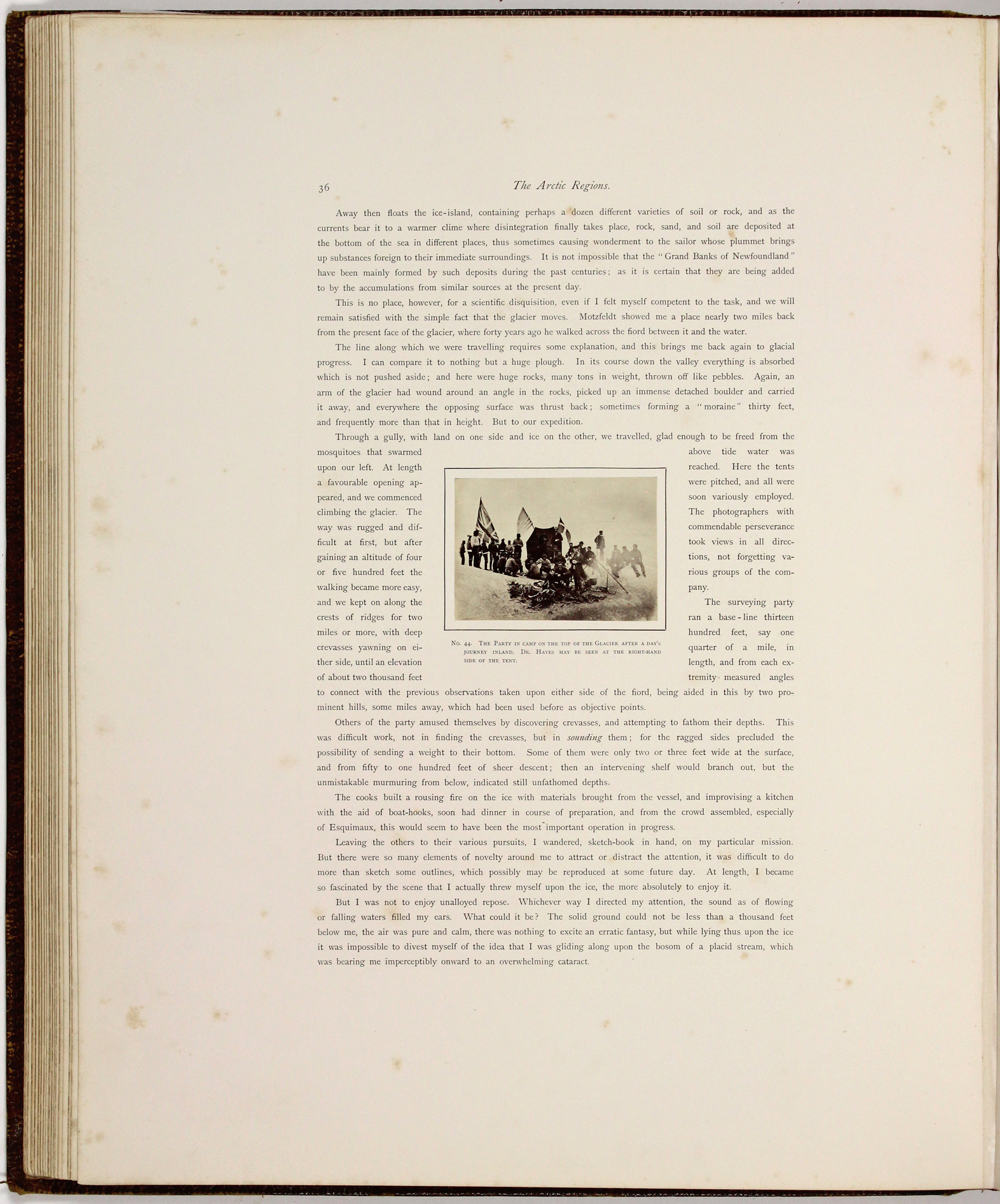
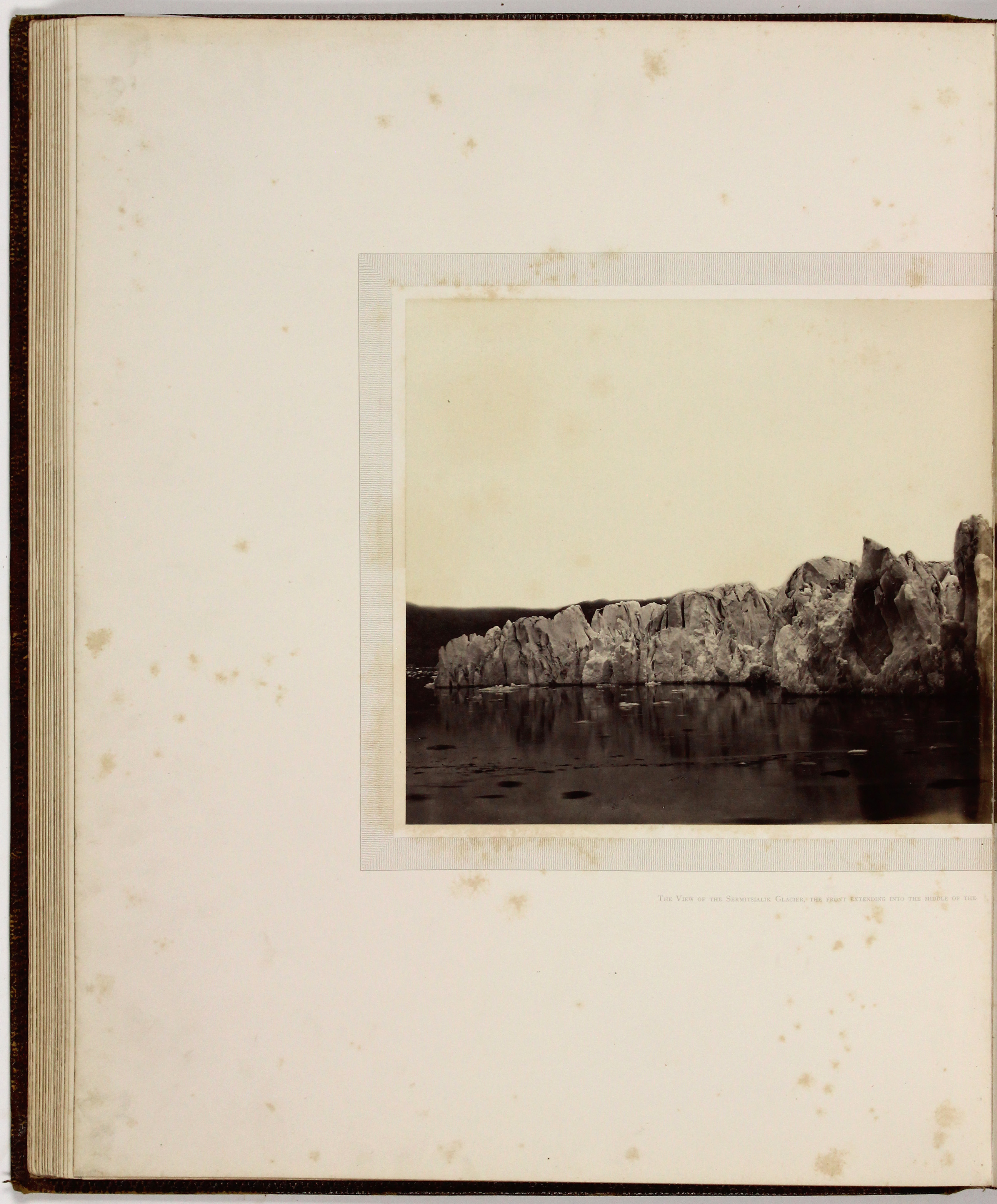
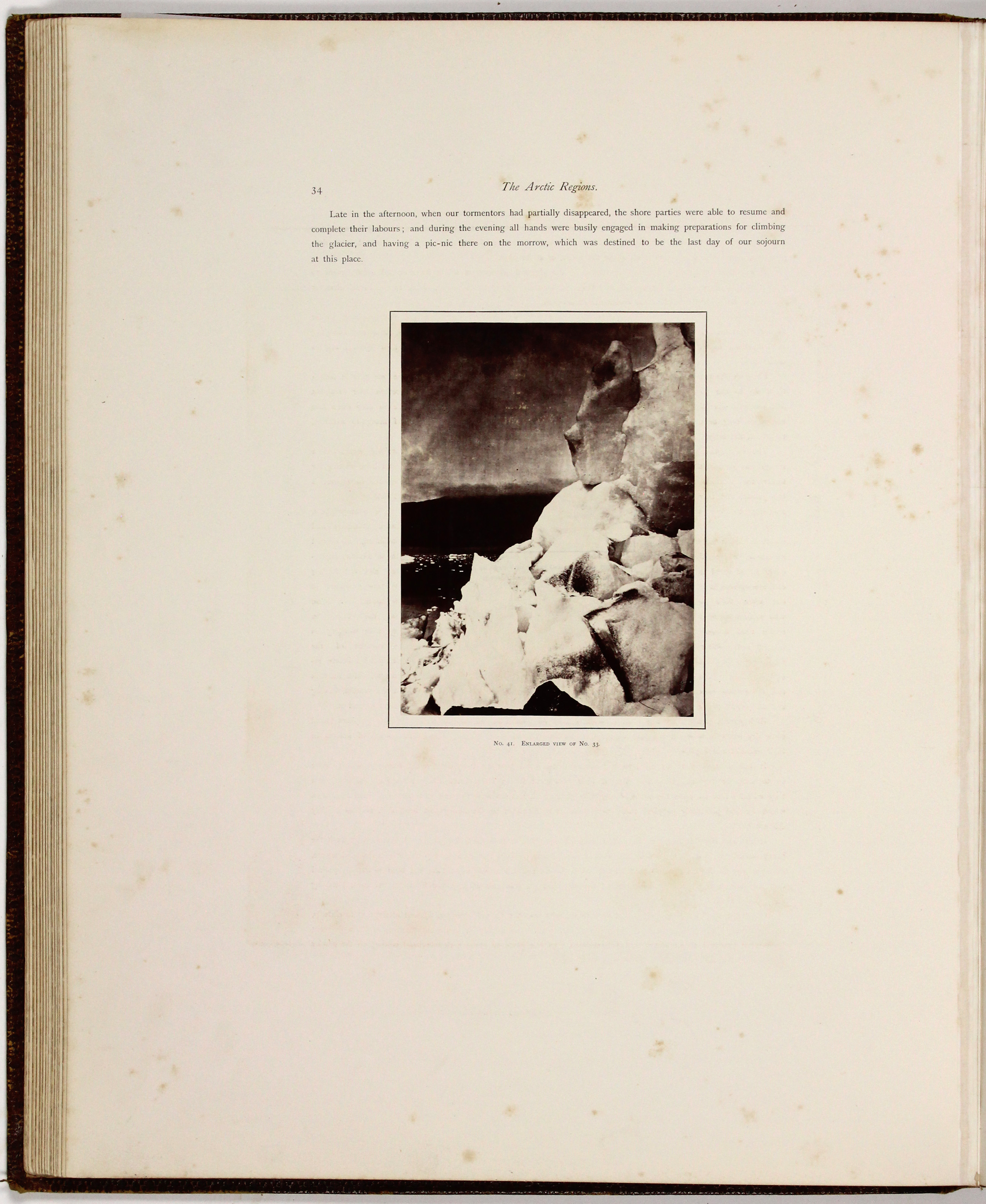
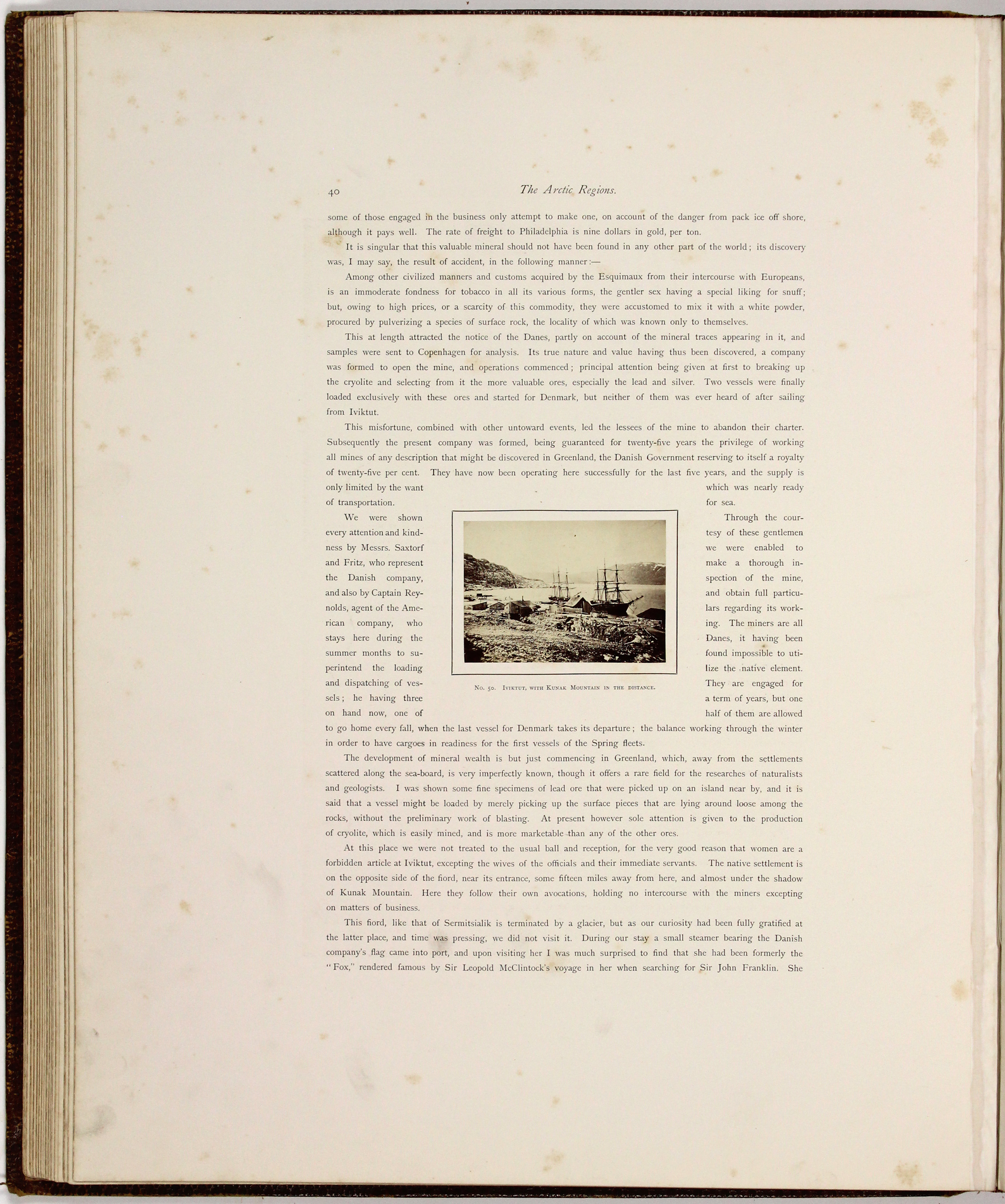
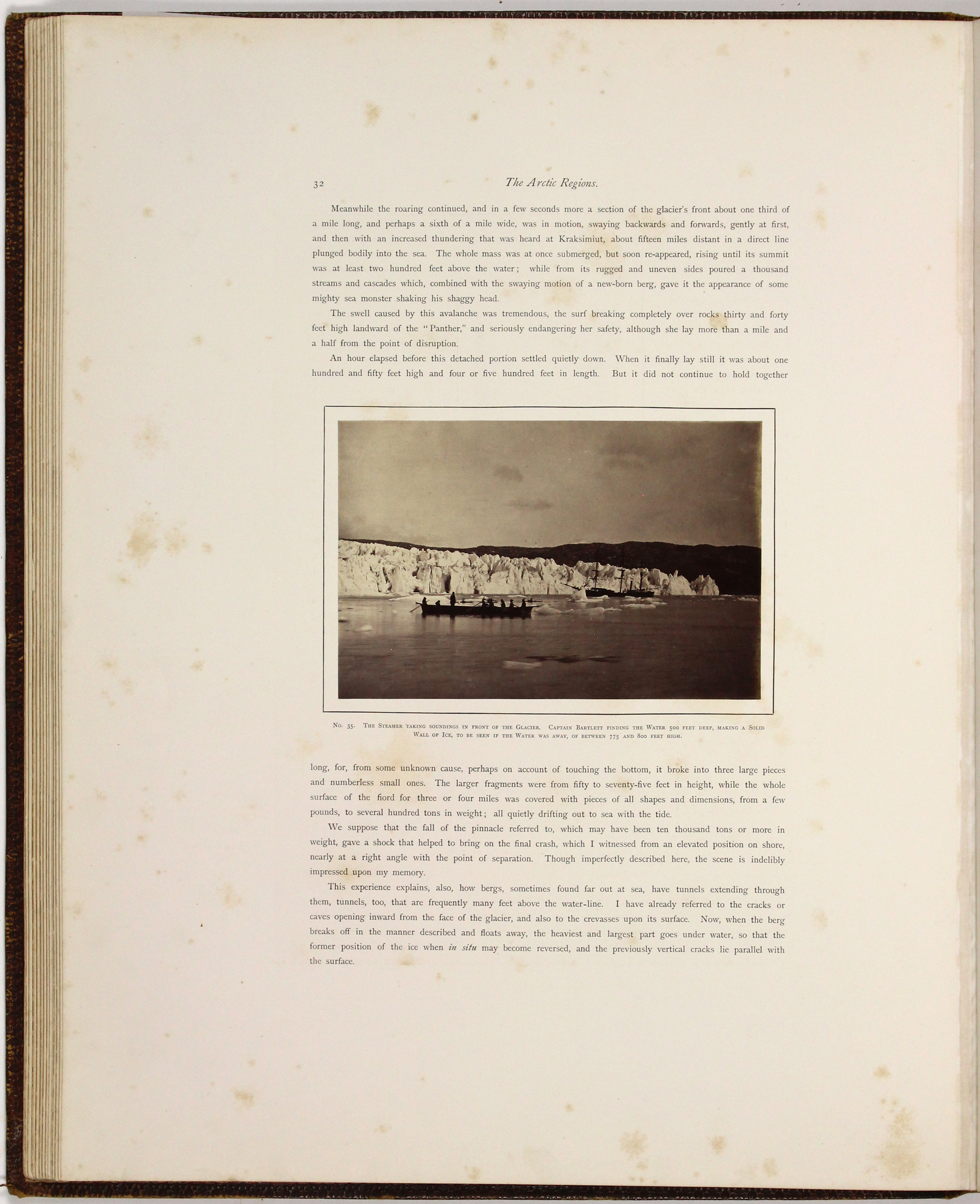
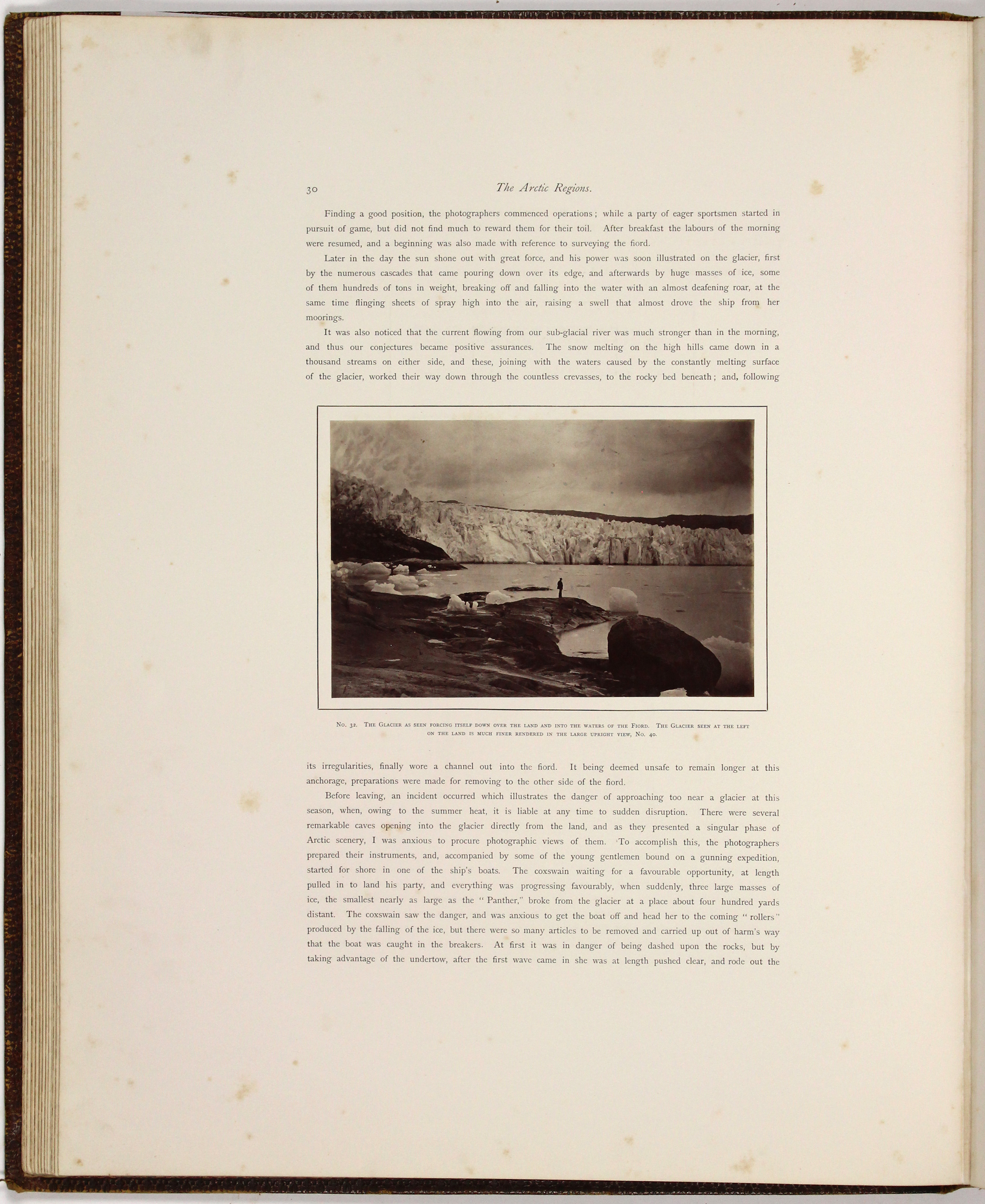
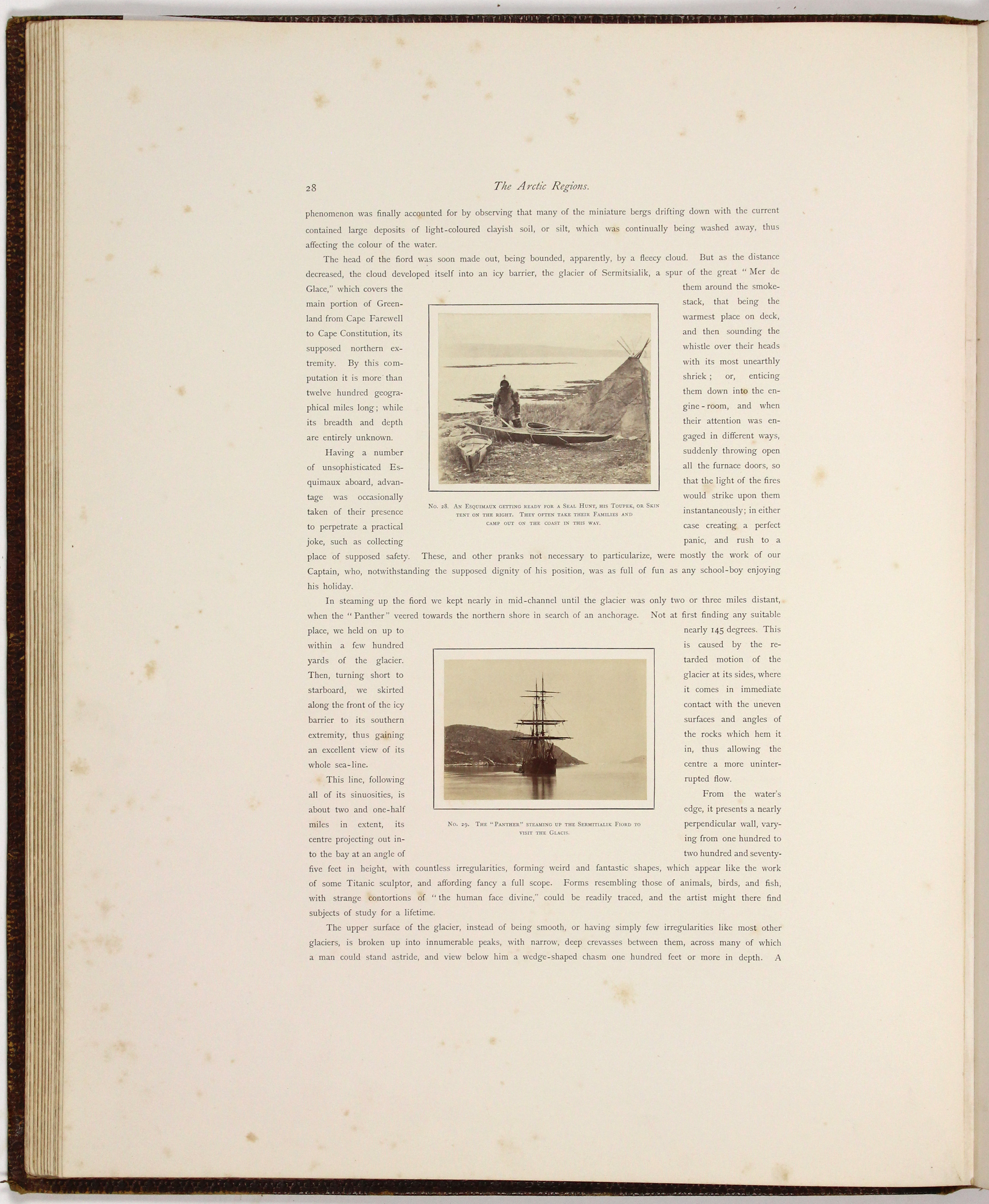
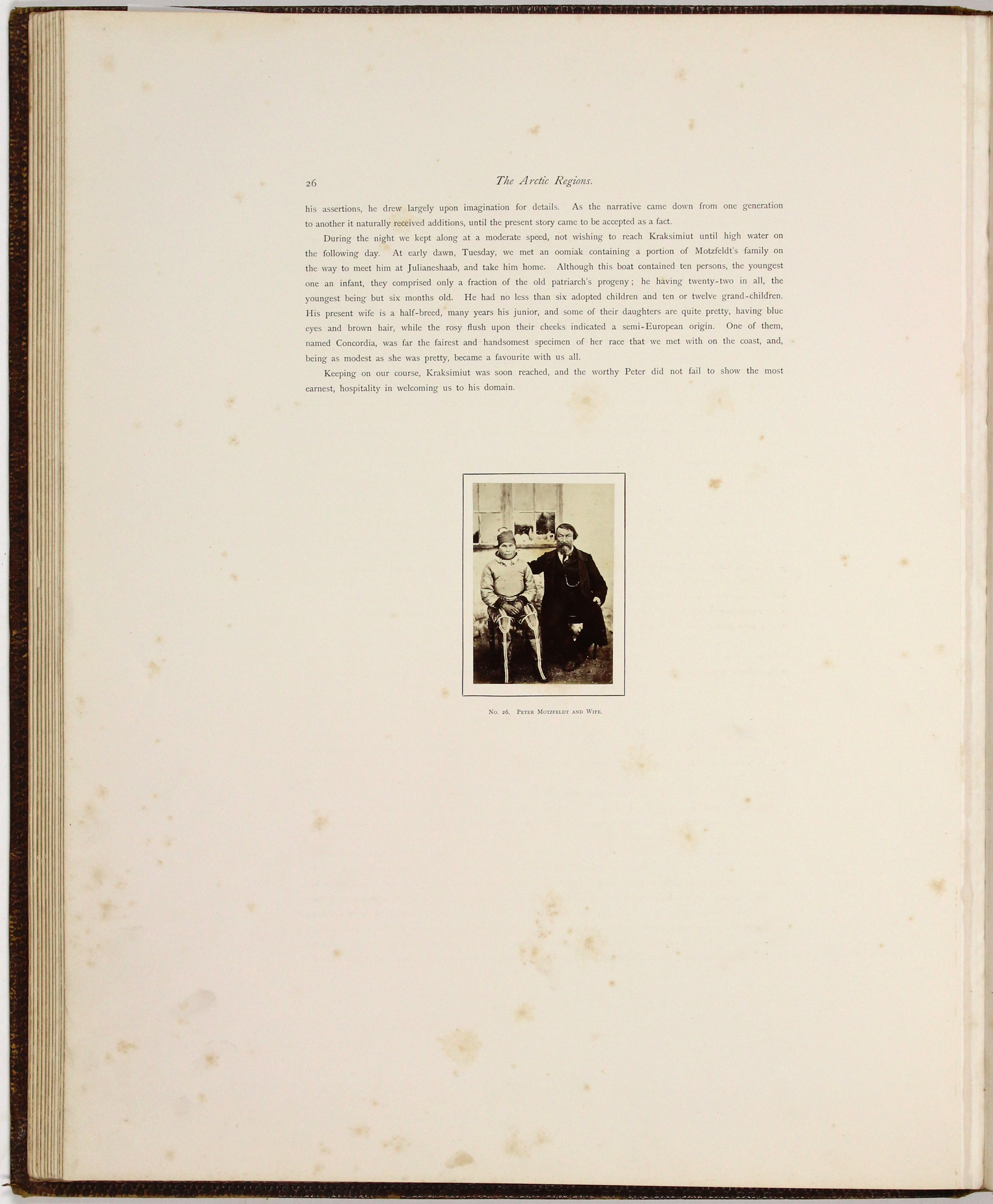
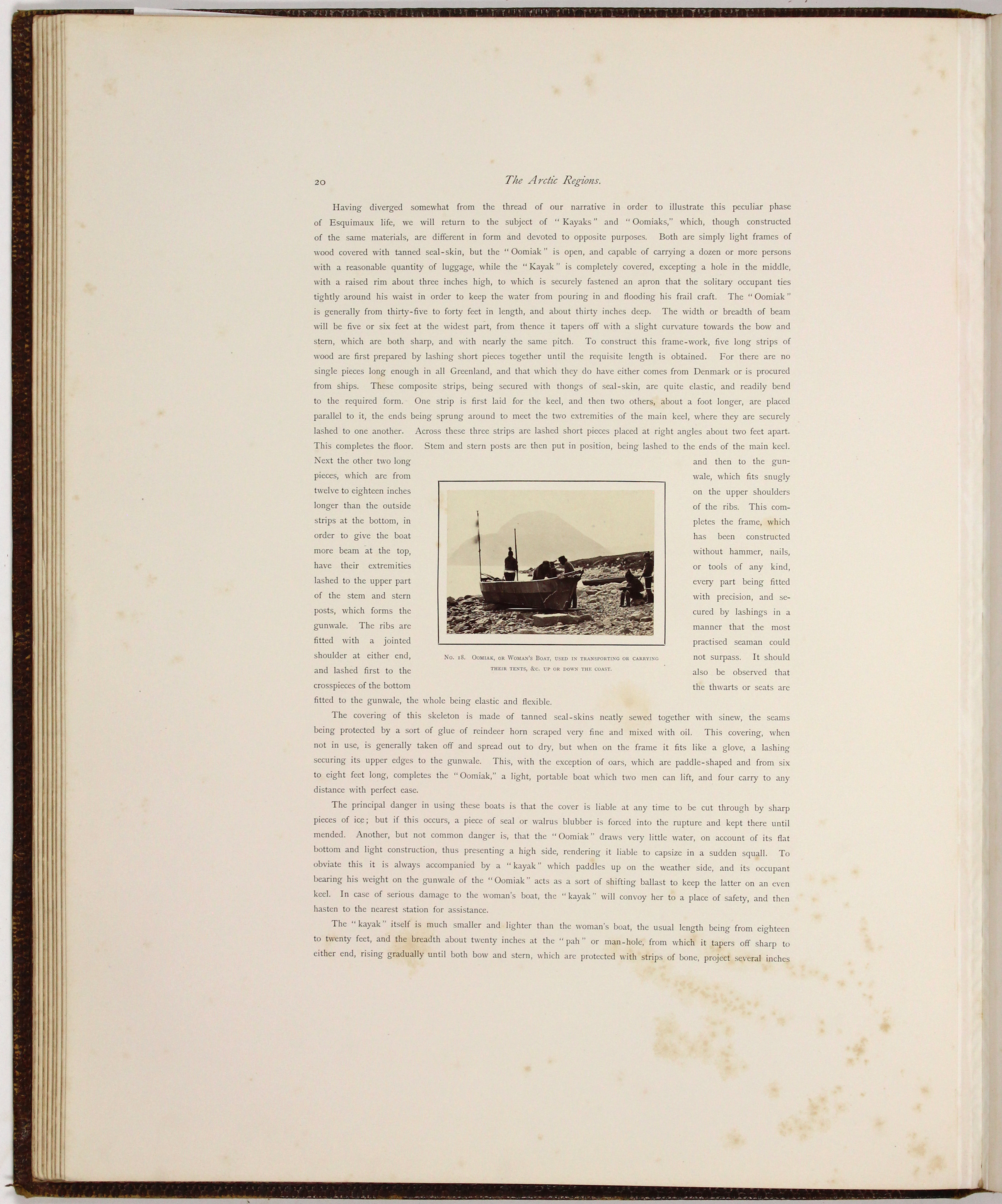
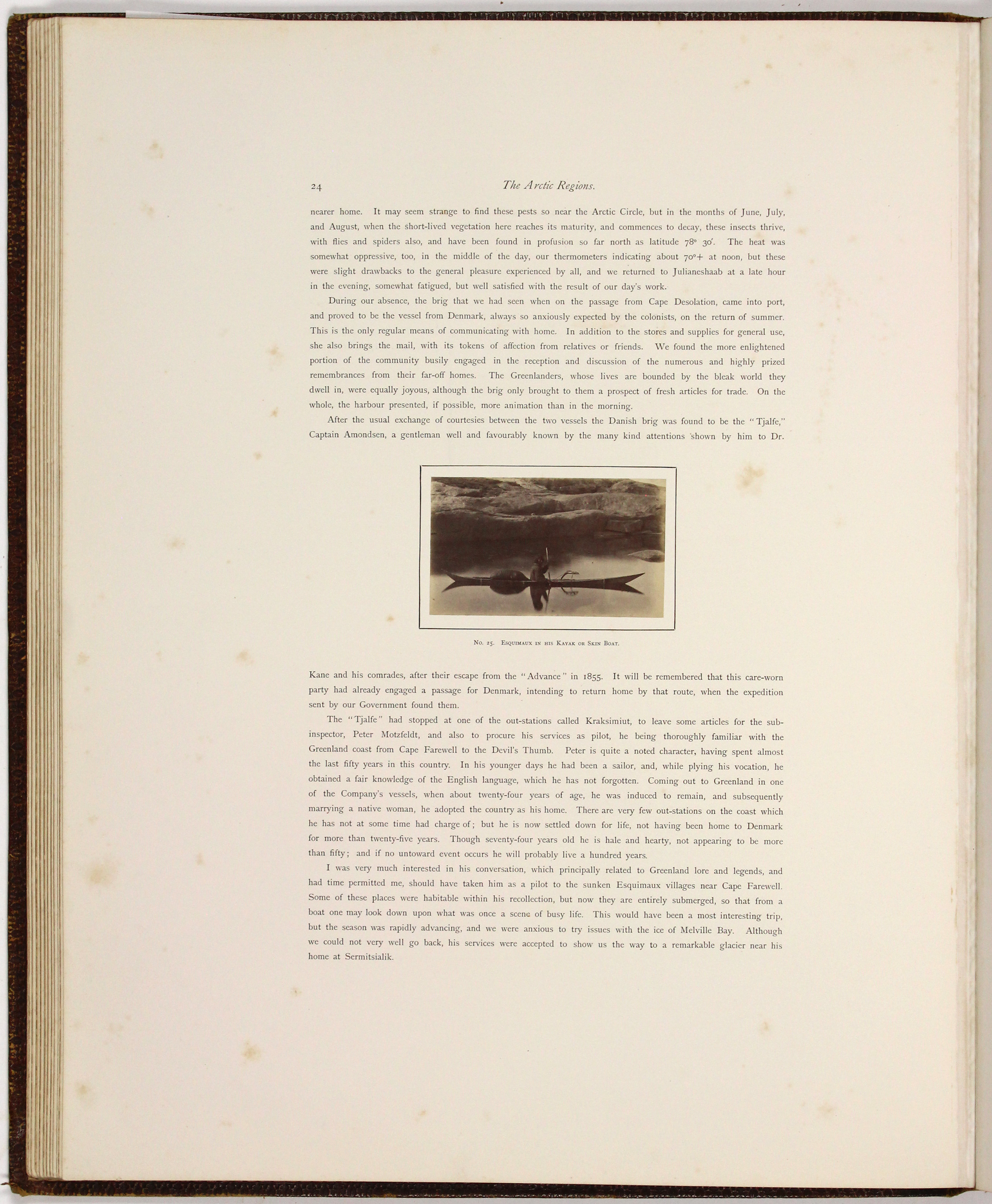
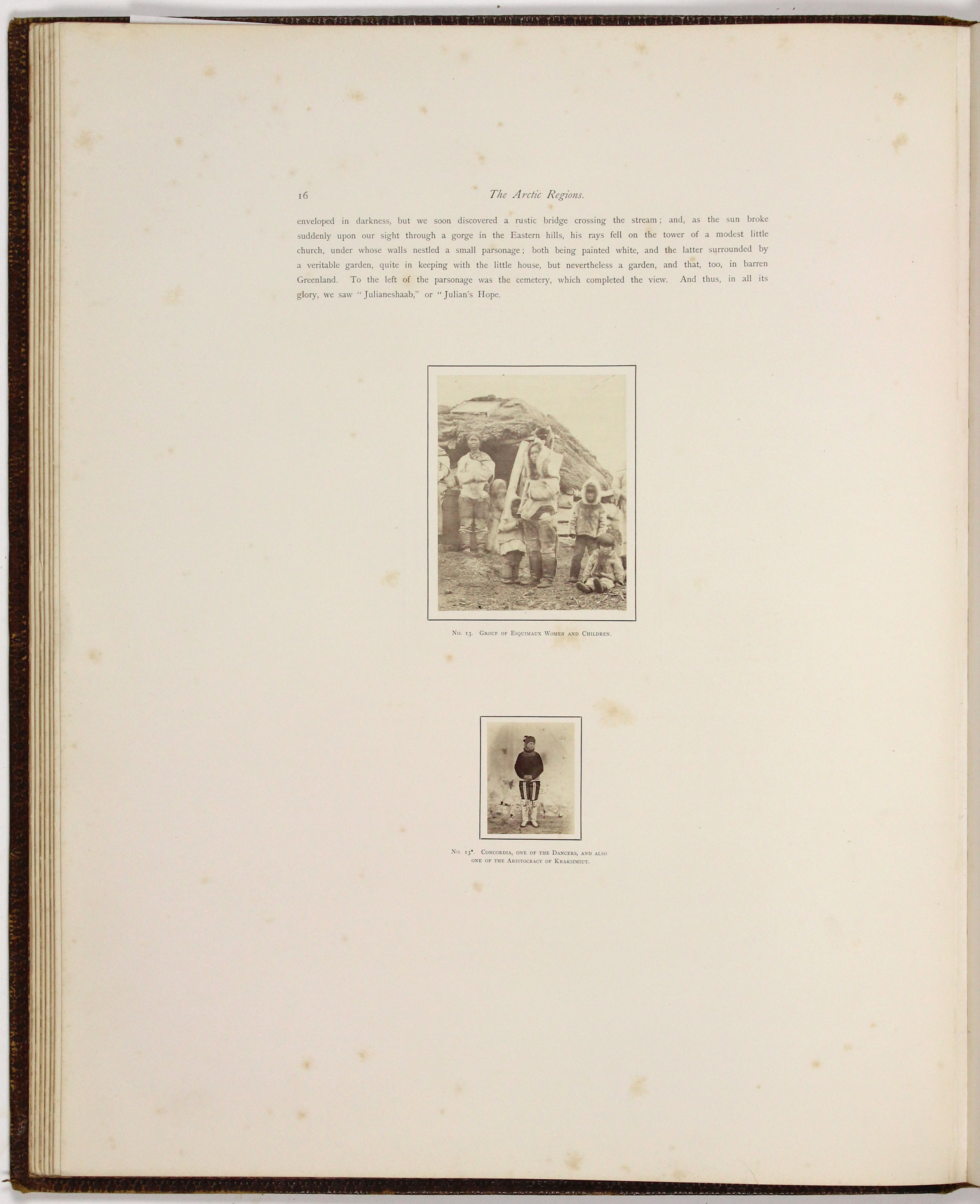
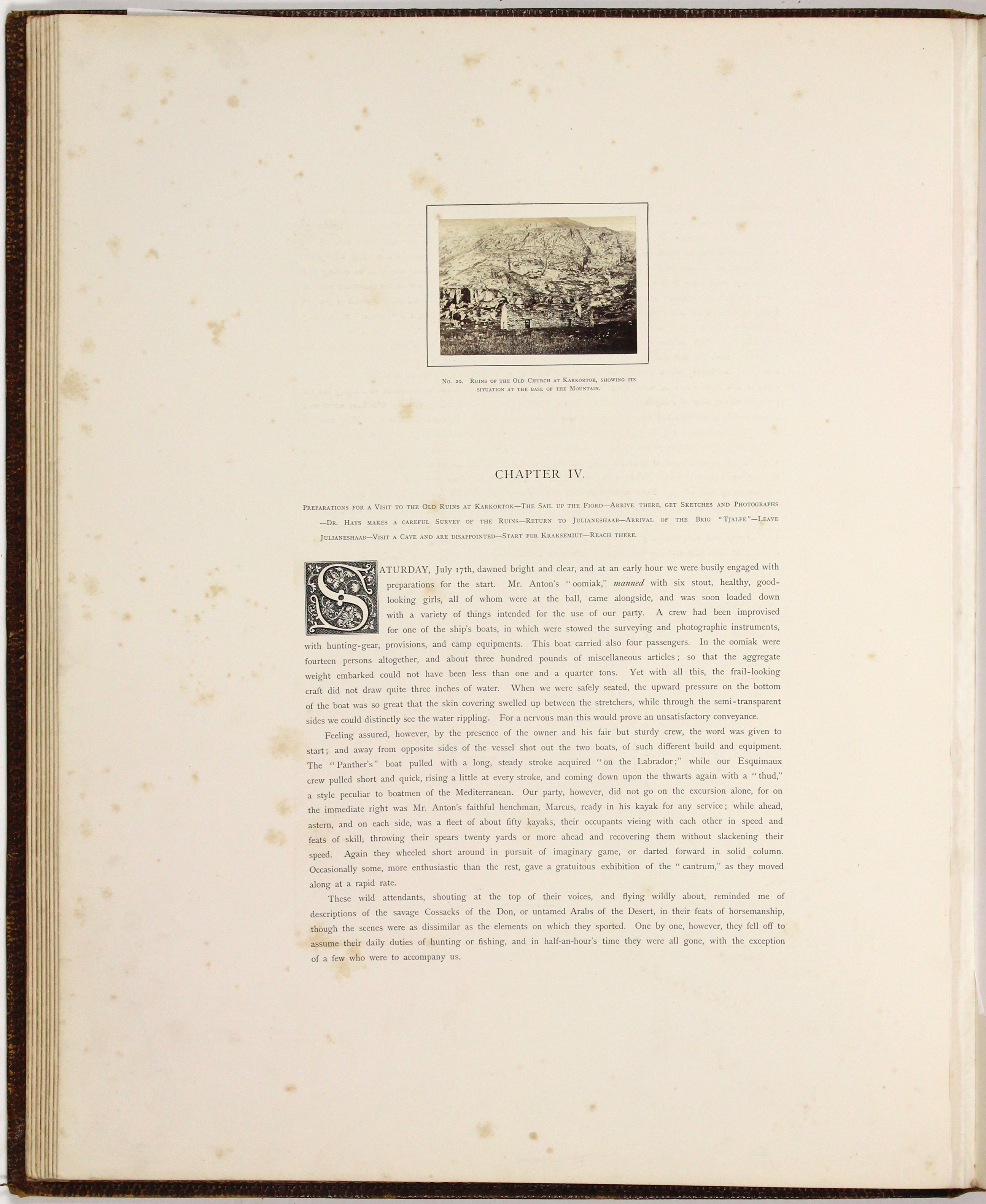
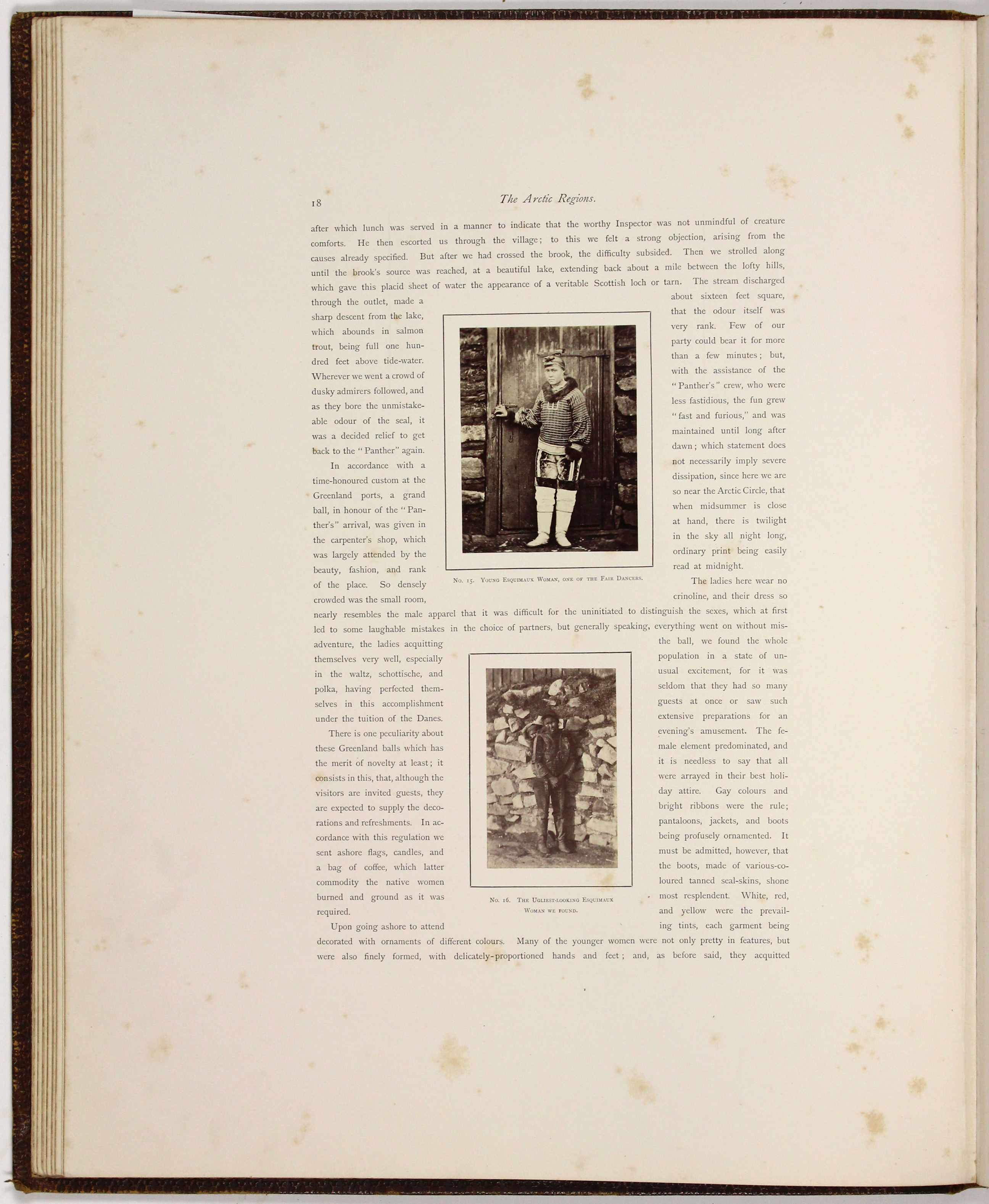
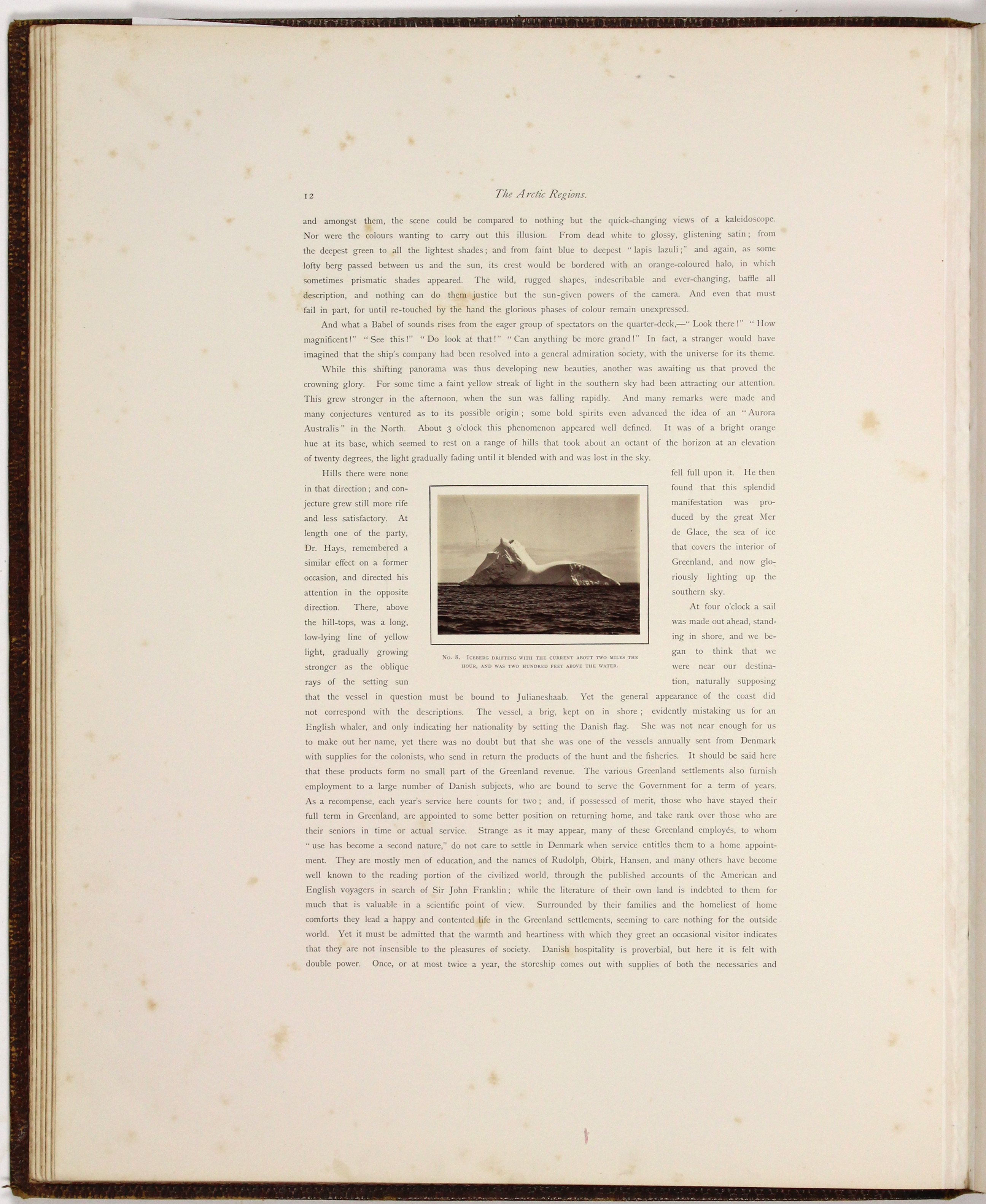
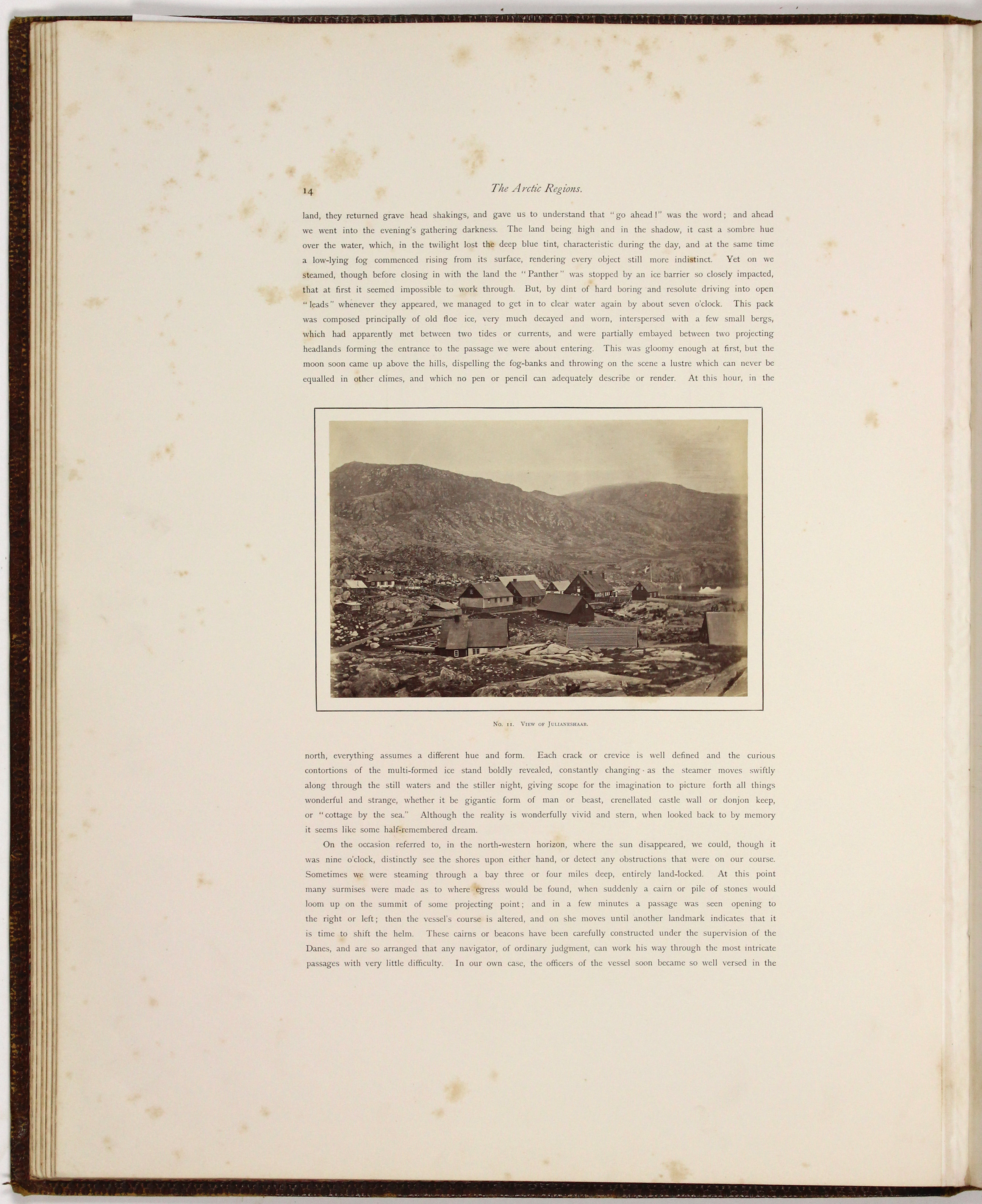
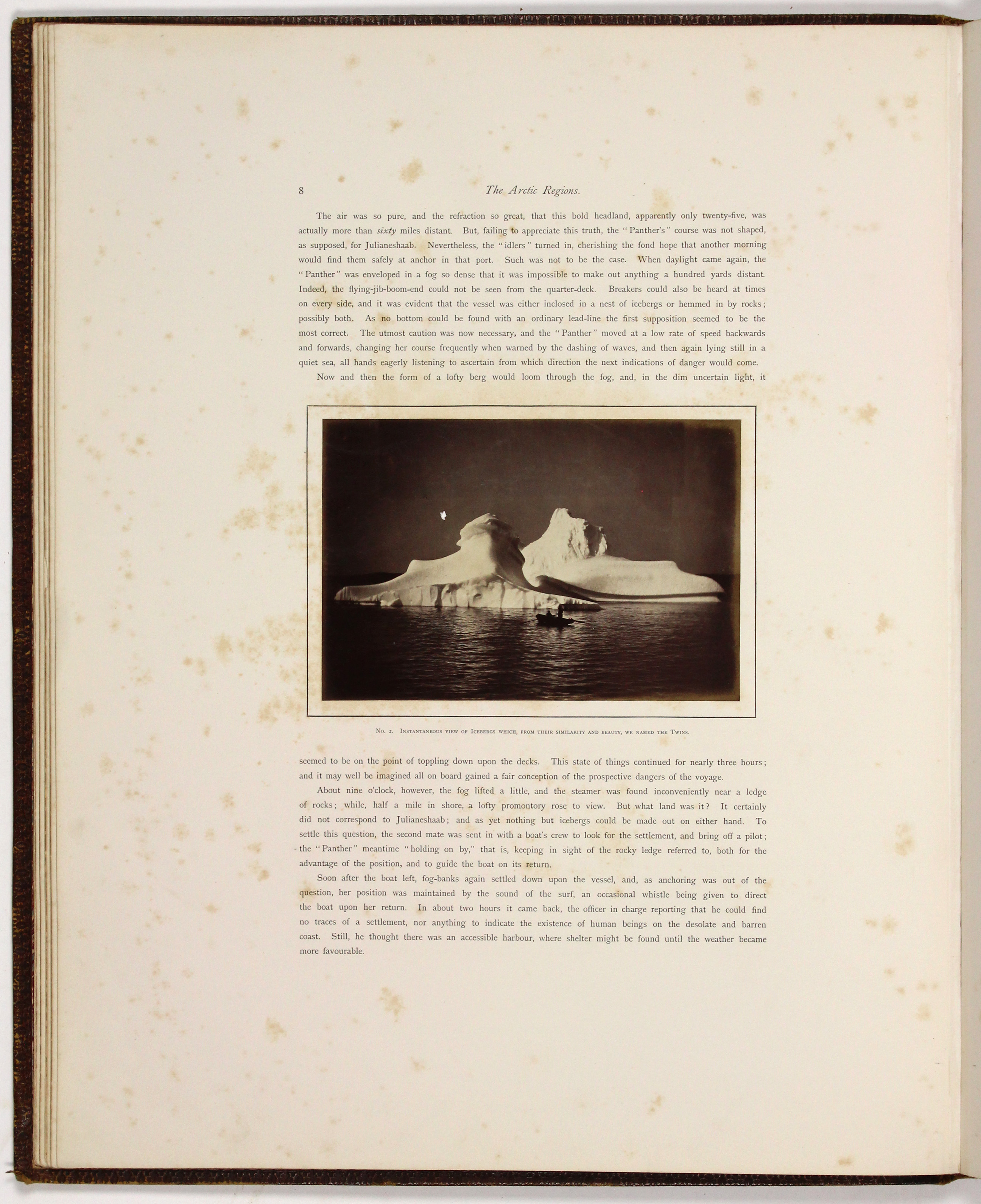
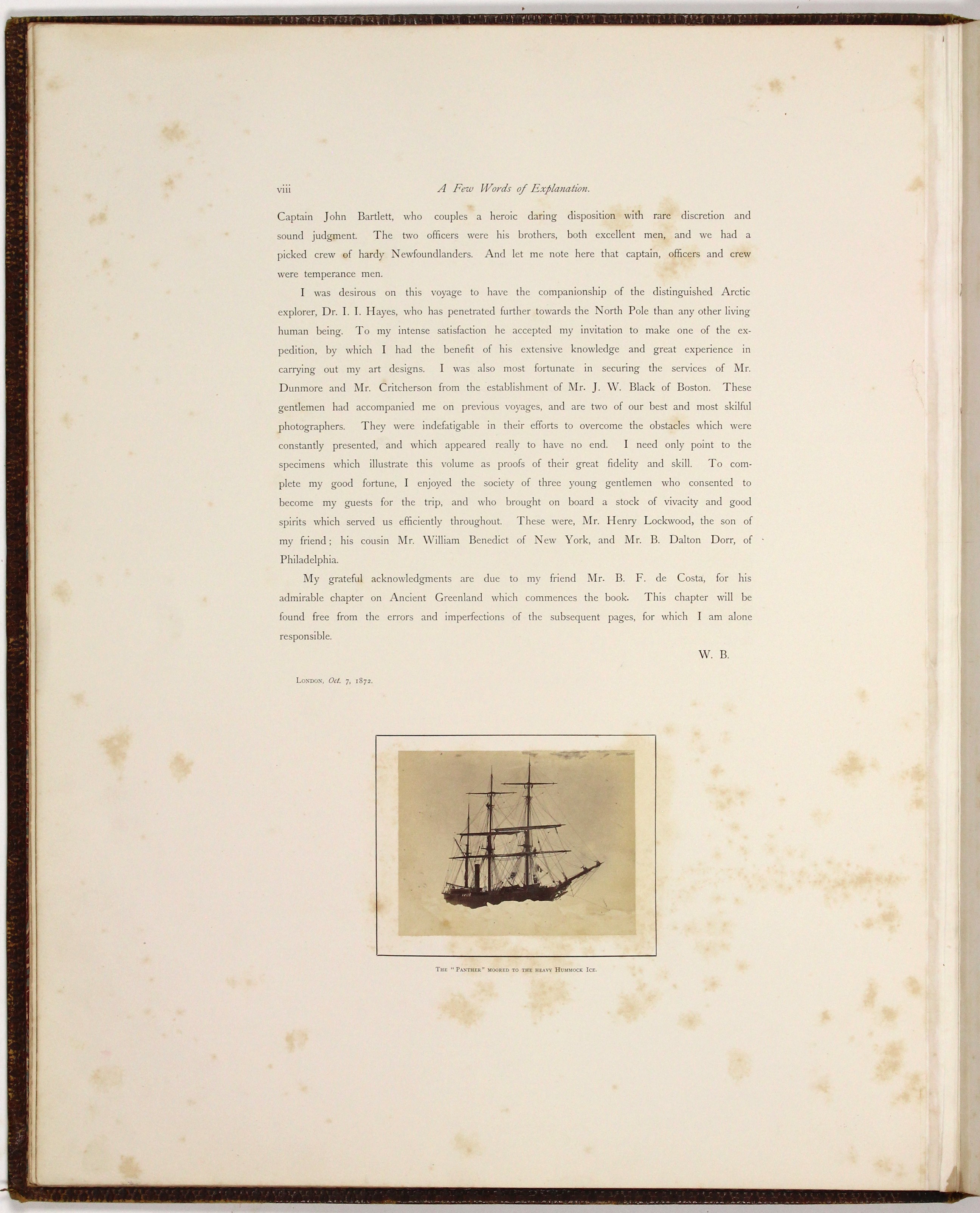
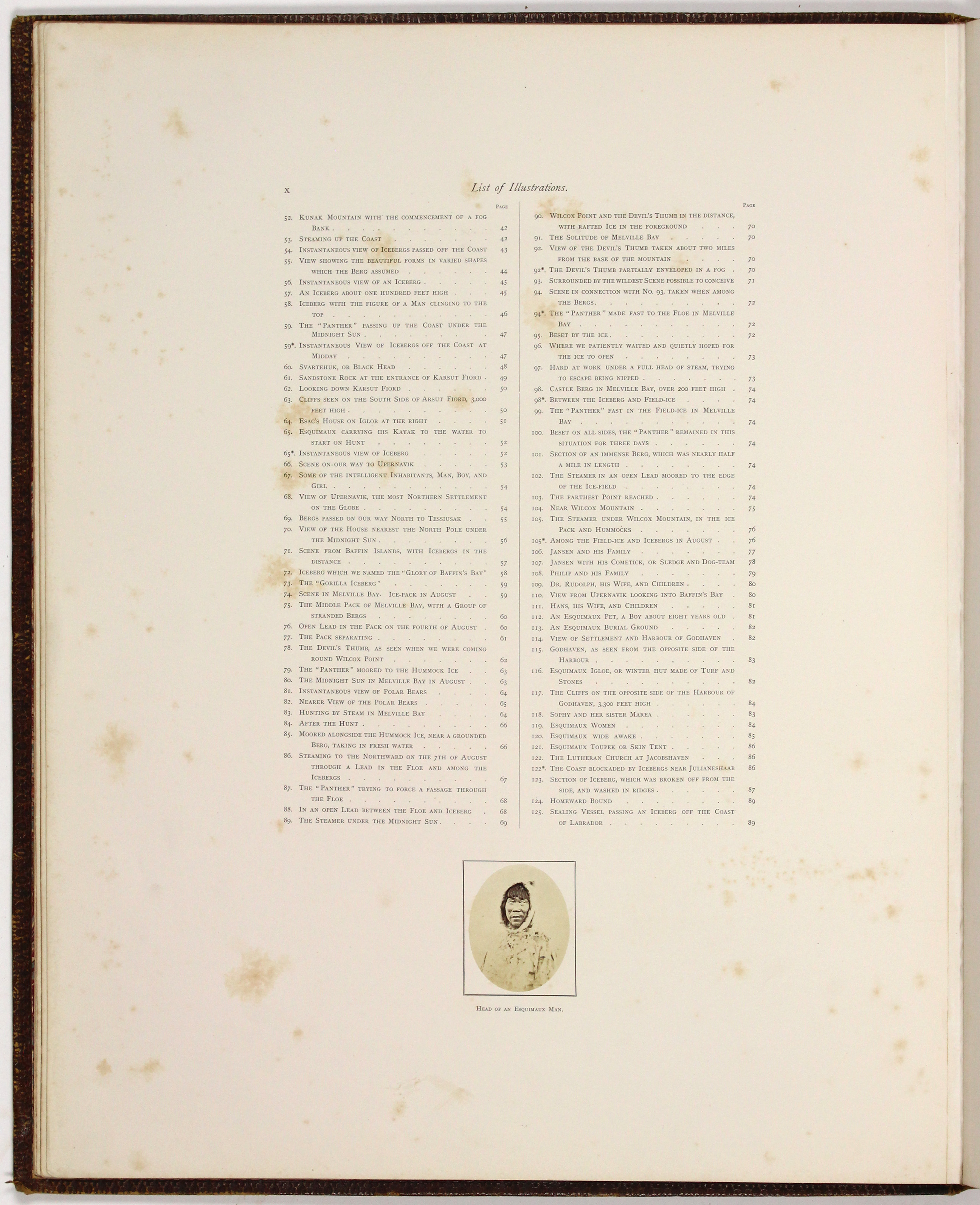

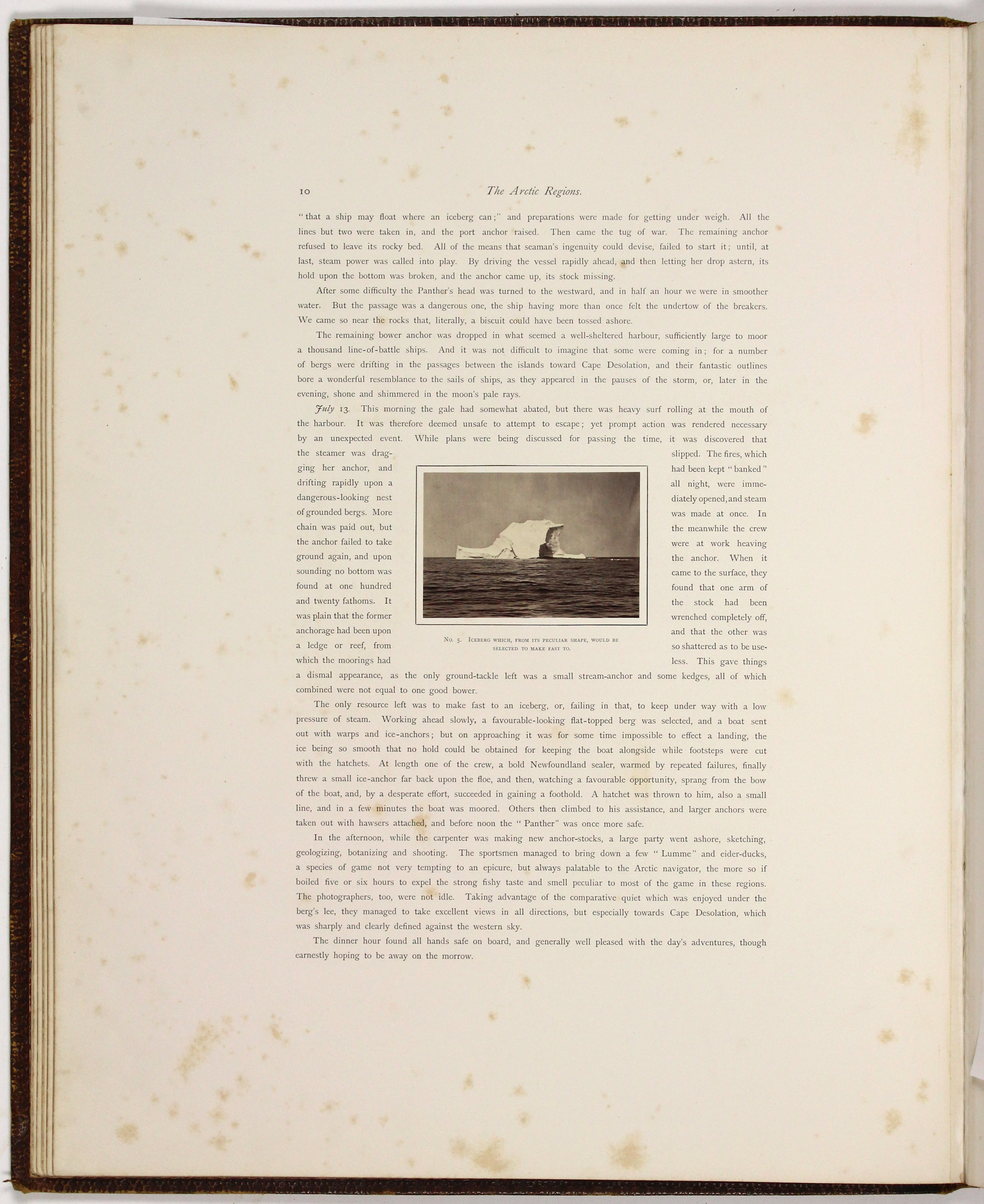
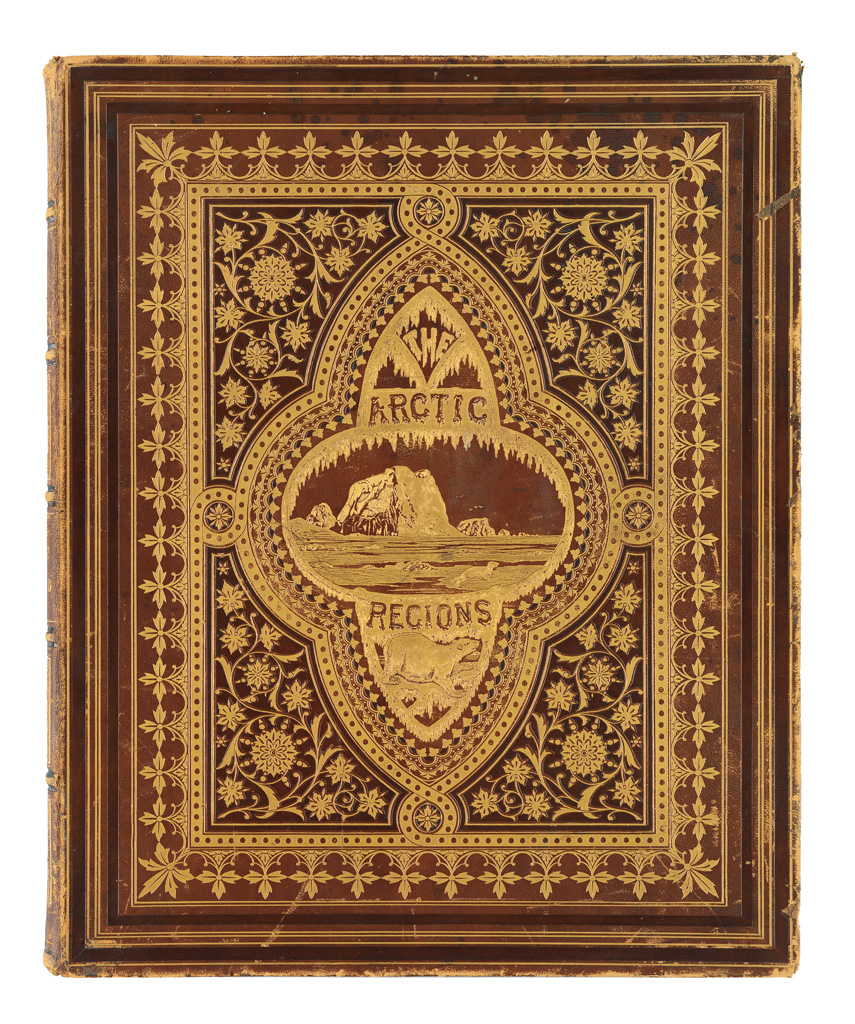


















































































































WILLIAM BRADFORD (1823-1892)
The Arctic Regions, Illustrated with Photographs Taken on an Art Expedition to Greenland.
With a descriptive narrative by Bradford and 141 mounted albumen photographs, the images measuring 2 3/4x2 1/4 inches (mounted within the text) to 12 1/2x15 1/2 inches (7x5.7 to 31.8x39.4 cm.), mounted one per page, and a double-page panorama measuring 24 1/4x38 1/2 inches (62x97.8 cm.). Folio, 24 1/2x19 1/4 inches (61.6x97.8 cm.), elaborate full gilt-pictorial and gilt-lettered morocco, with a gilded polar bear, seal, and iceberg, as well as floral borders; all edges gilt; internally crisp.
London: Chiswick Press for Sampson Low, Marston, Low and Searle, 1873
Estimate $100,000 - 150,000
William Bradford, a celebrated American painter, was also a traveler and adventurer fascinated with the Arctic landscape. His stunning volume is the result of seven expeditions to the area undertaken for the purposes of art, the most ambitious of which was made in 1869. This voyage was underwritten by Boston collector and banker LeGrand Lockwood. A sealing ship called the Panther was commissioned for the trip; the vessel covered 5000 nautical miles but was forced to turn back after being trapped for two days in pack ice. Bradford understood the power of the camera, and used the resulting images to create what is now is considered a landmark in the history of Arctic exploration, as well as the photographically illustrated book.
Sumptuously bound and profusely illustrated with original photographs, The Arctic Regions features 141 spectacular albumen photographs, including a 2-part panorama, which set the book apart from contemporaneous accounts illustrated with engravings. The text, which combines sober scientific observation with romantic hyperbole, serves as an invaluable descriptive aid for scientists, adventurers, and environmentalists working today.
Working under Bradford's supervision were John Dunmore and George Crichterson, photographers associated with the prominent Boston-based firm James Wallace Black Studio. Although they are credited as the official photographers, it is now believed that Bradford himself may have taken many of the pictures, which feature remarkable scenes of icebergs and ice floes in addition to pictures of indigenous people ("Eskimaux") and moored ships.
A source of great interest throughout the nineteenth century, the Arctic captured the public imagination, manifesting itself through a widespread desire for images, stories, and interpretations of this remote and desolate landscape. The images in The Arctic Region depict views of an alien, frozen land and its exotic inhabitants. Today, there is a new recognition for the arctic landscape's vulnerability, and how its disappearance will effect coastal regions and islands throughout the world.
In the text, Bradford recounts a voyage in which he worked under adverse conditions. The harsh weather often caused major setbacks, delays, and annoyances among the ship's crew. Dunmore also described a dangerous instance in which their equipment and lives were at stake: "We sailed about sixty miles to the mouth of a glacier, where the icebergs break off, to take some views. Just as we were landing, a large berg broke off which sent the water up twenty feet all over us, and washed away collodion, developing glass, green baize, etc., and came very near taking us along with them." Yet, despite these challenges, they produced remarkable photographs of a stunning, and now endangered, landscape. The volume is a tribute to Bradford's heroic vision and the photographers who skillfully worked in the most difficult of circumstances.
Goldschmidt and Naef, The Truthful Lens (The Grolier Club), no. 24.
Gernsheim, Incunabula of British Photograhic Literature, S70.
Parr and Badger, The Photobook: A History Volume I (Phaidon), p. 31.





